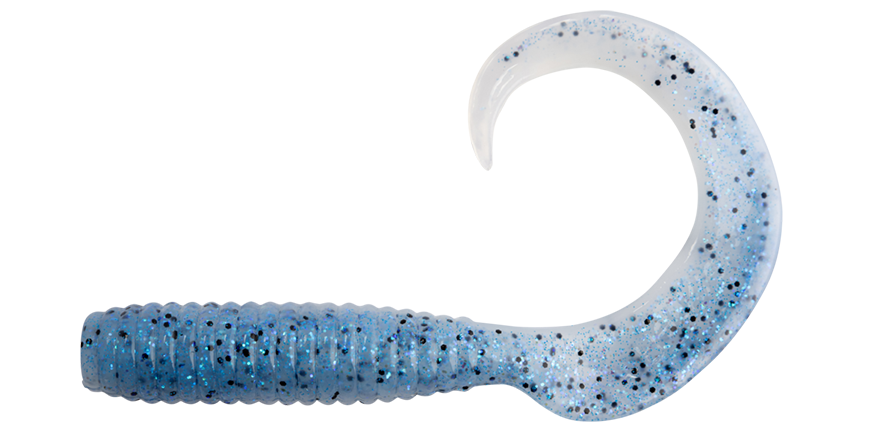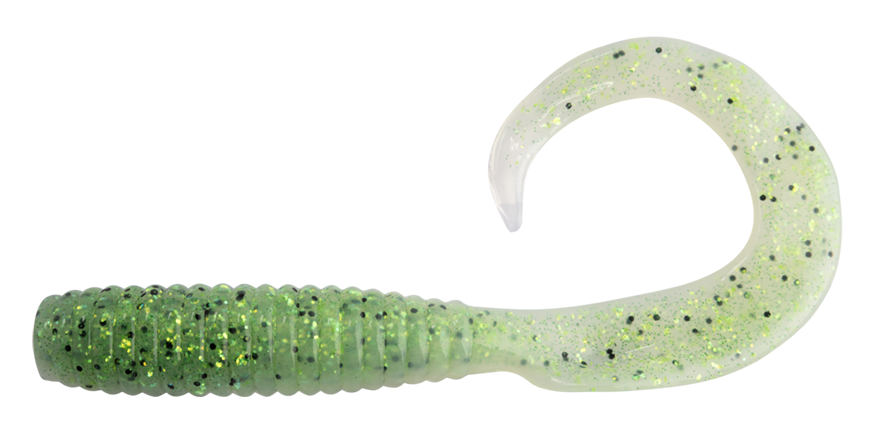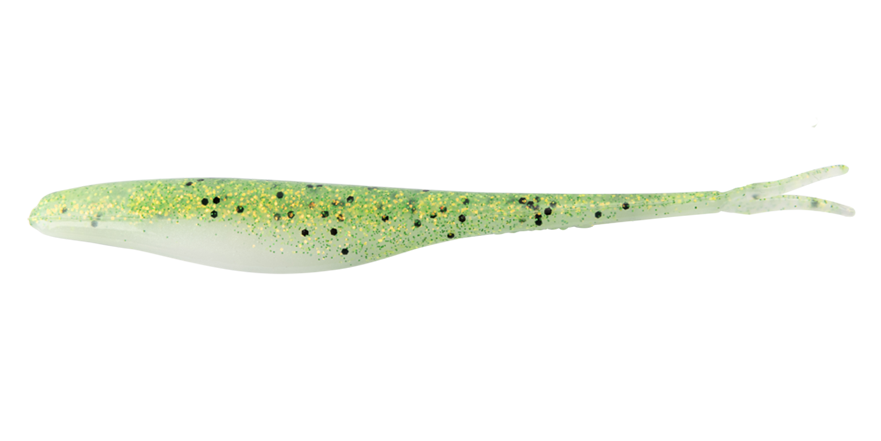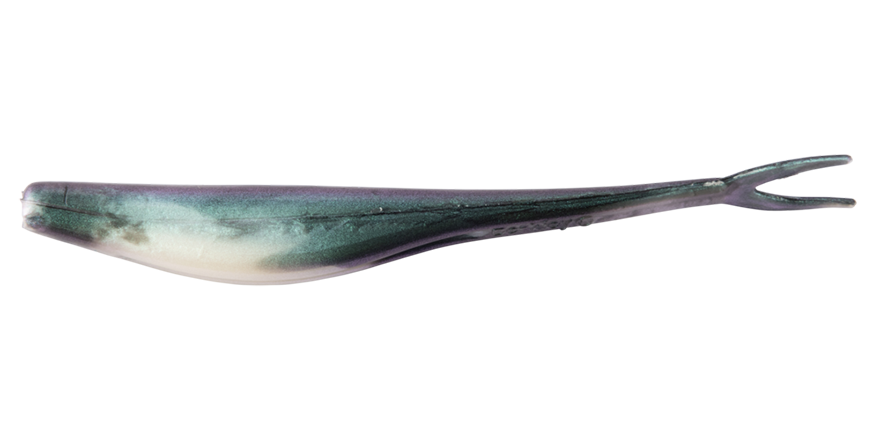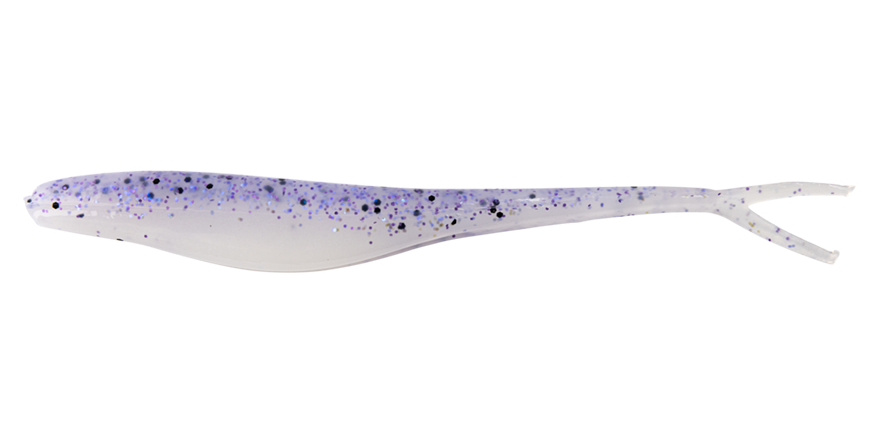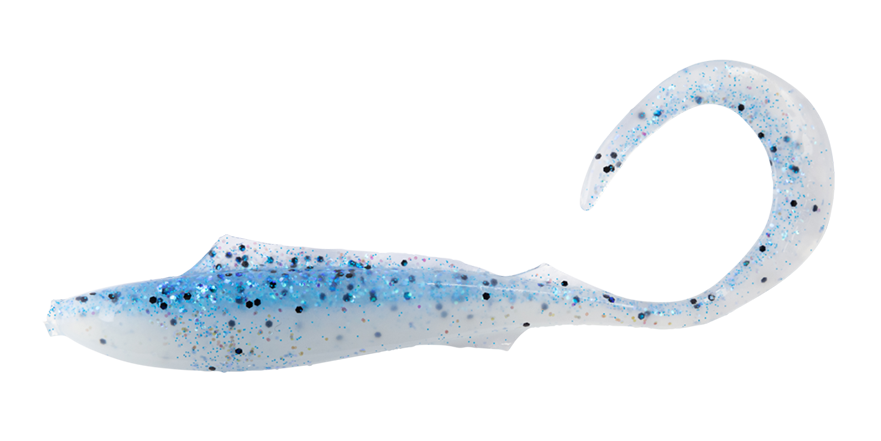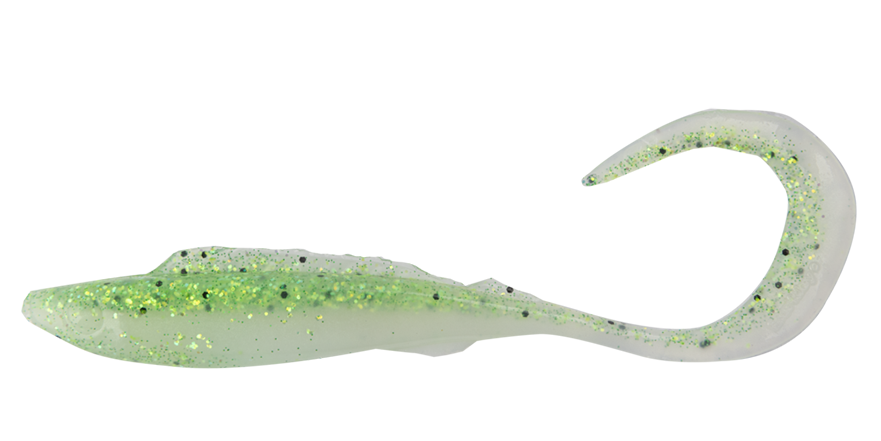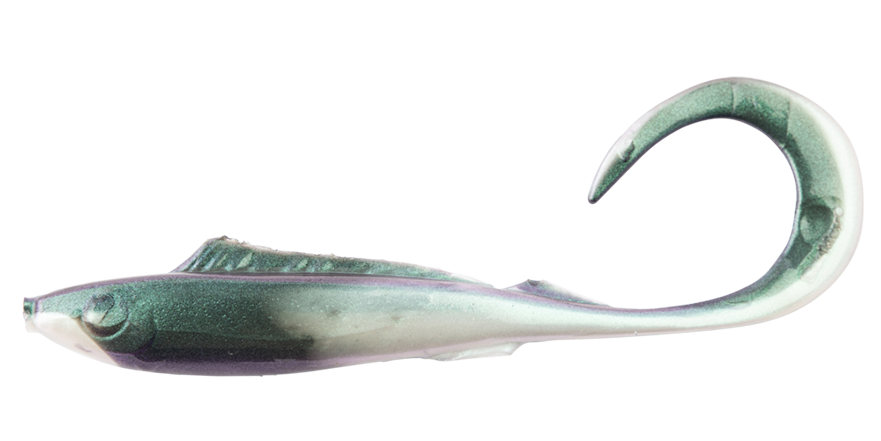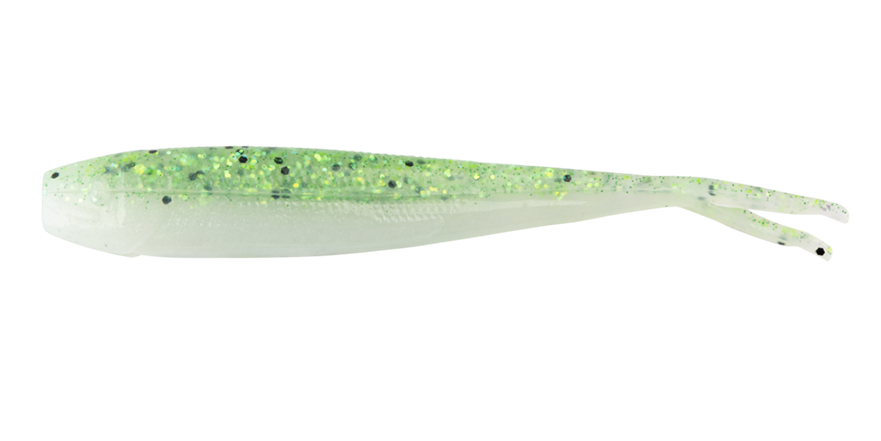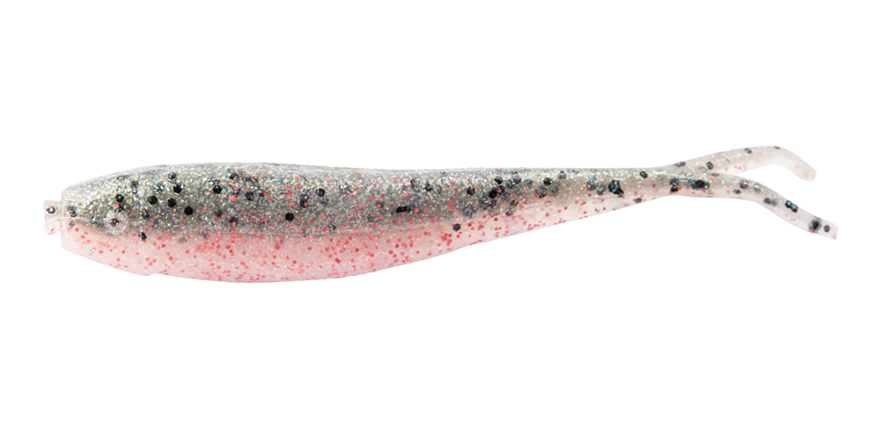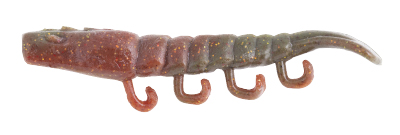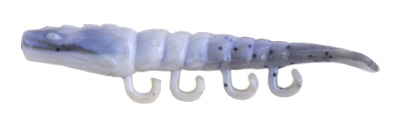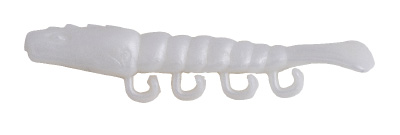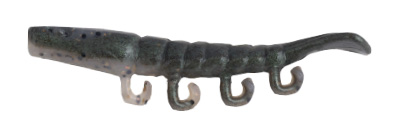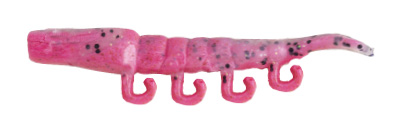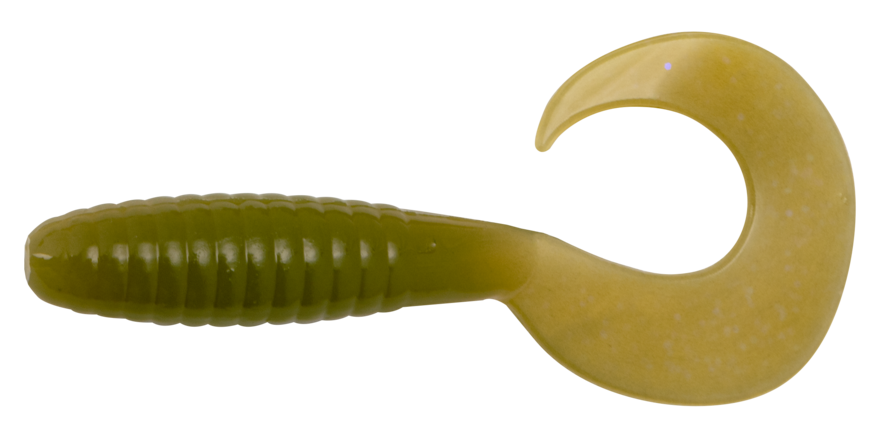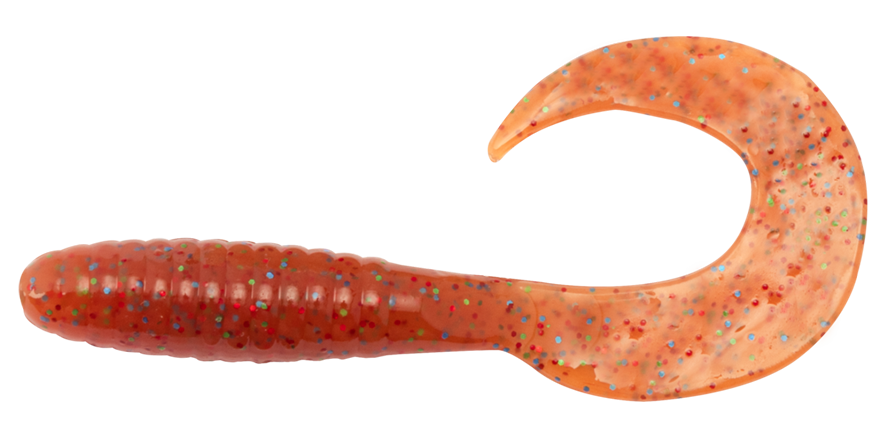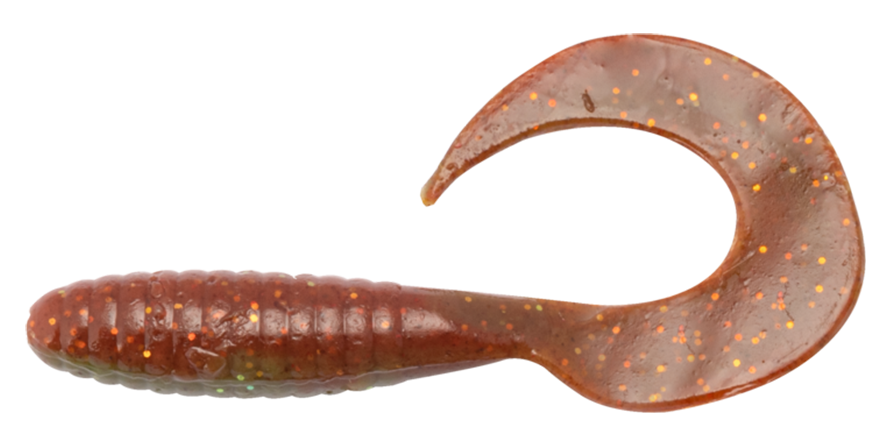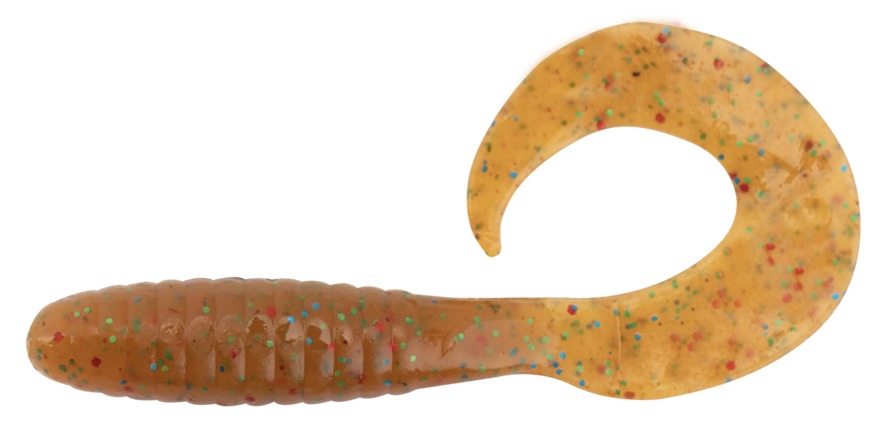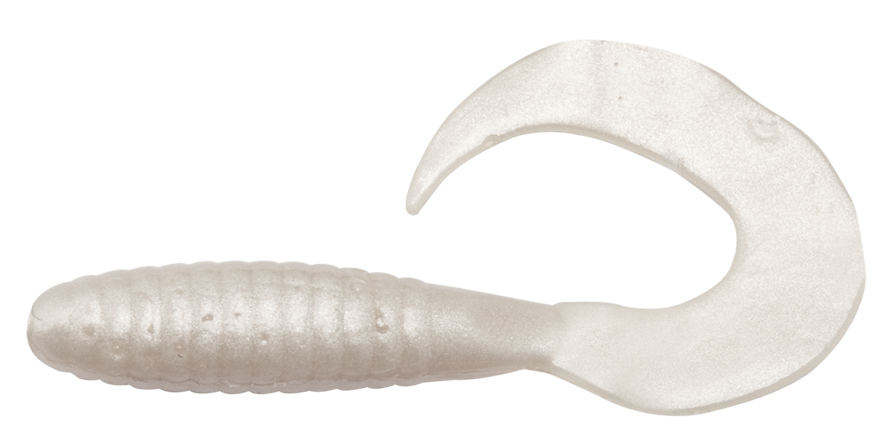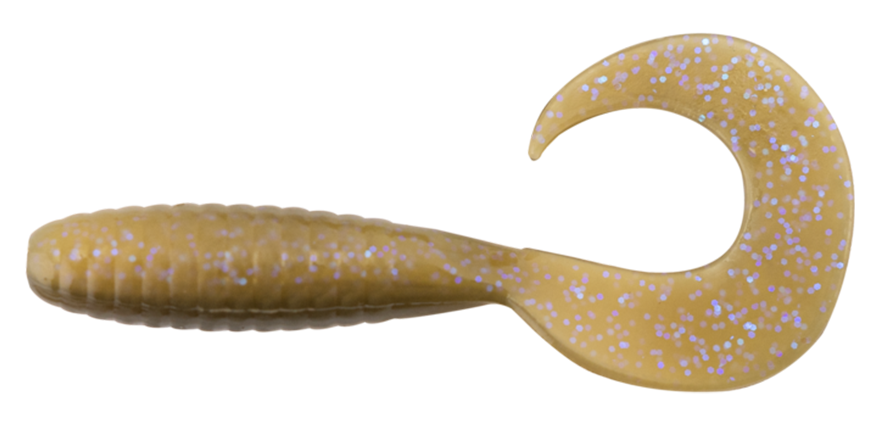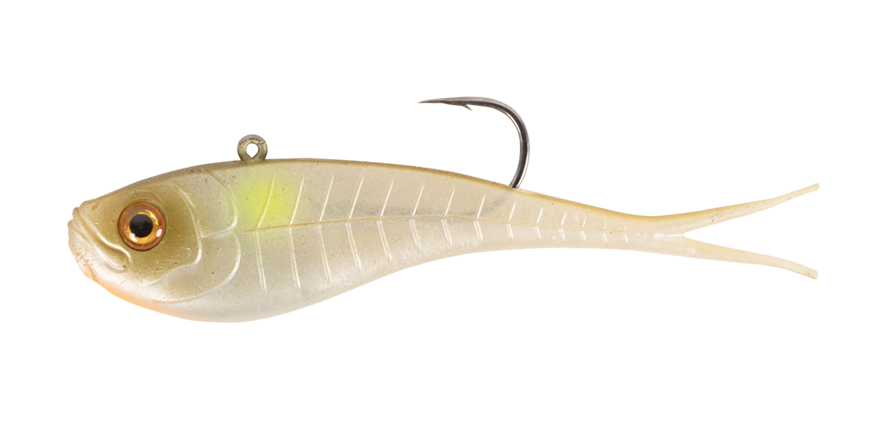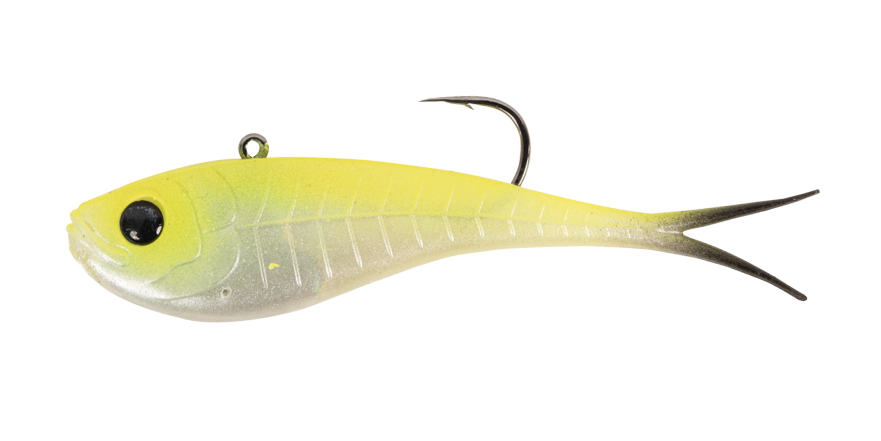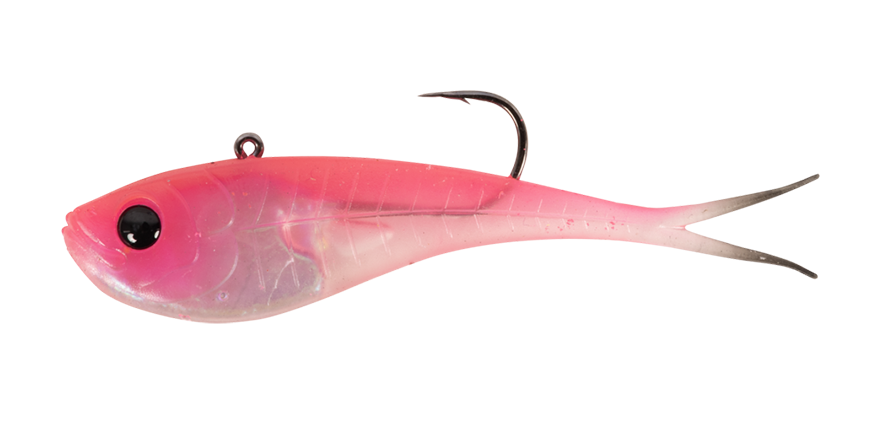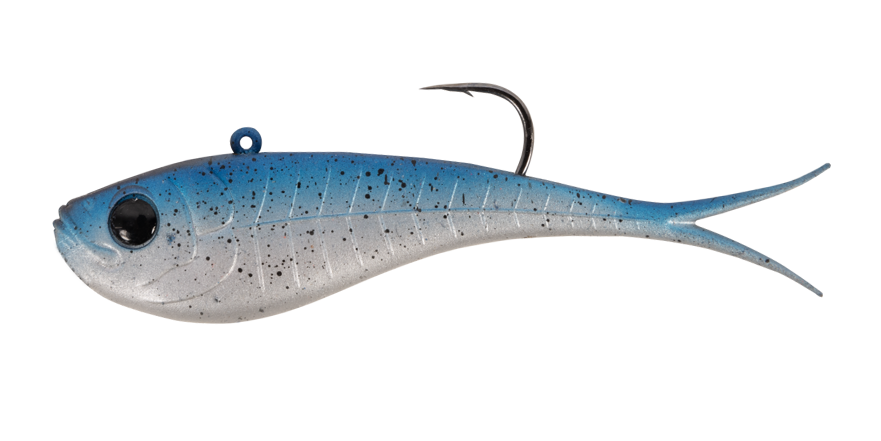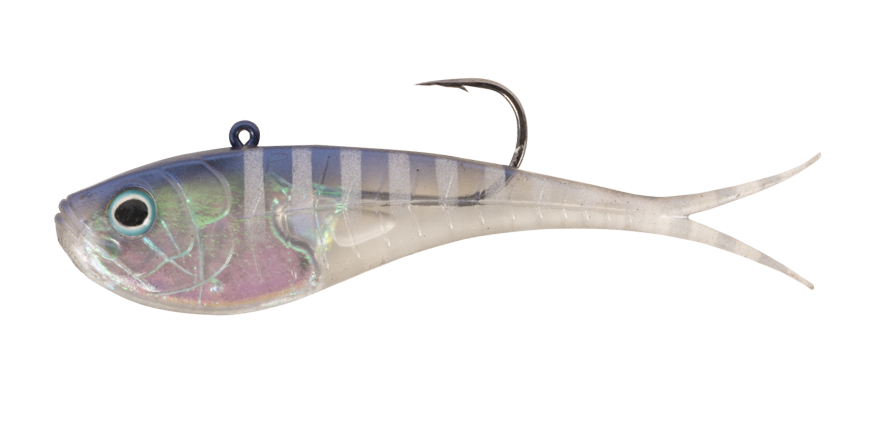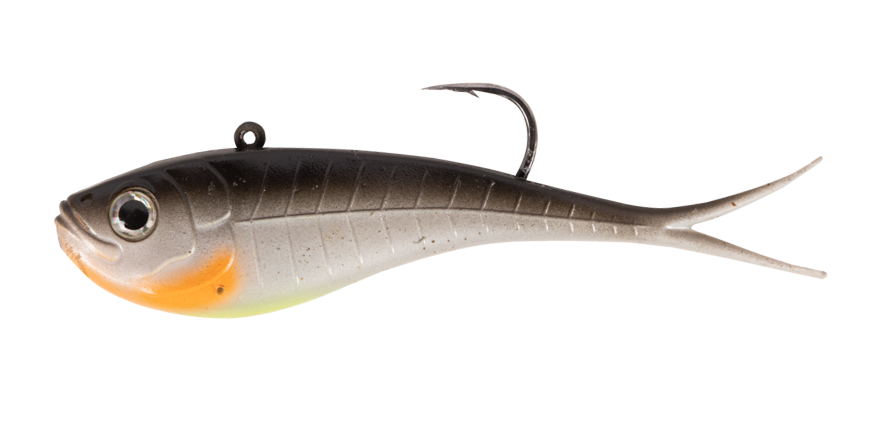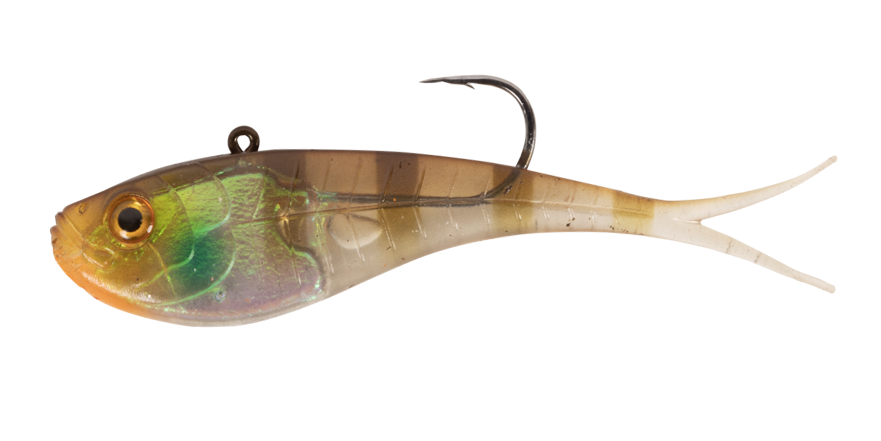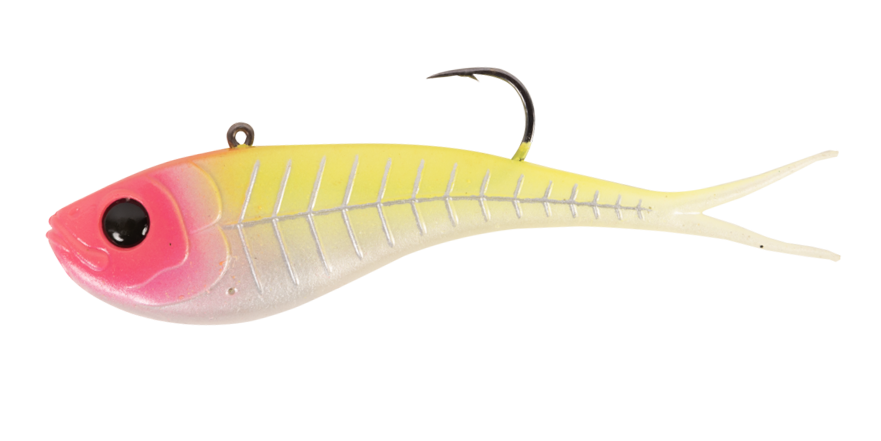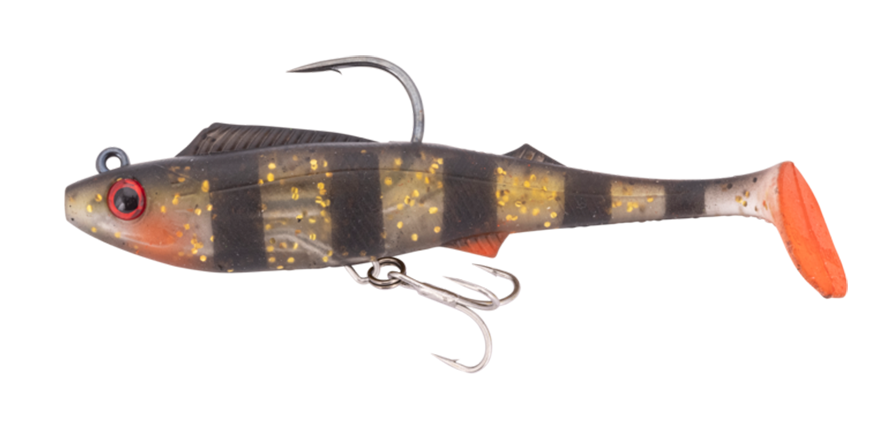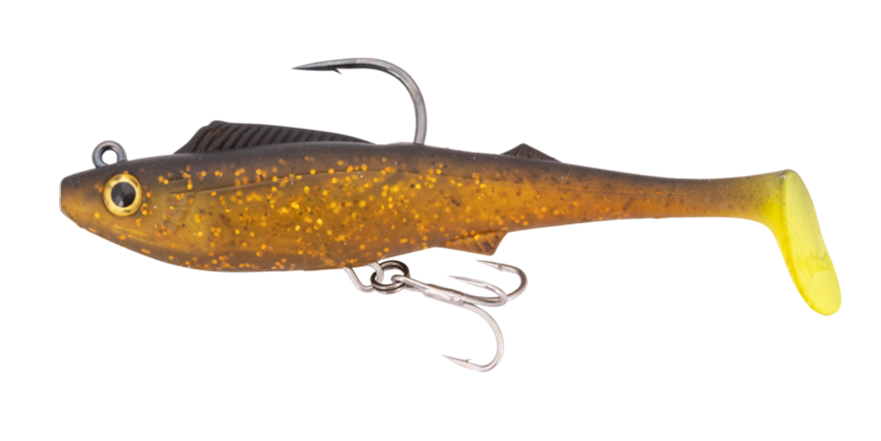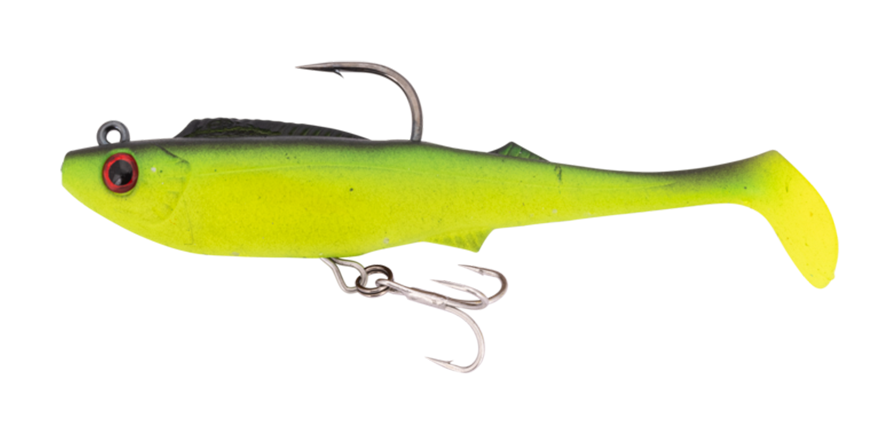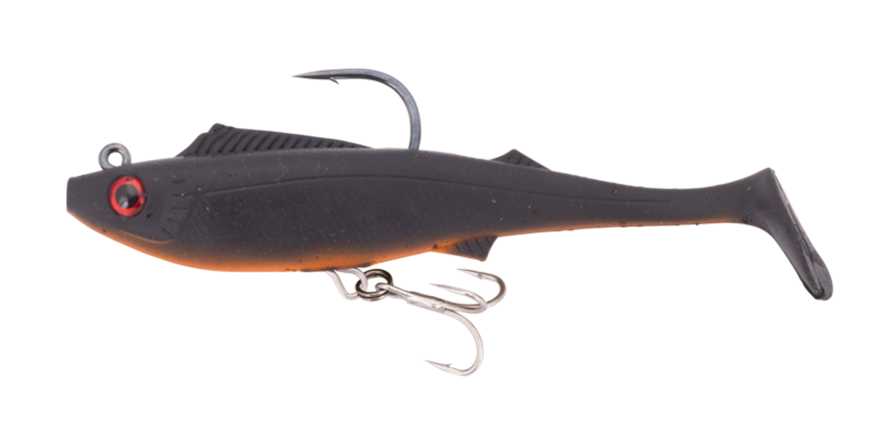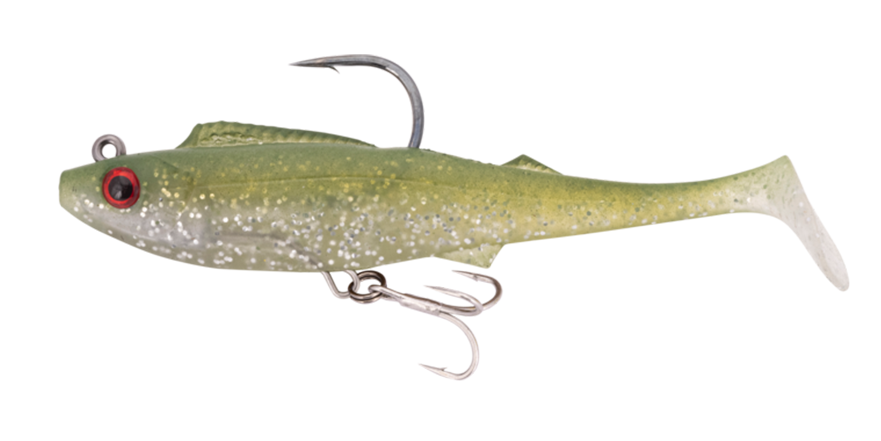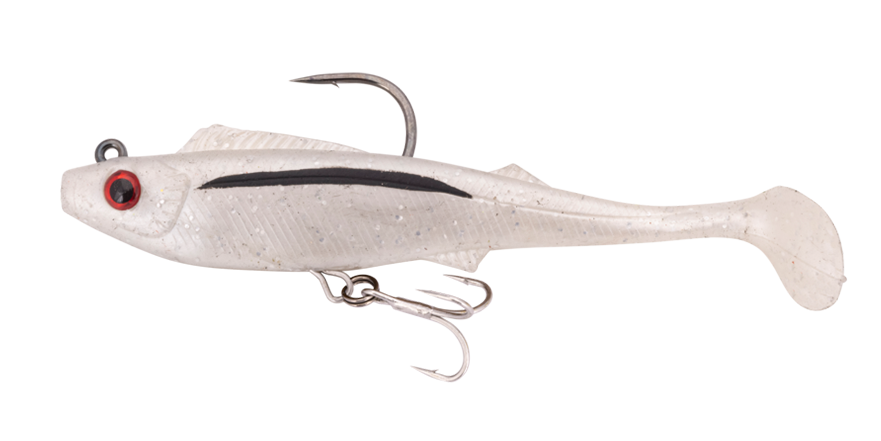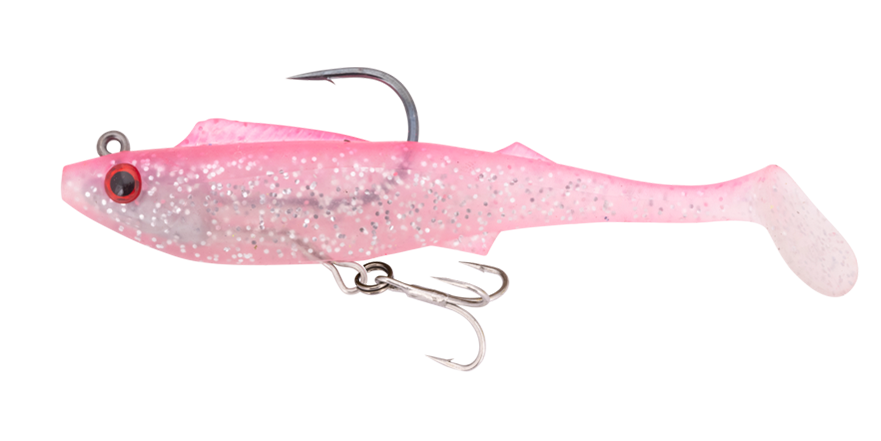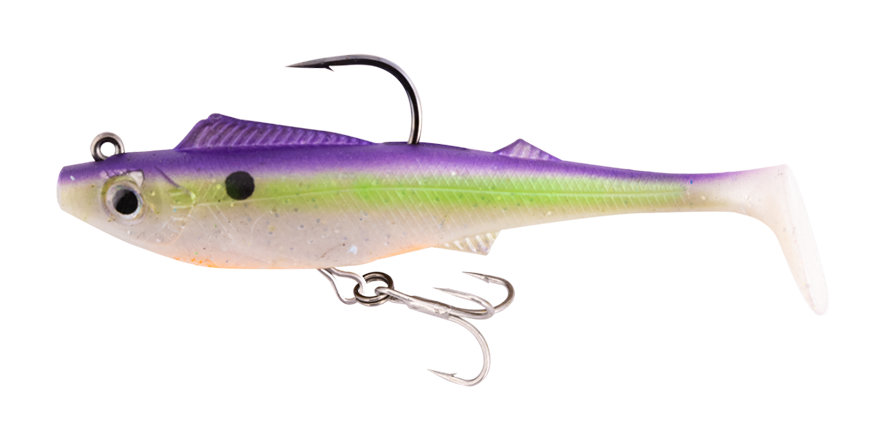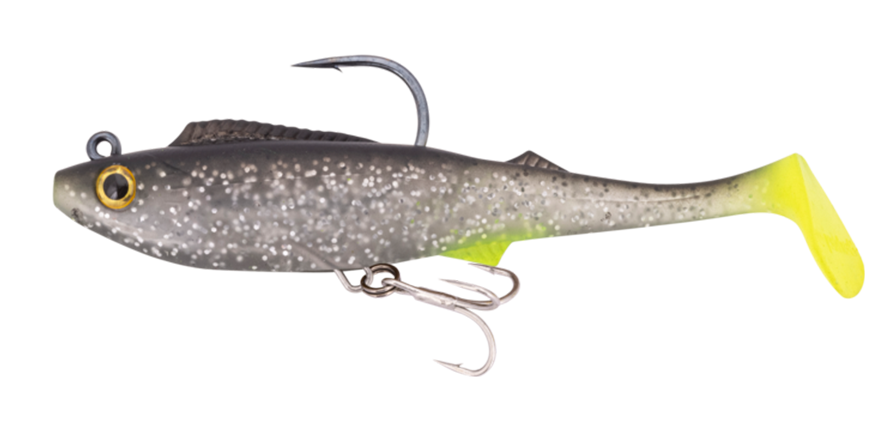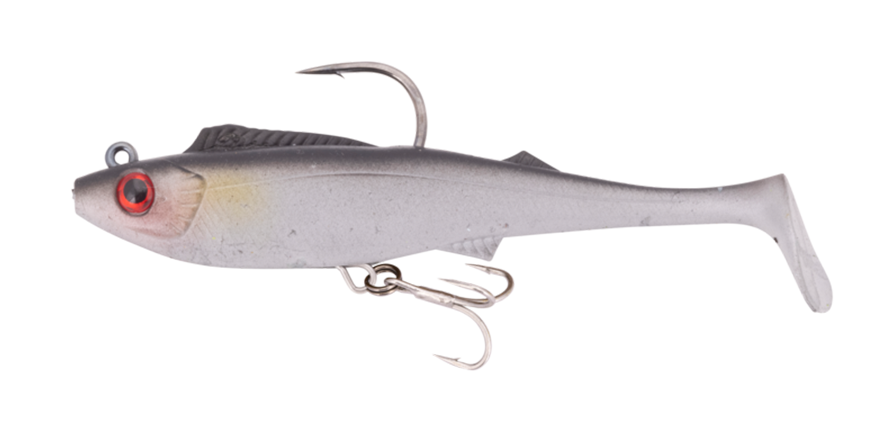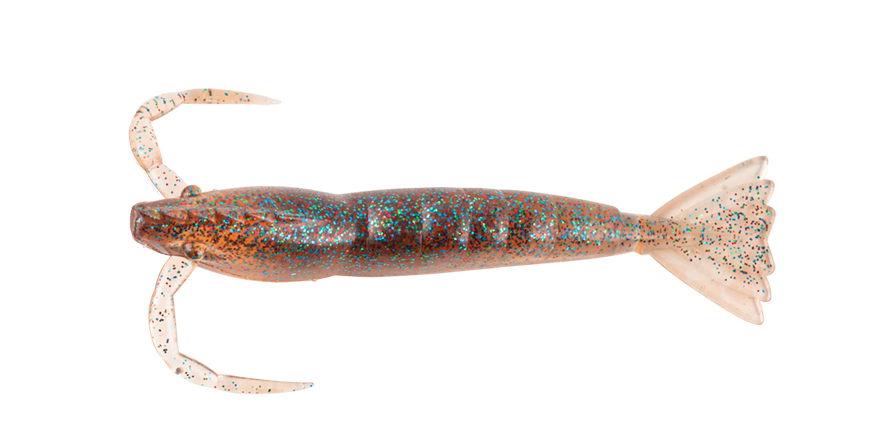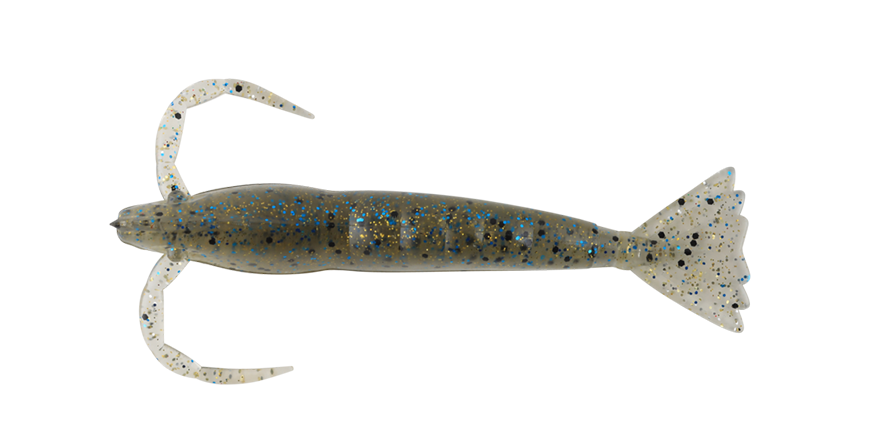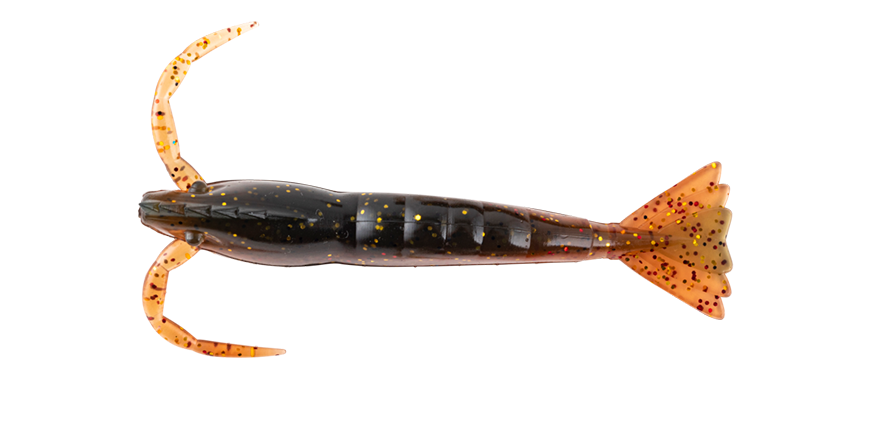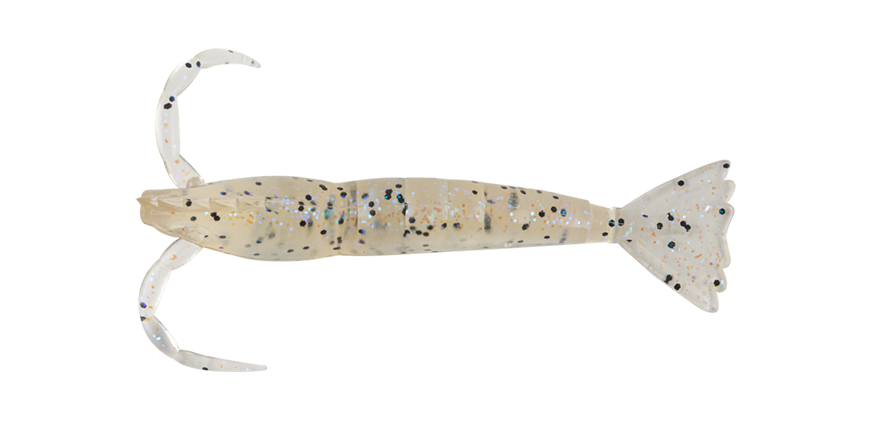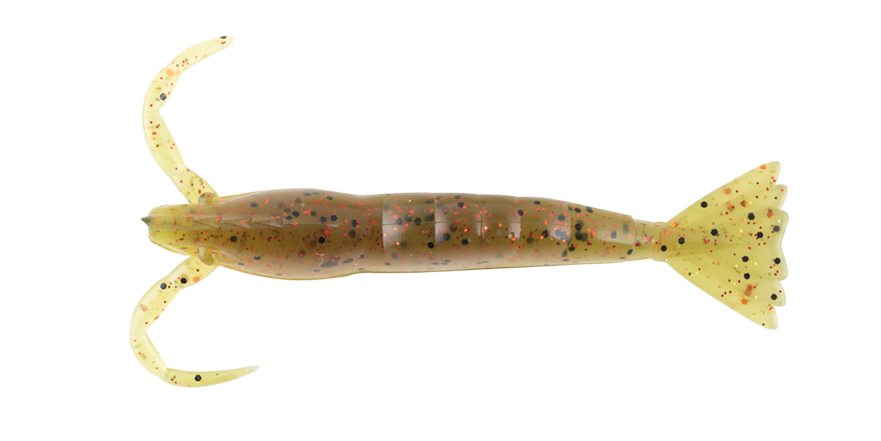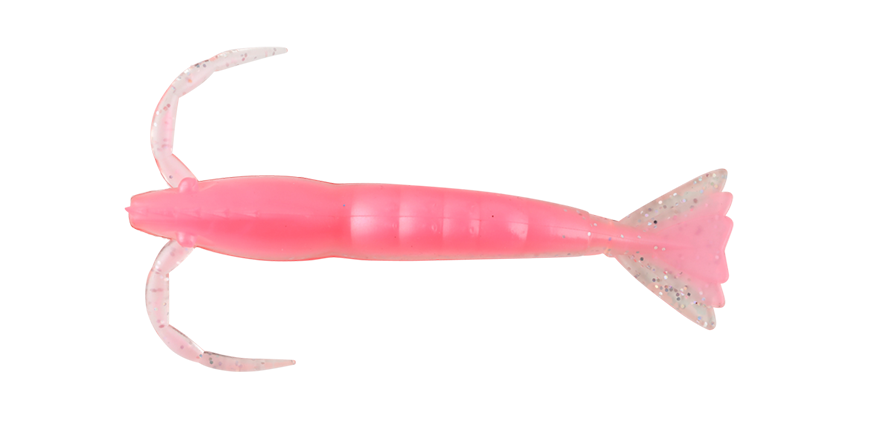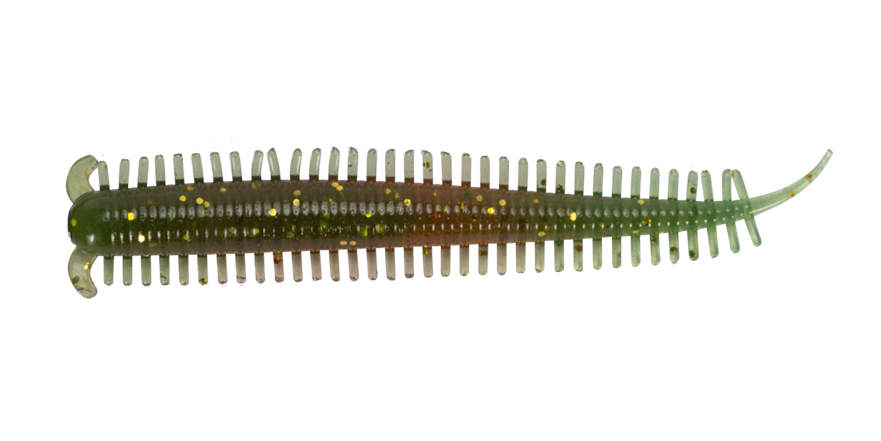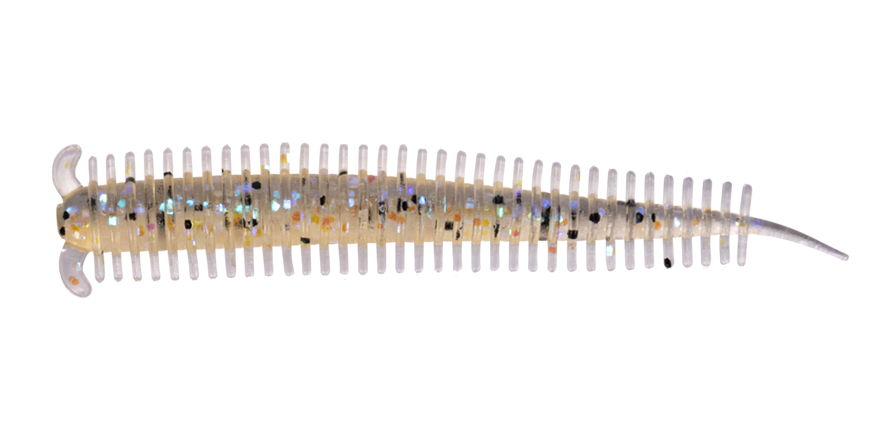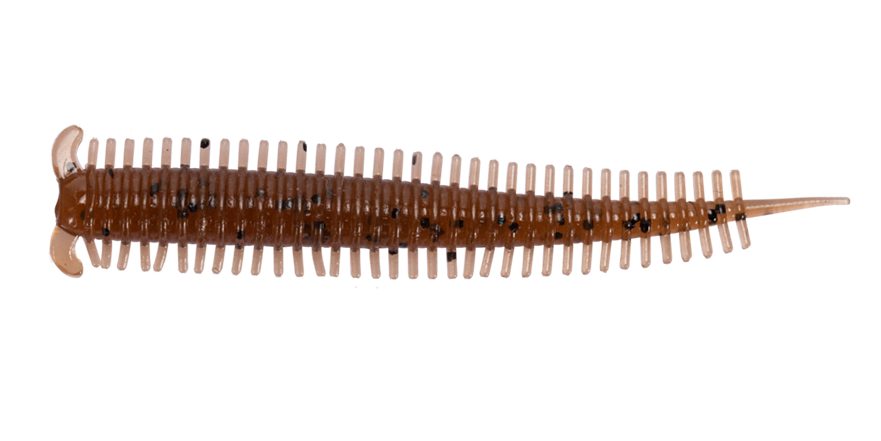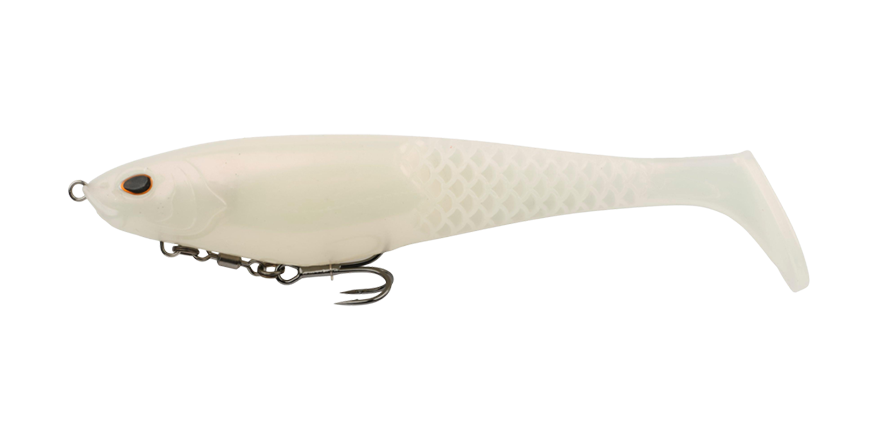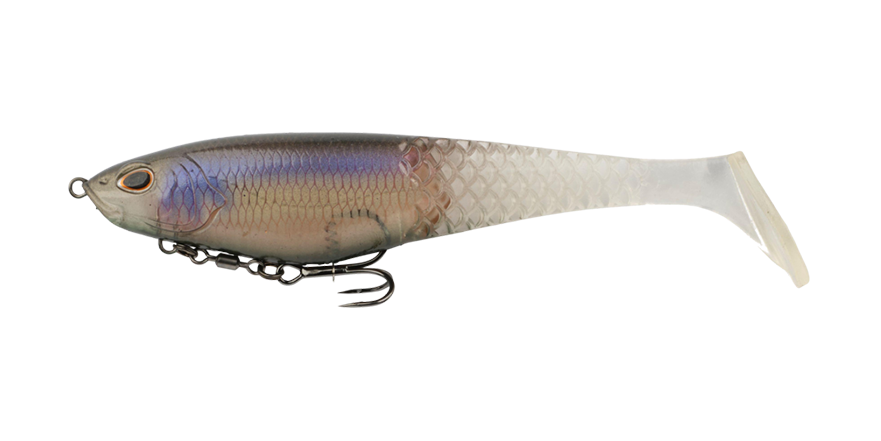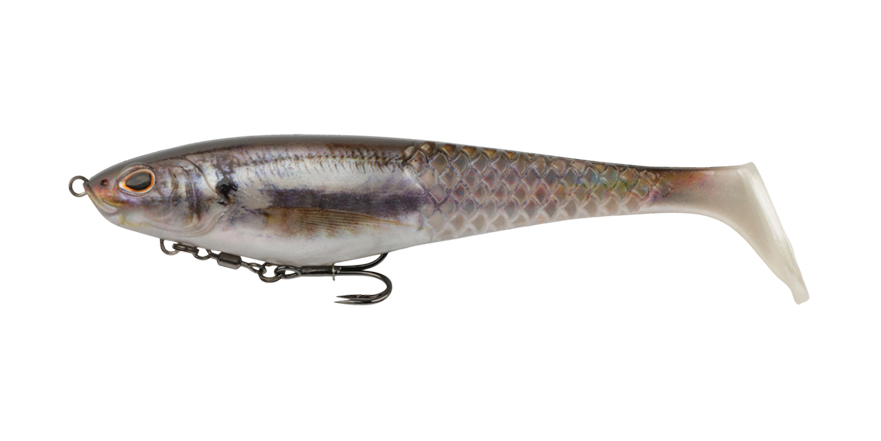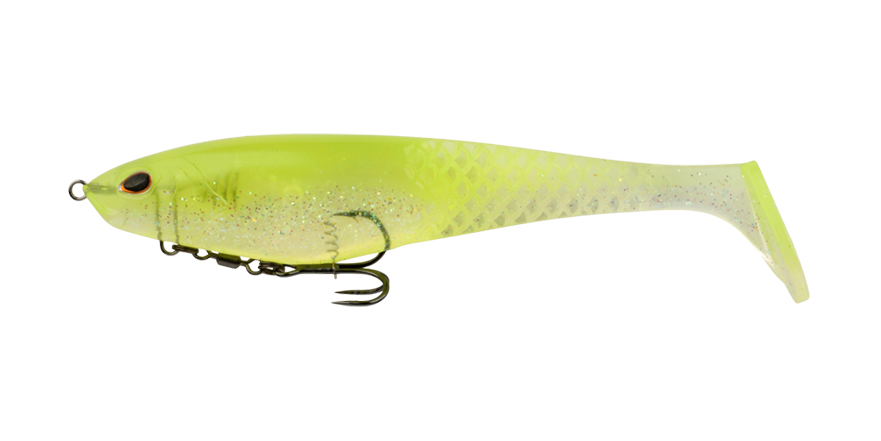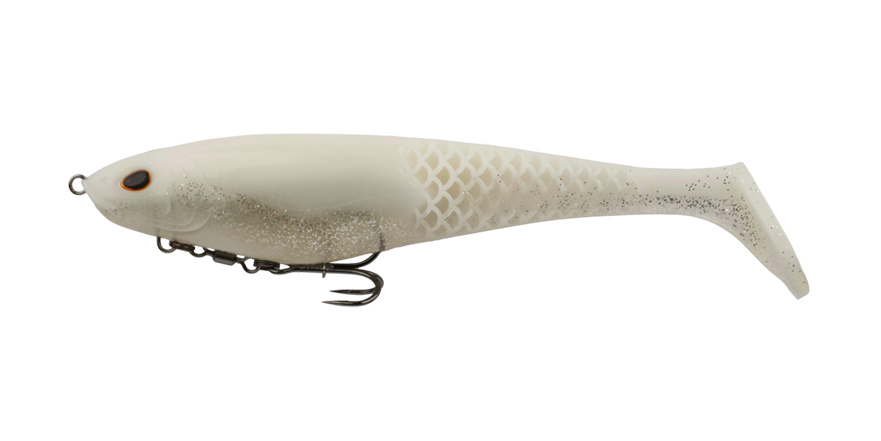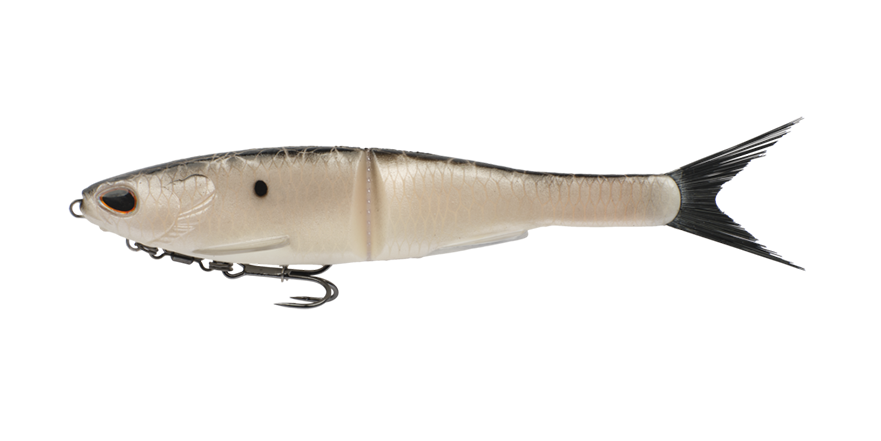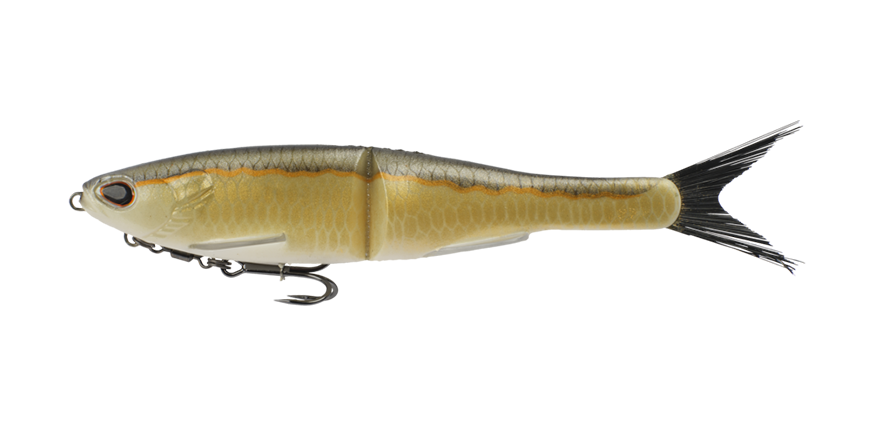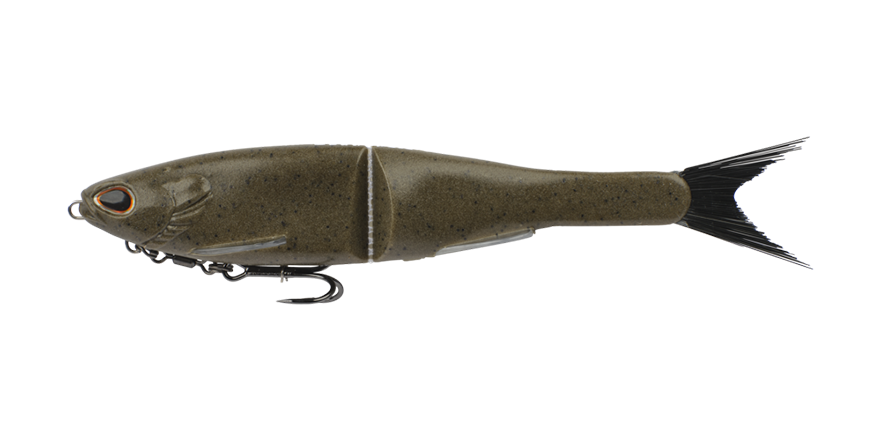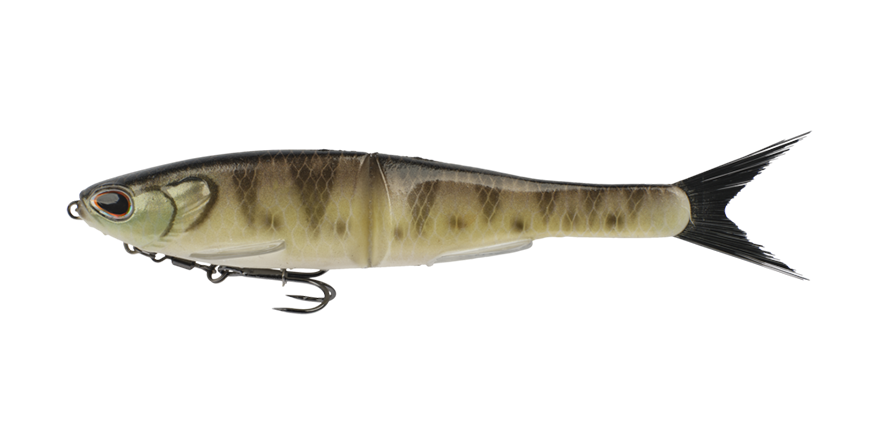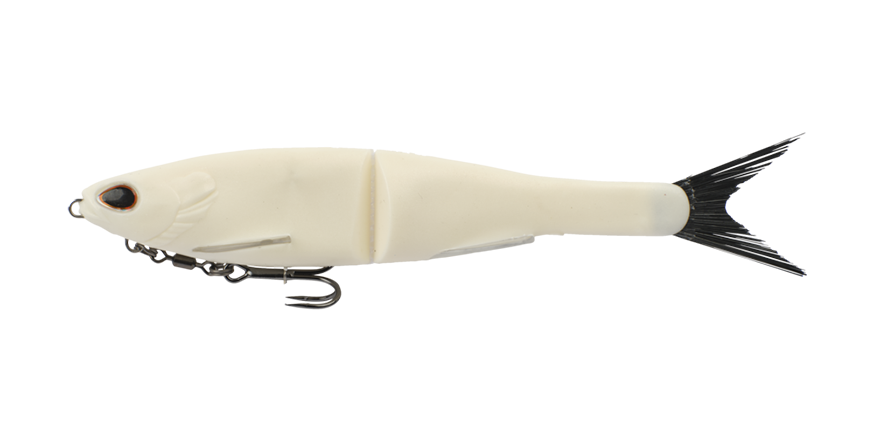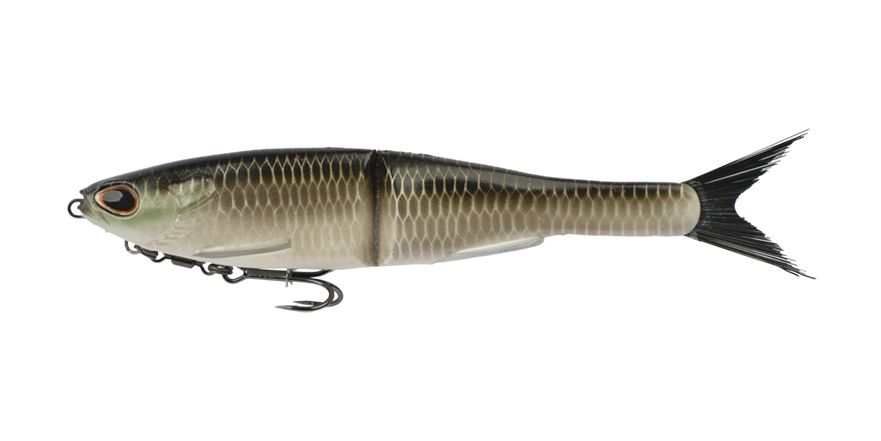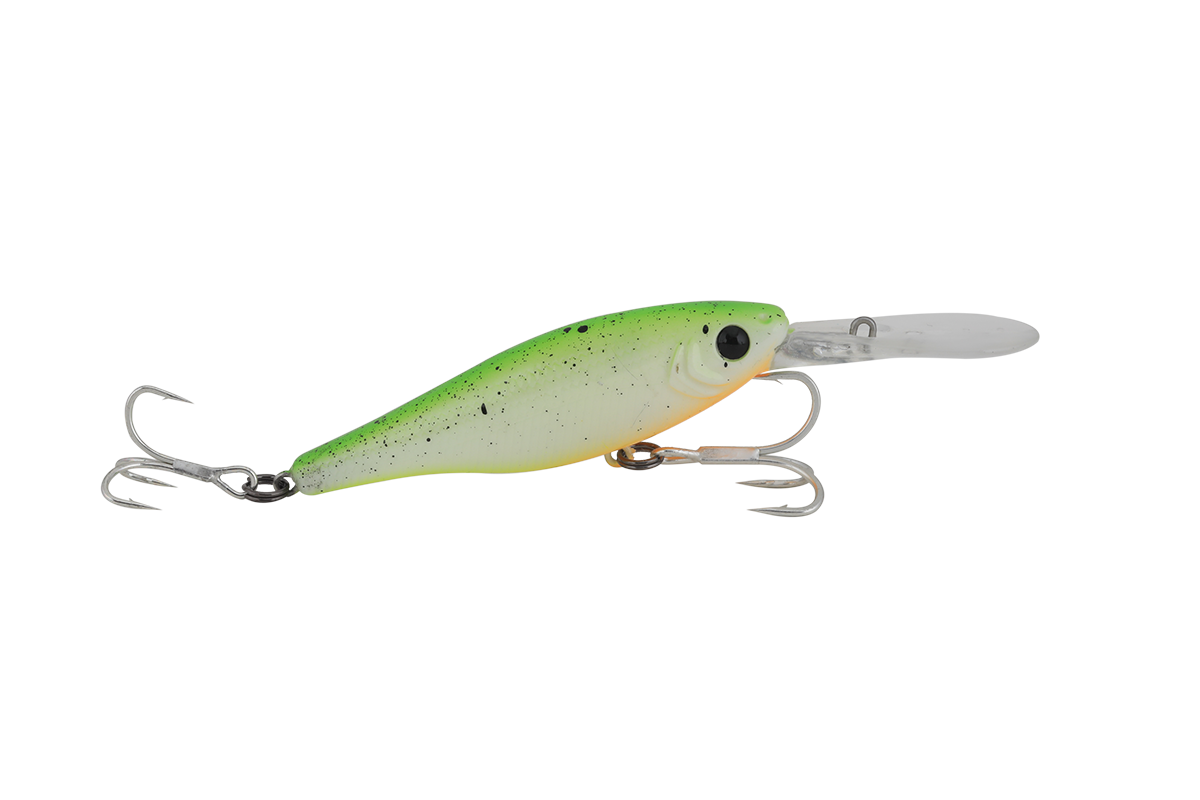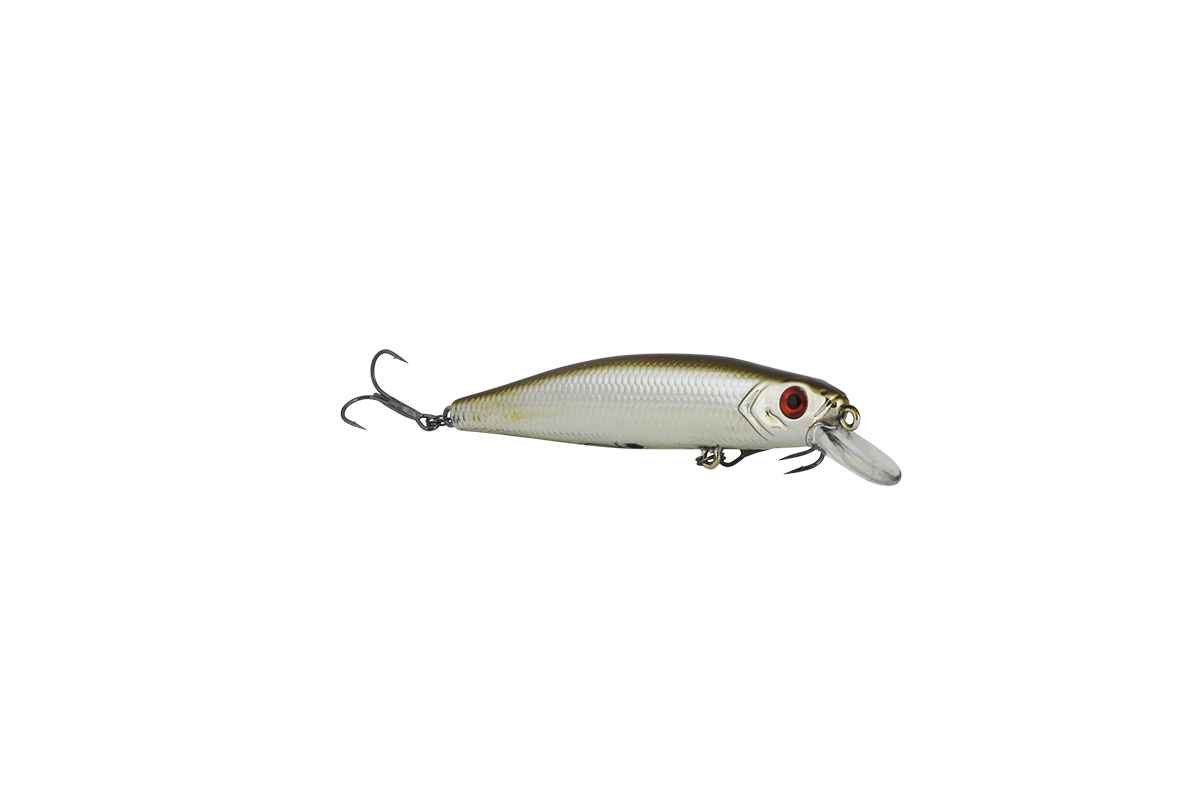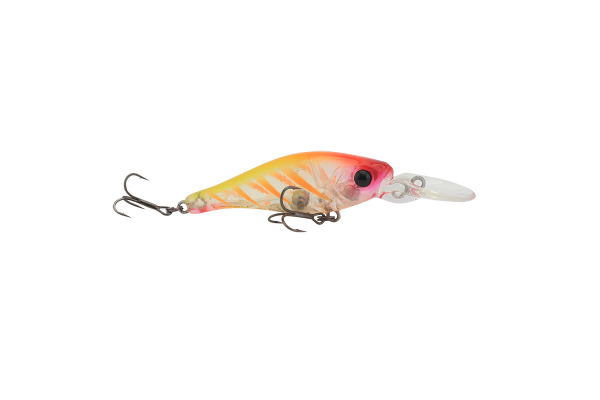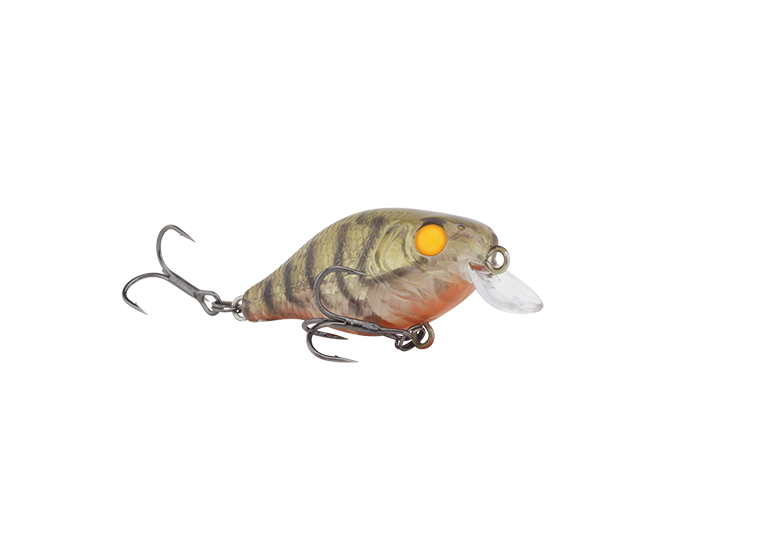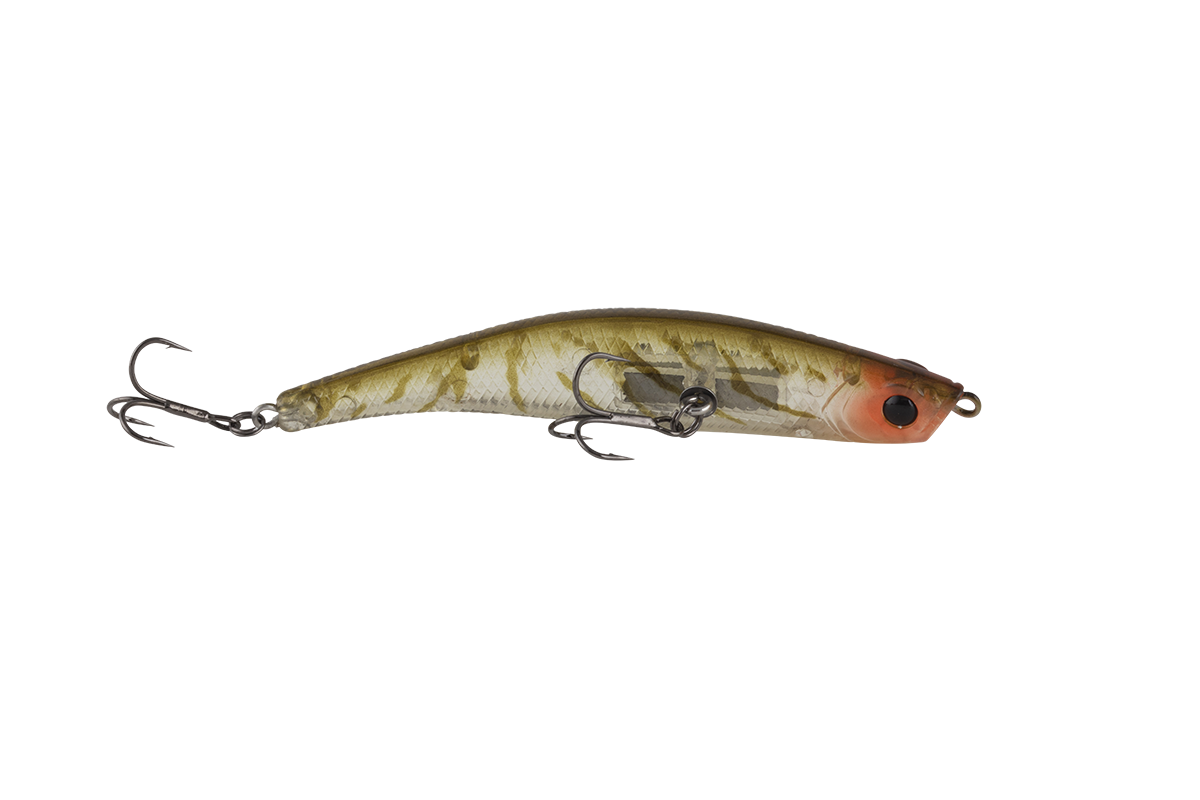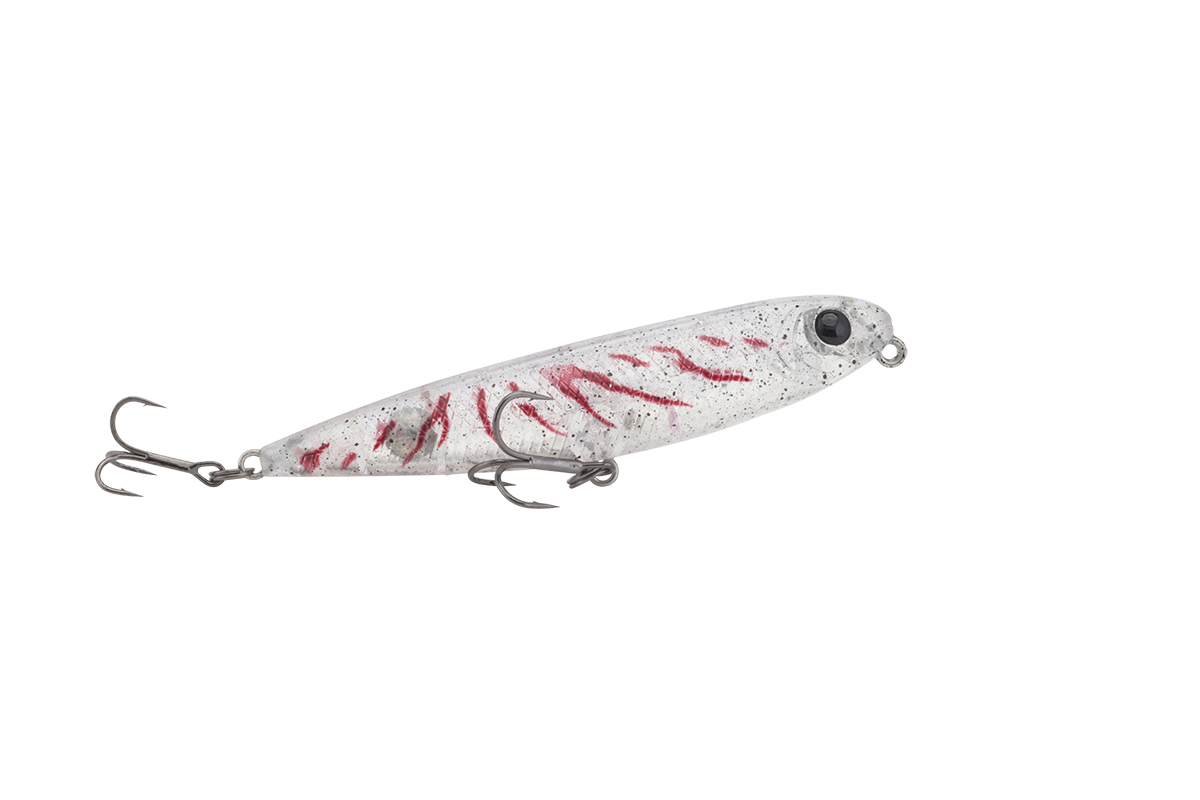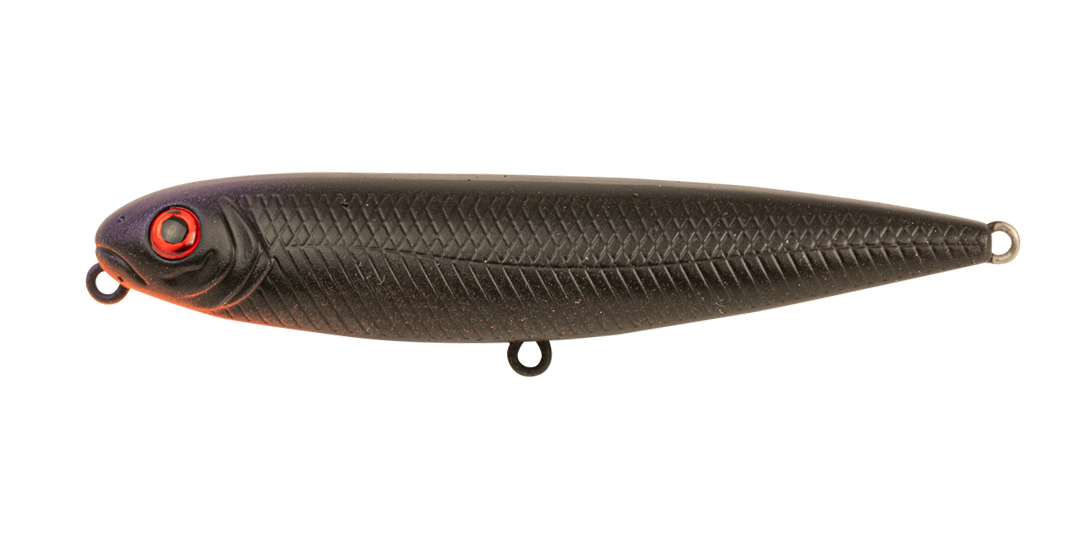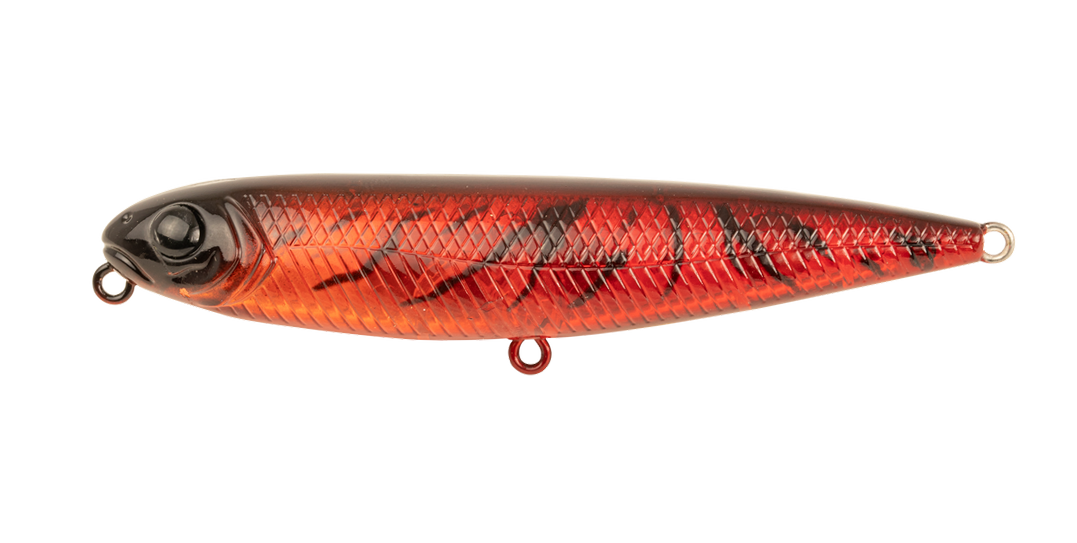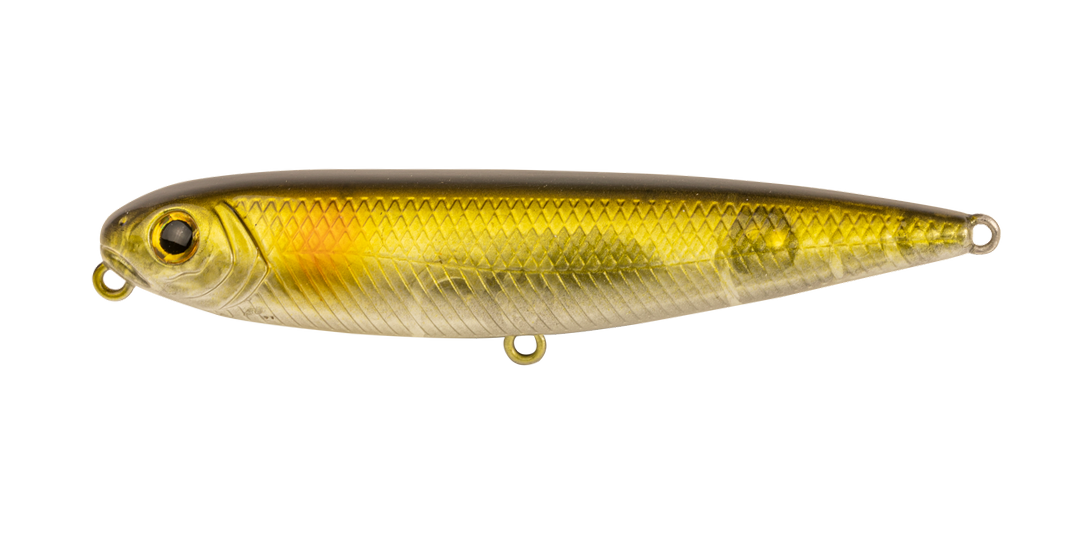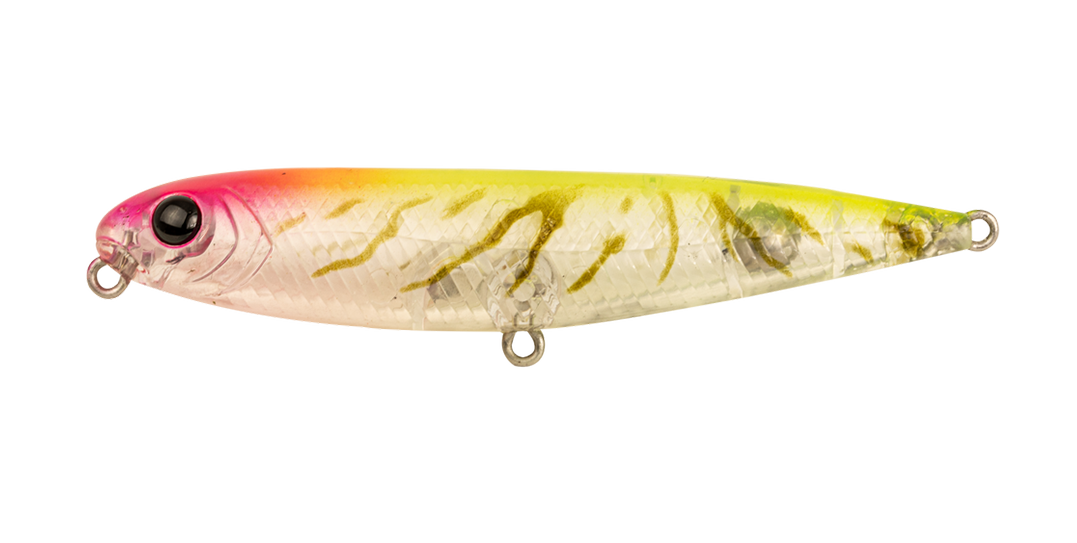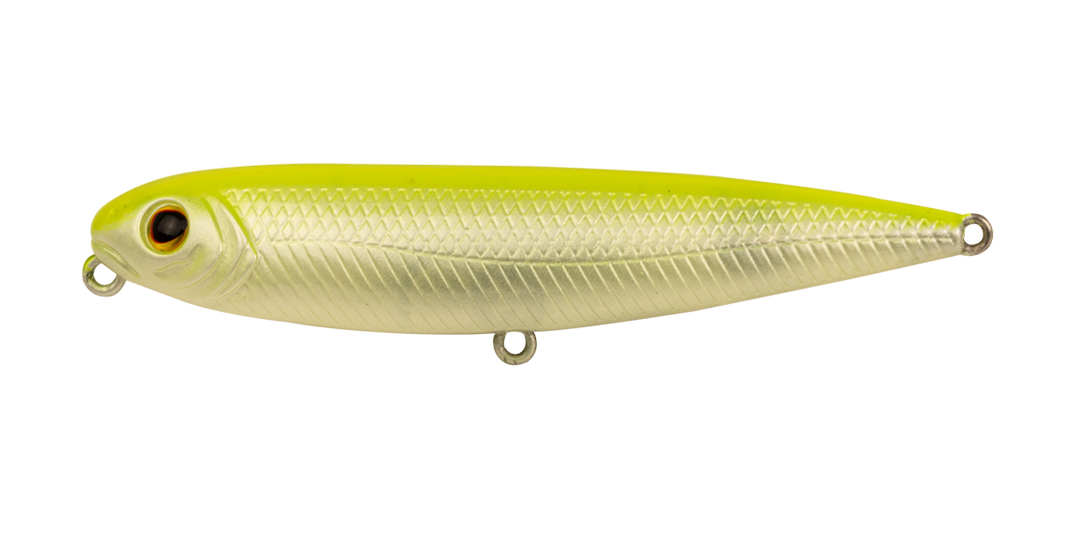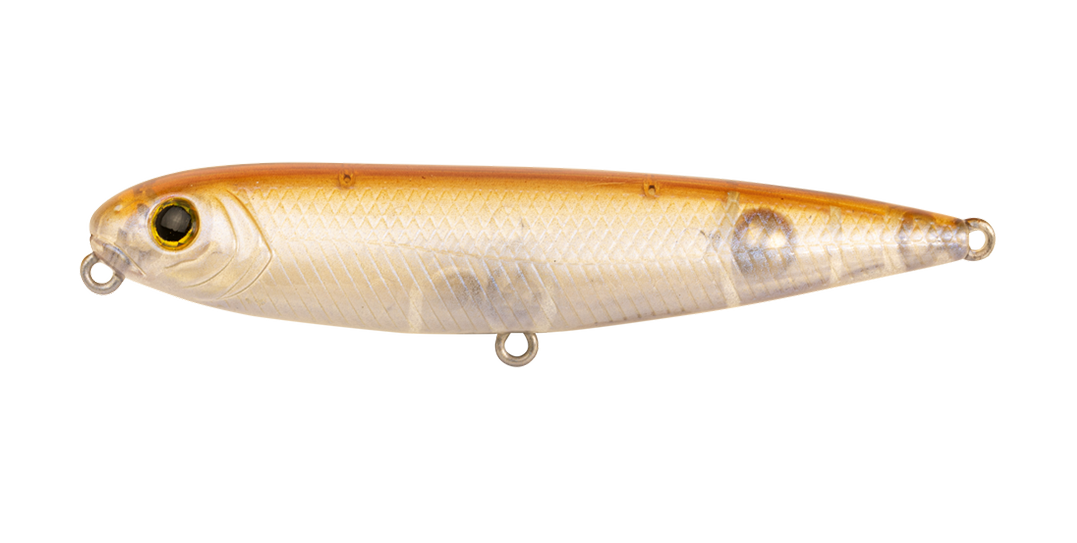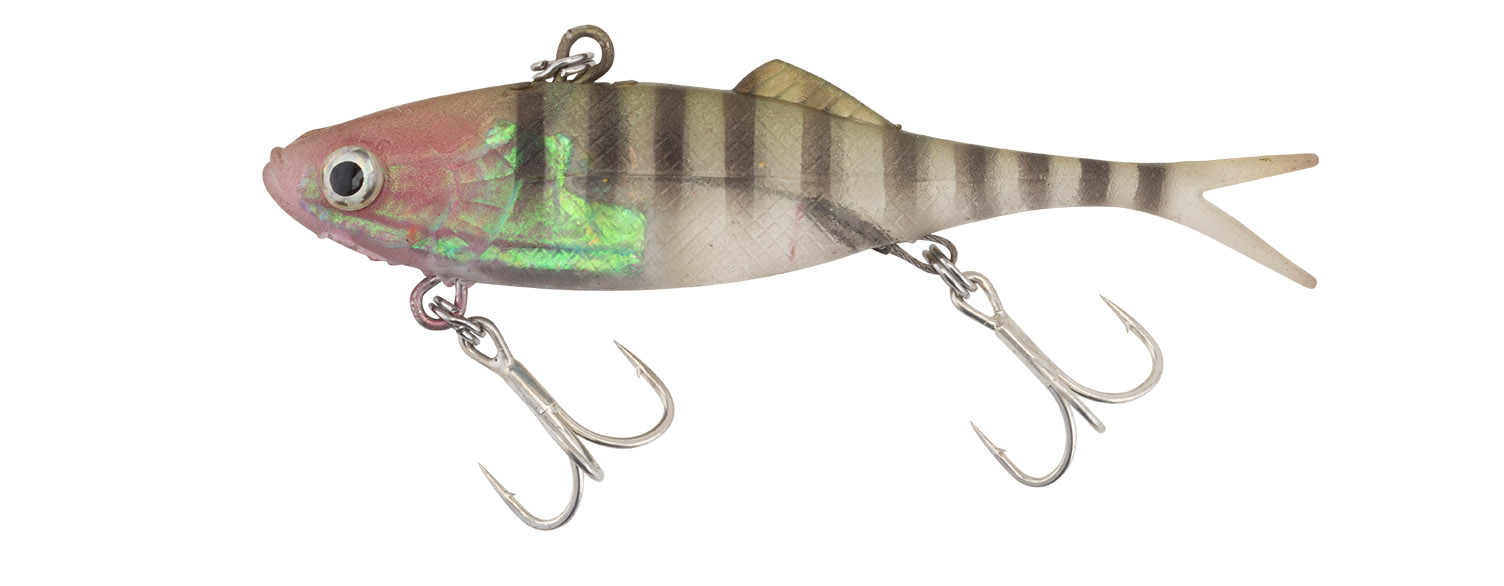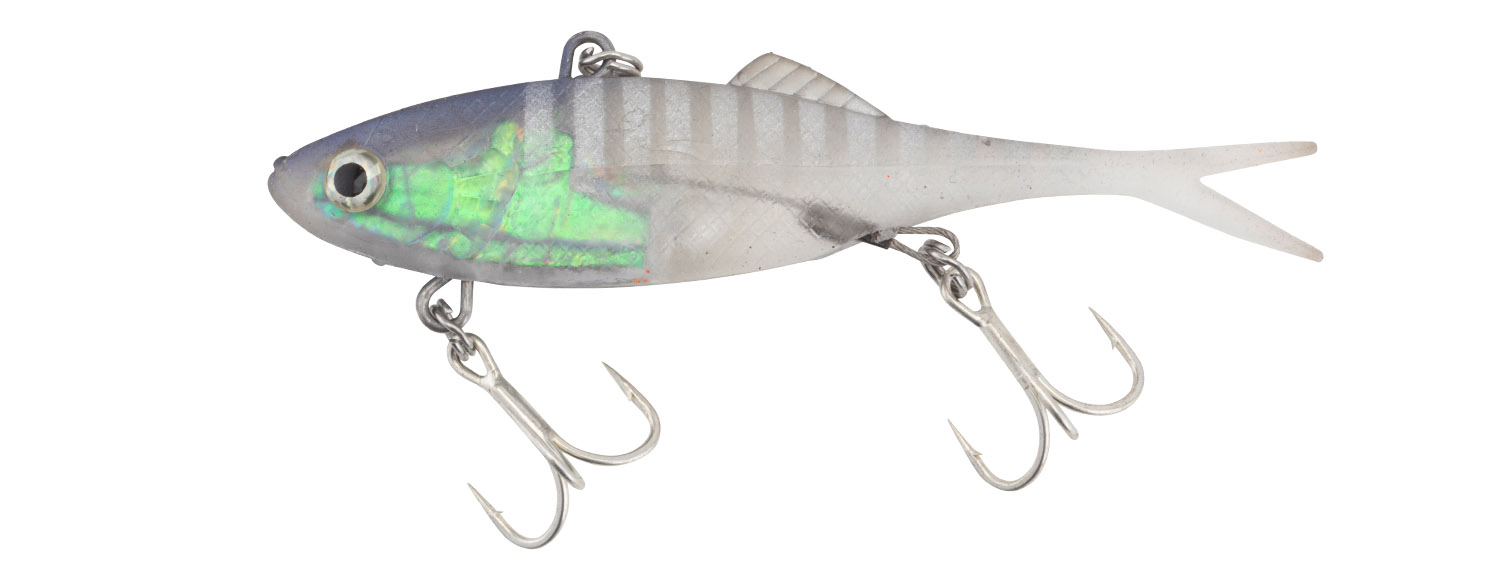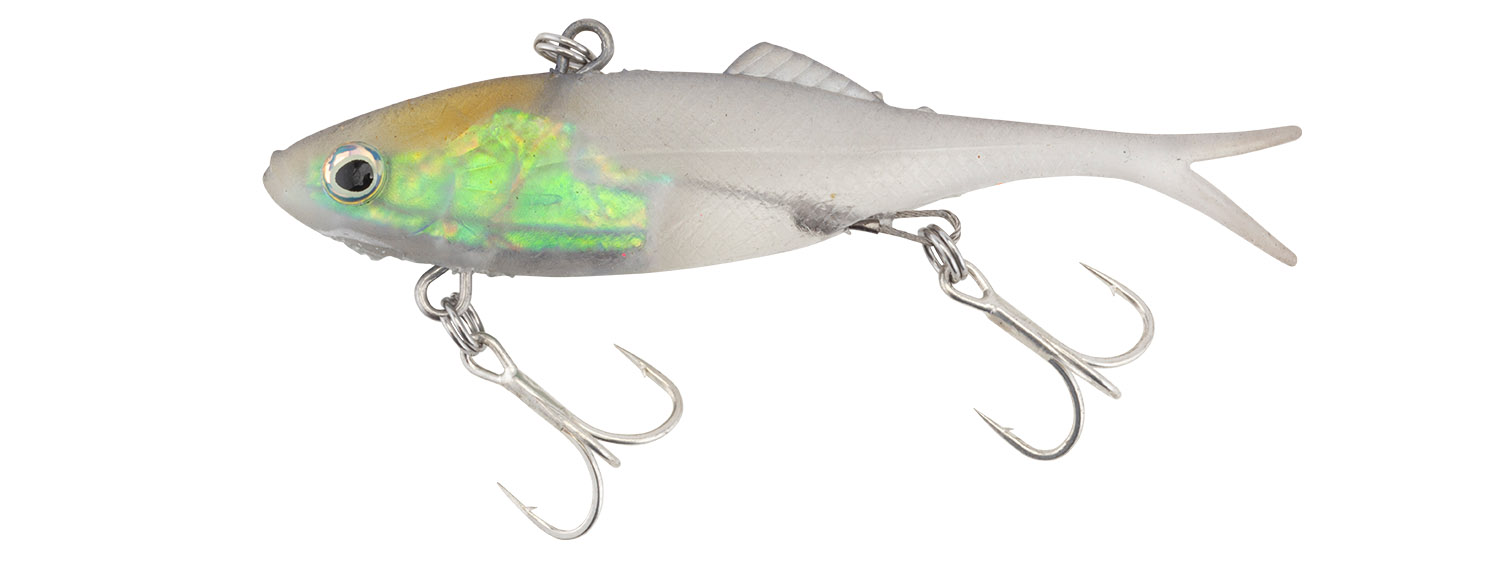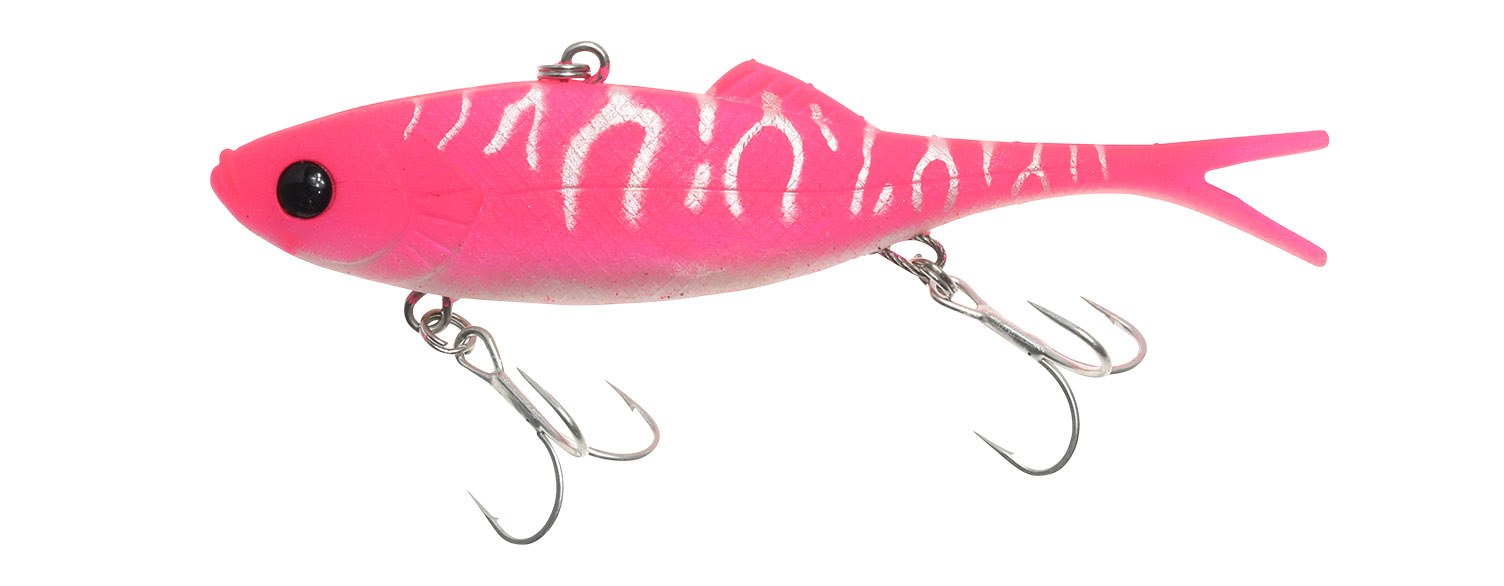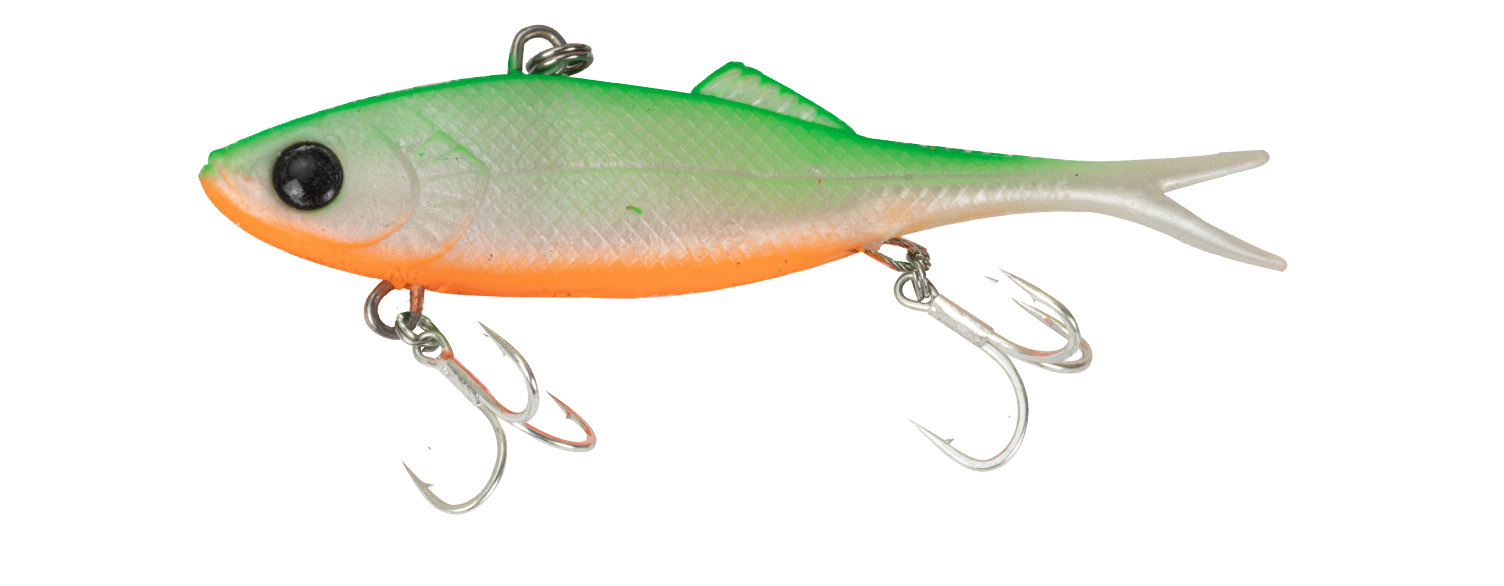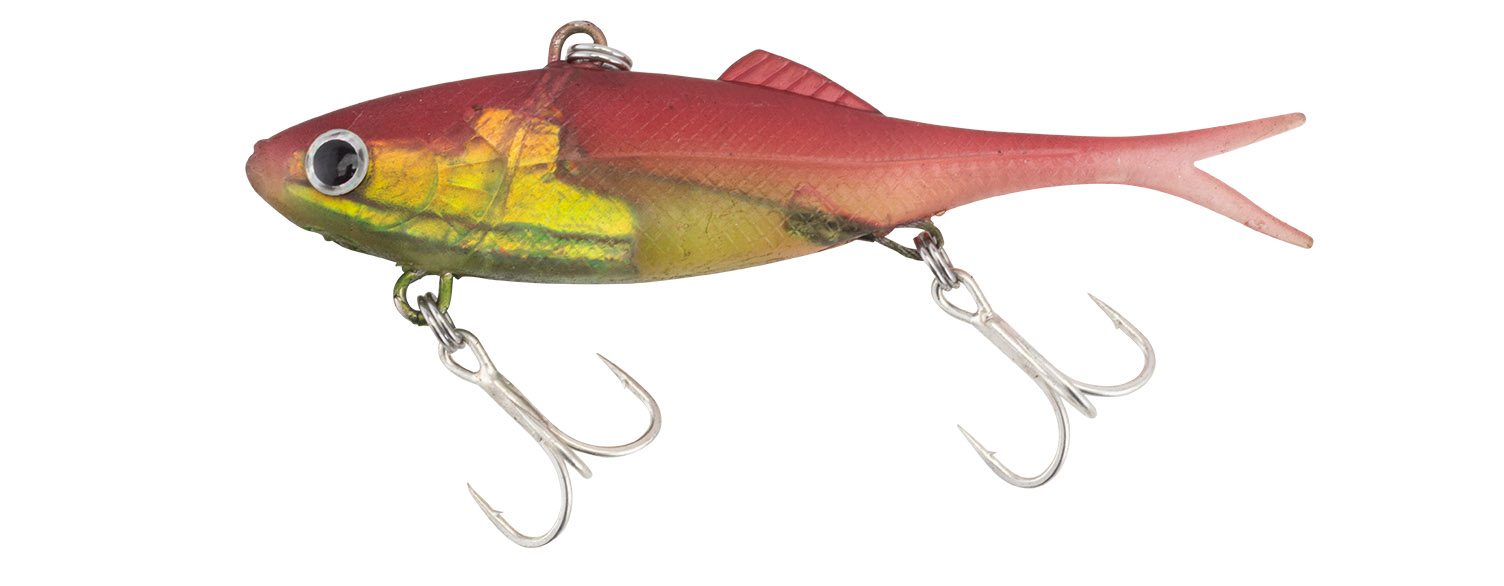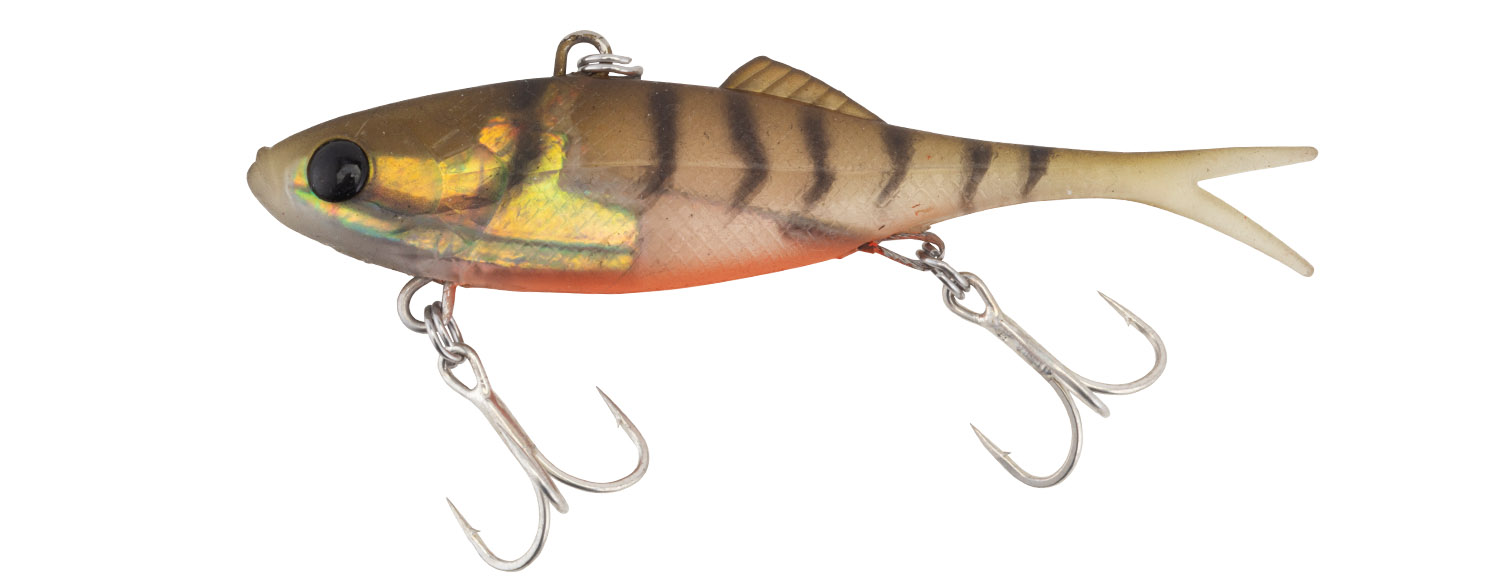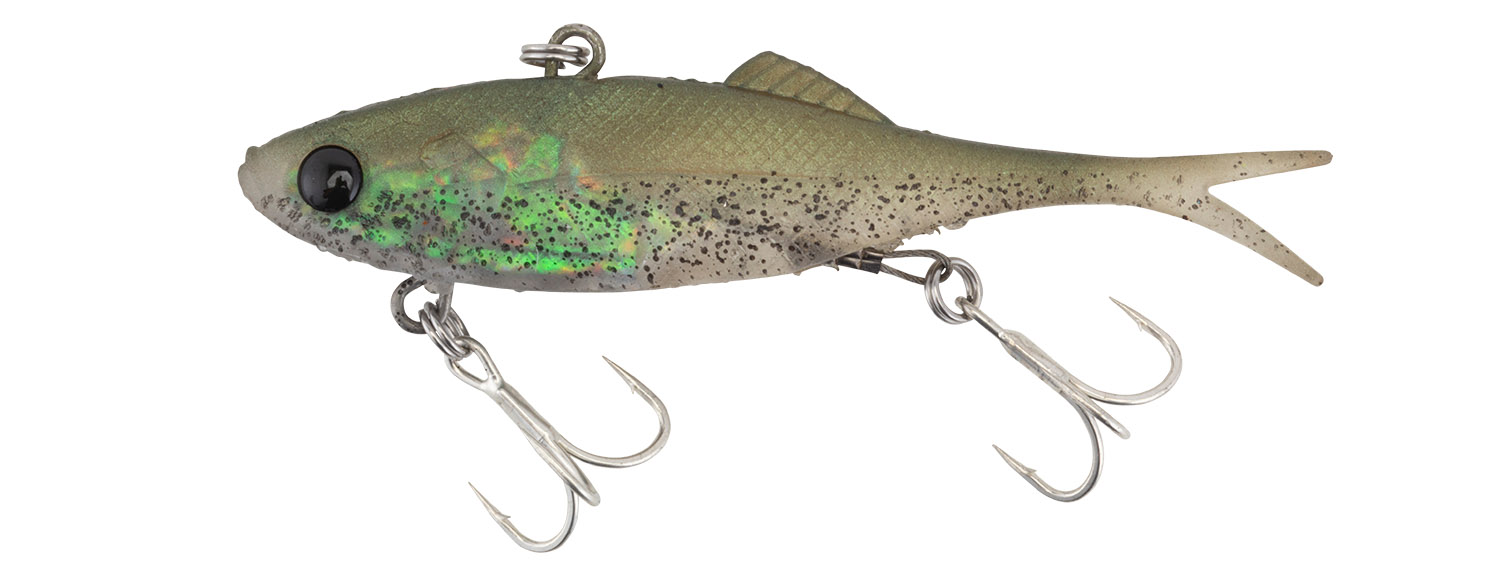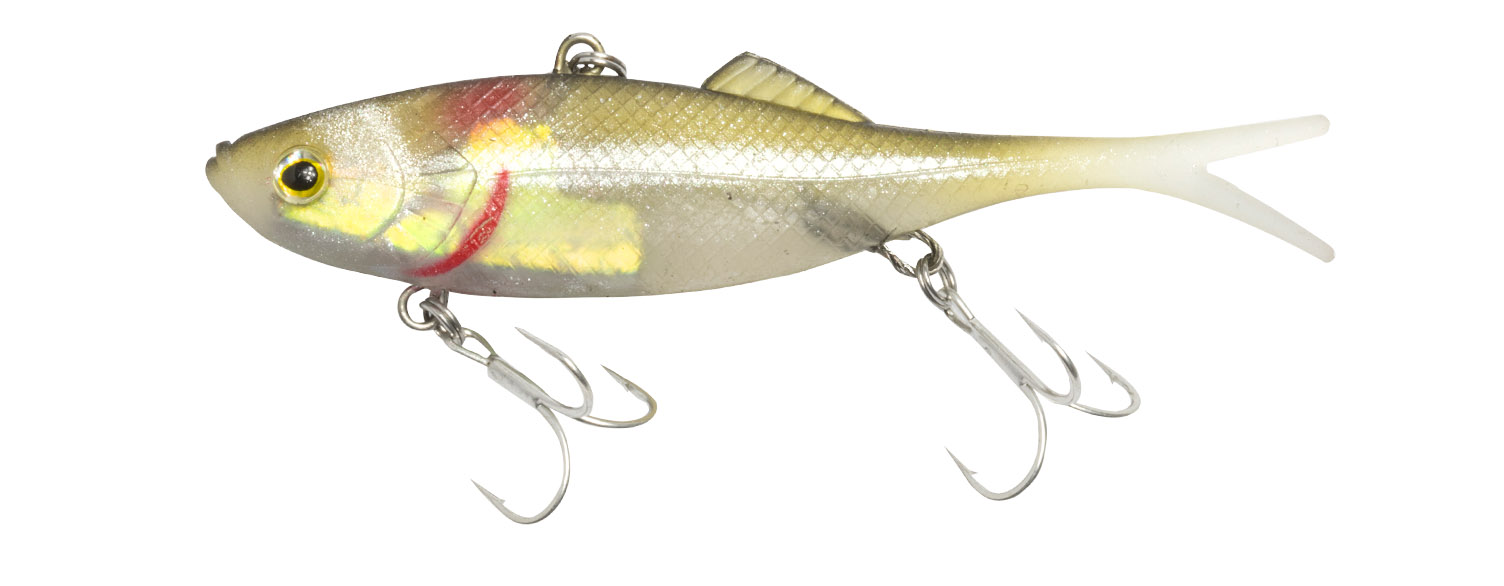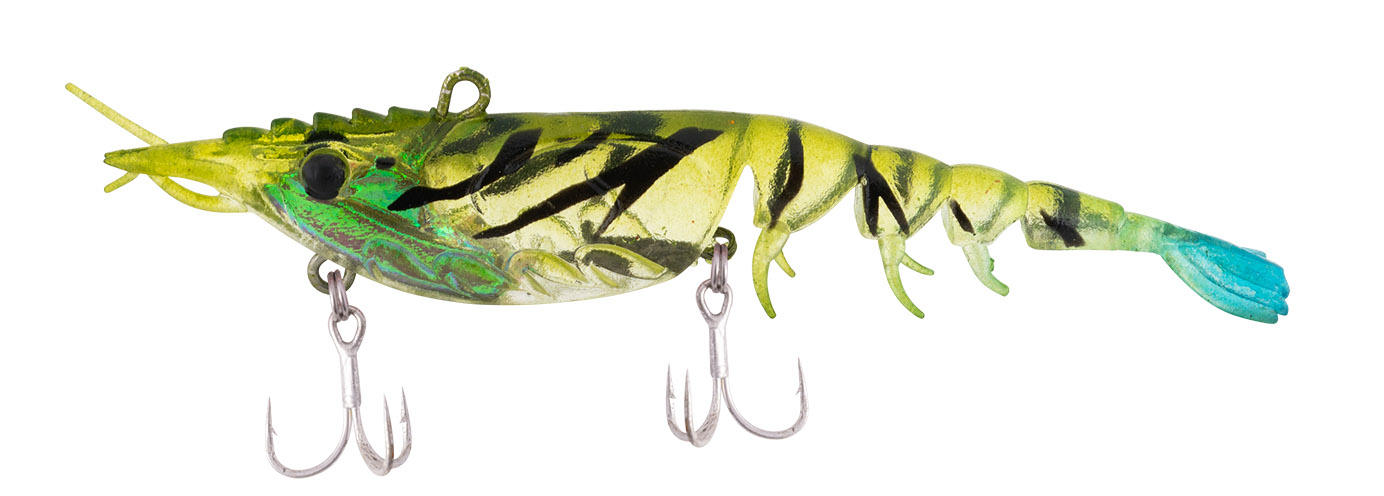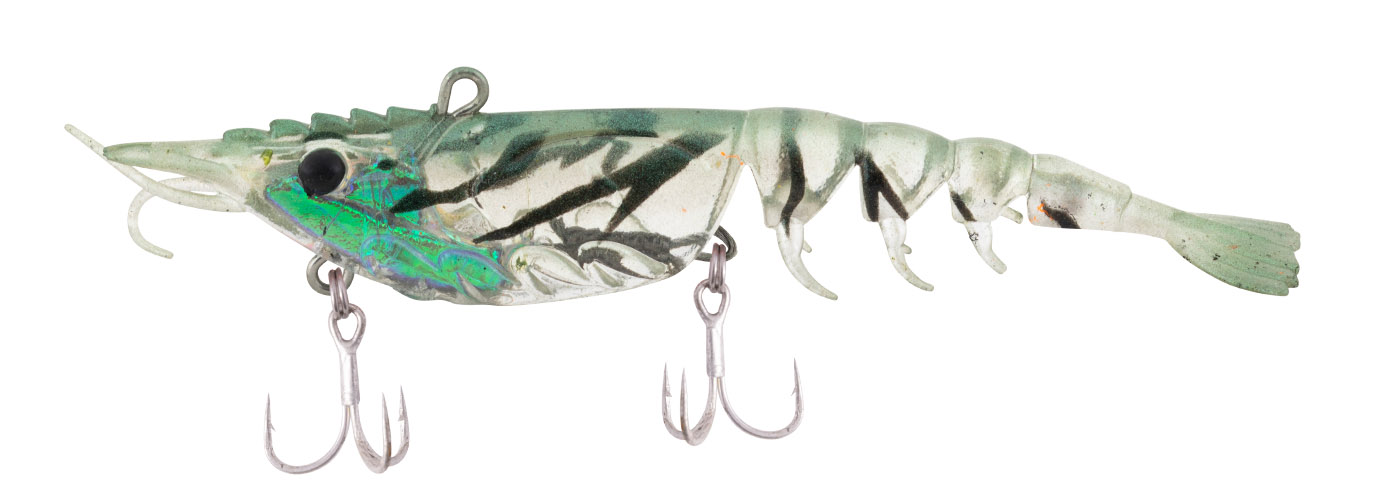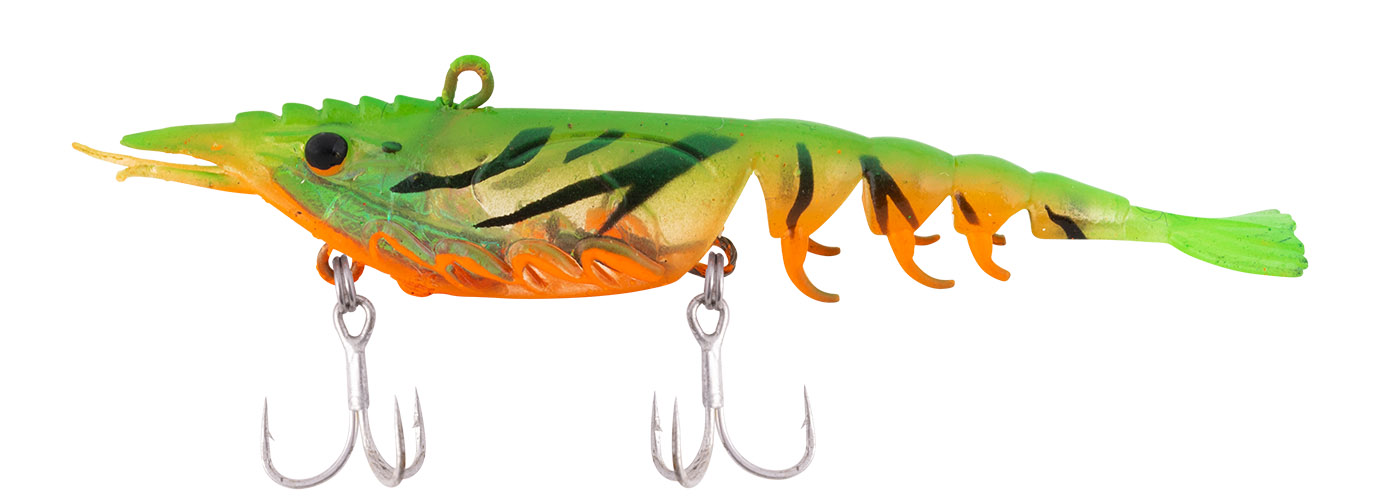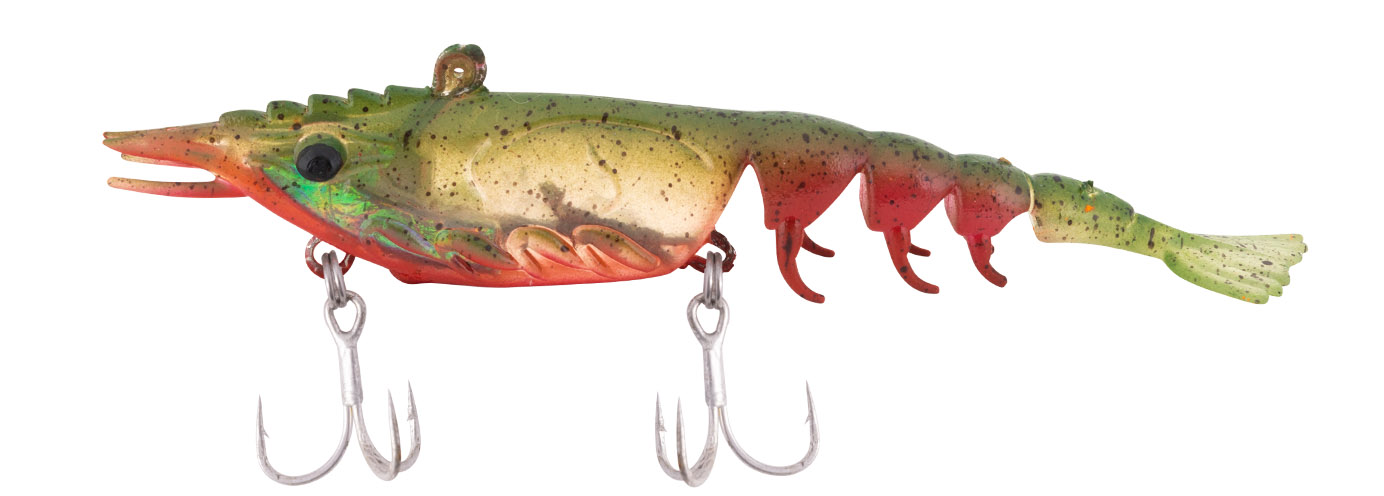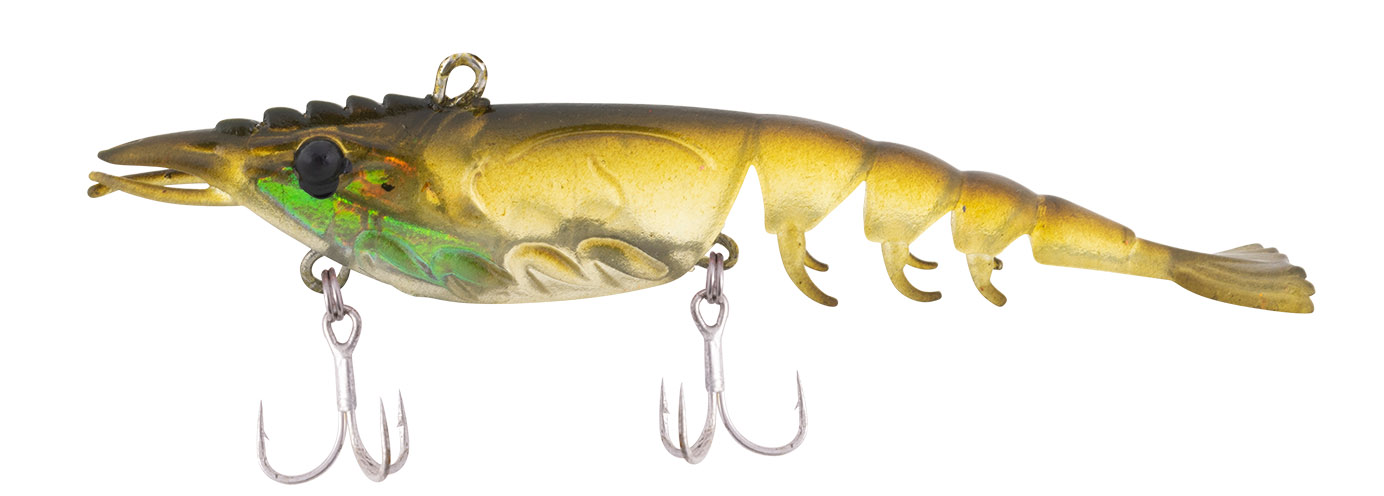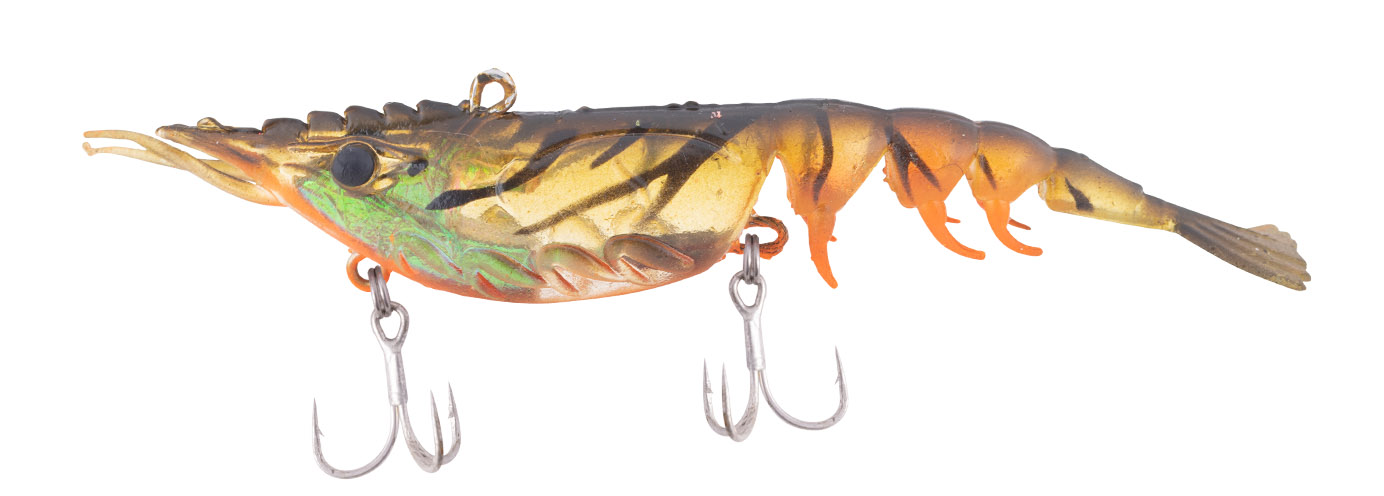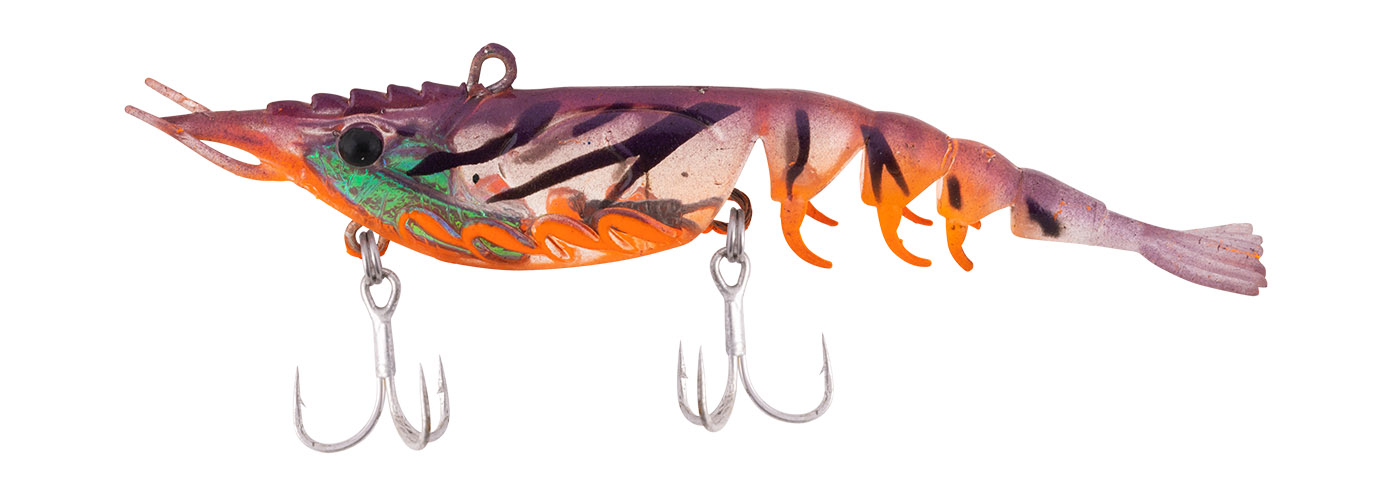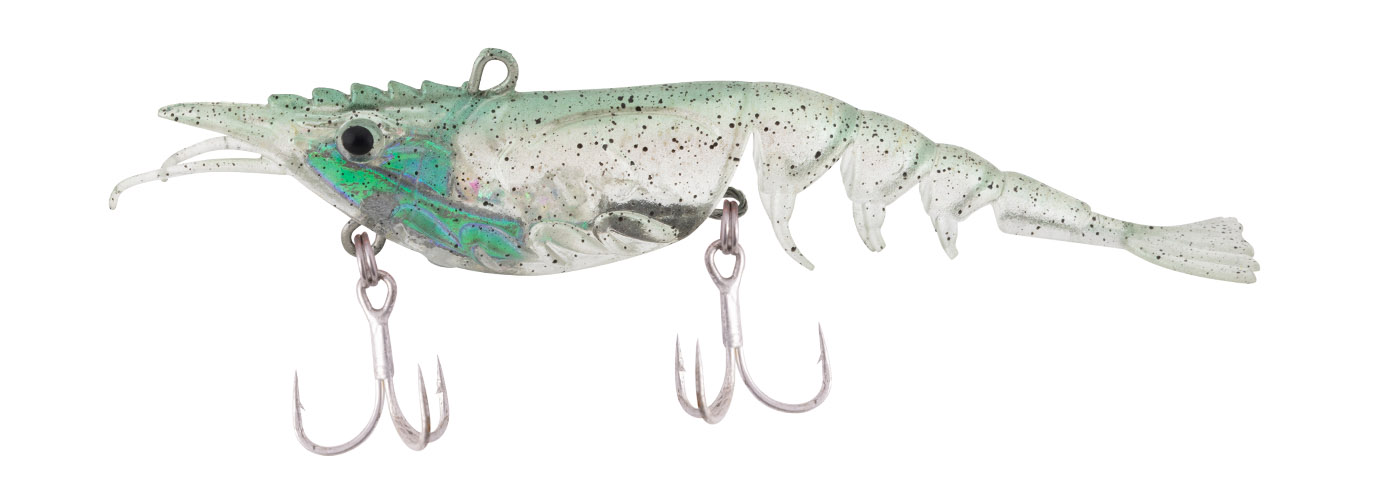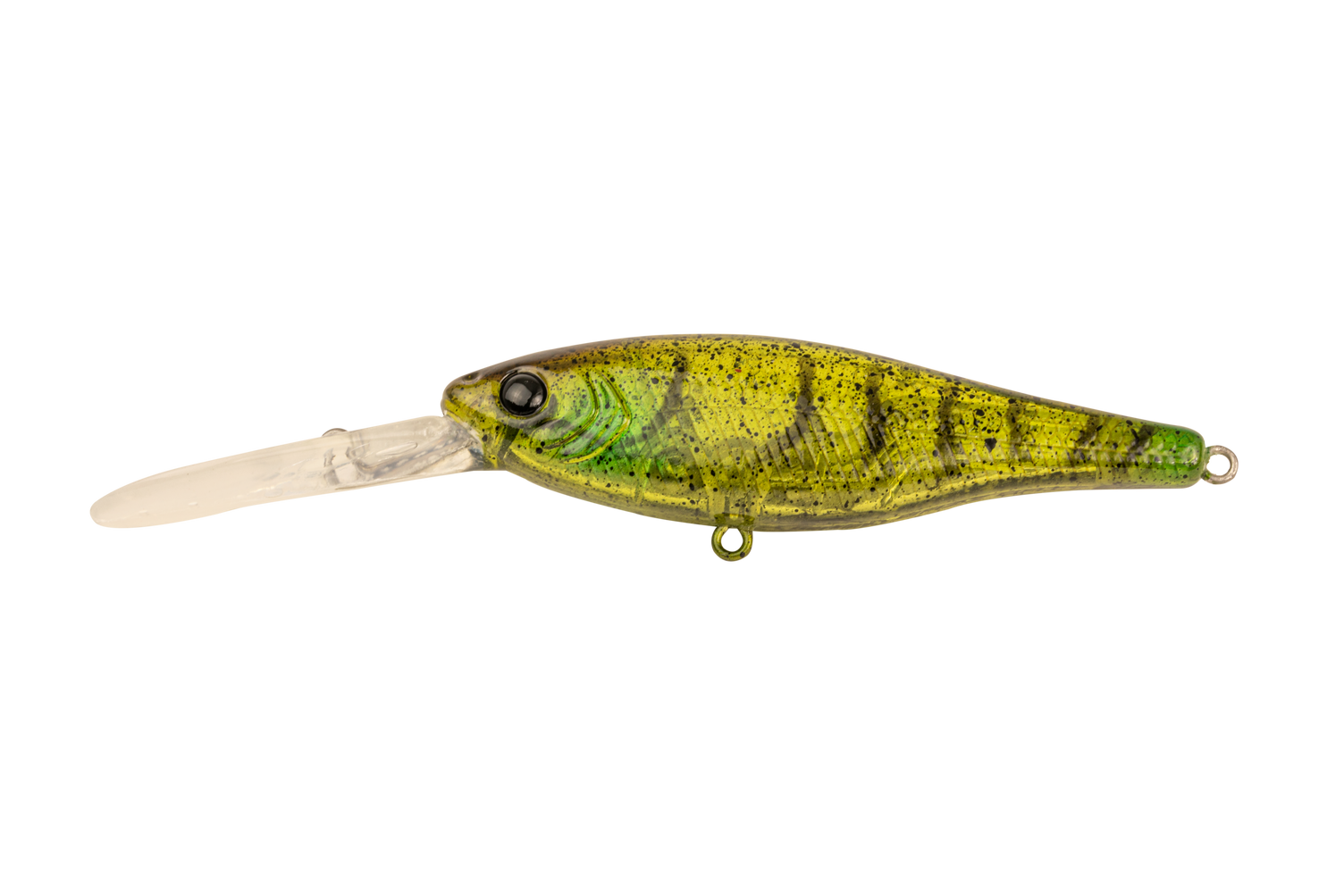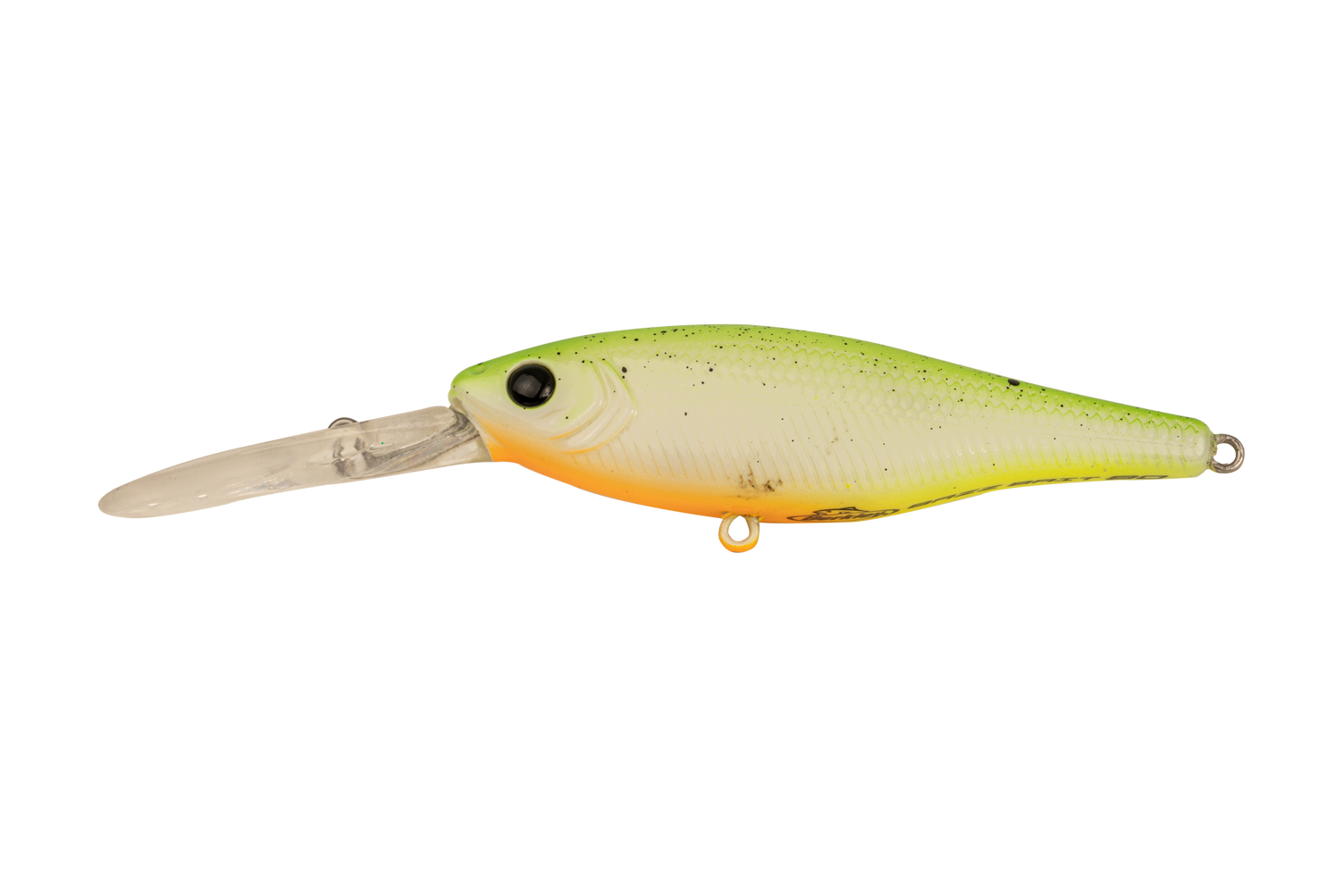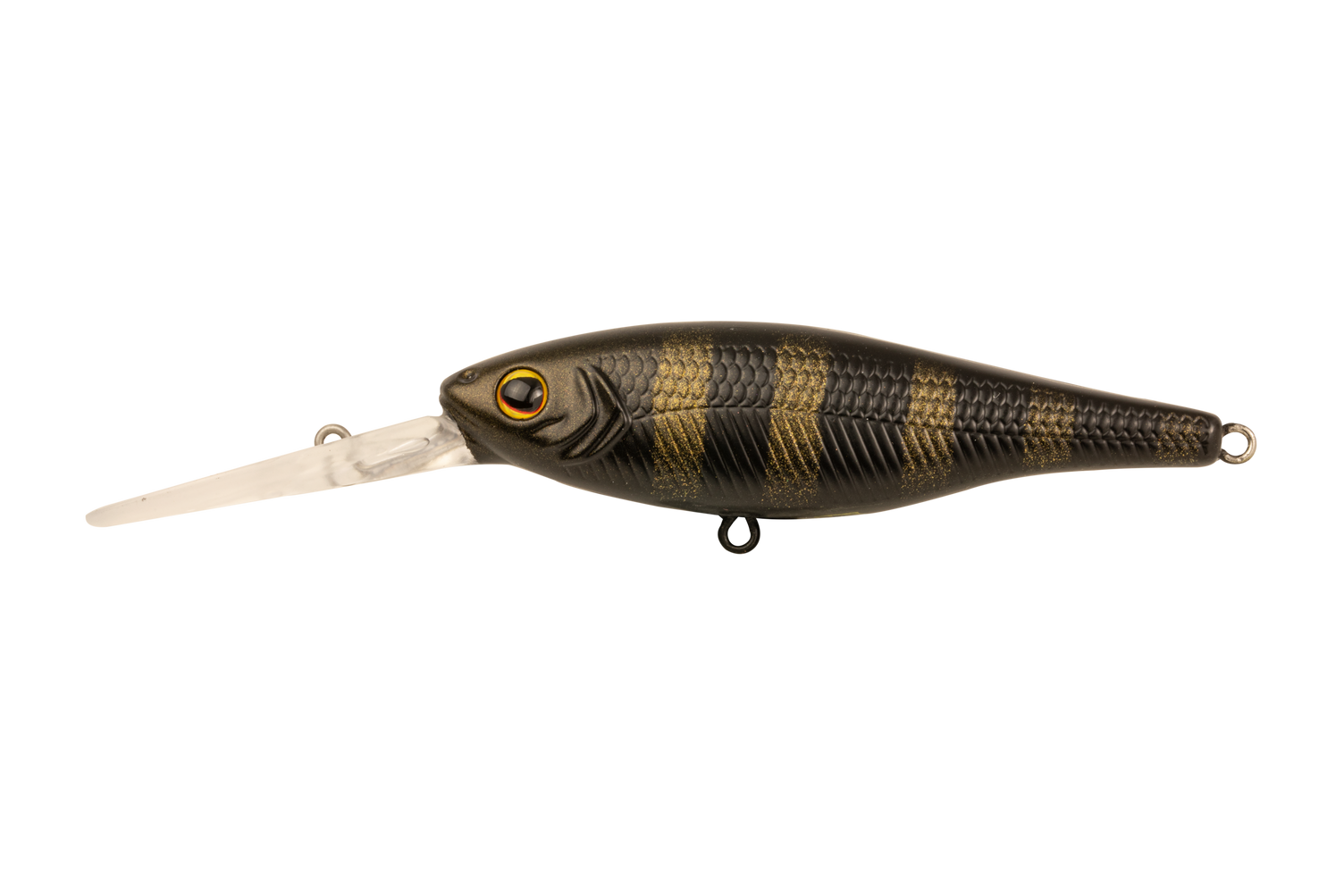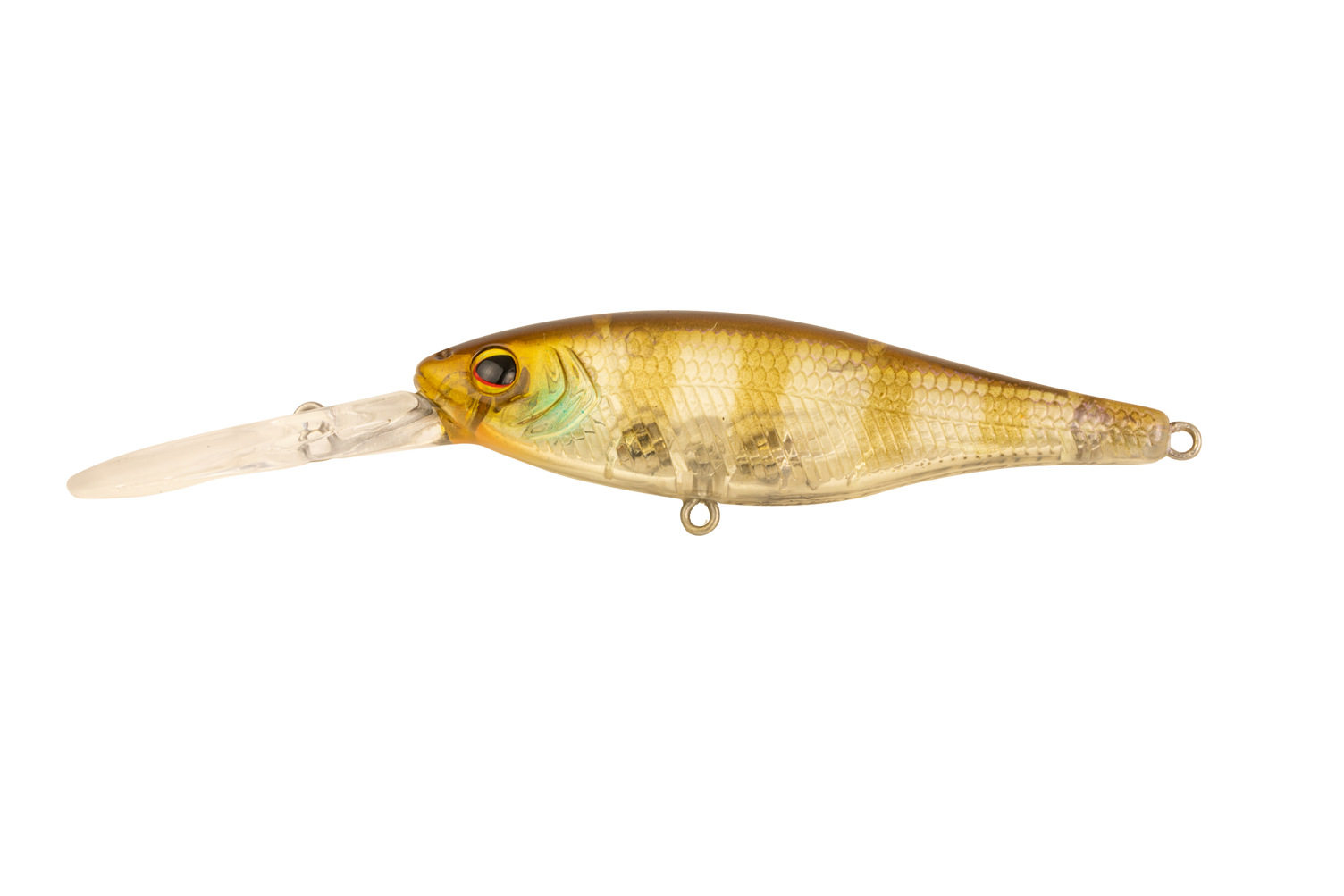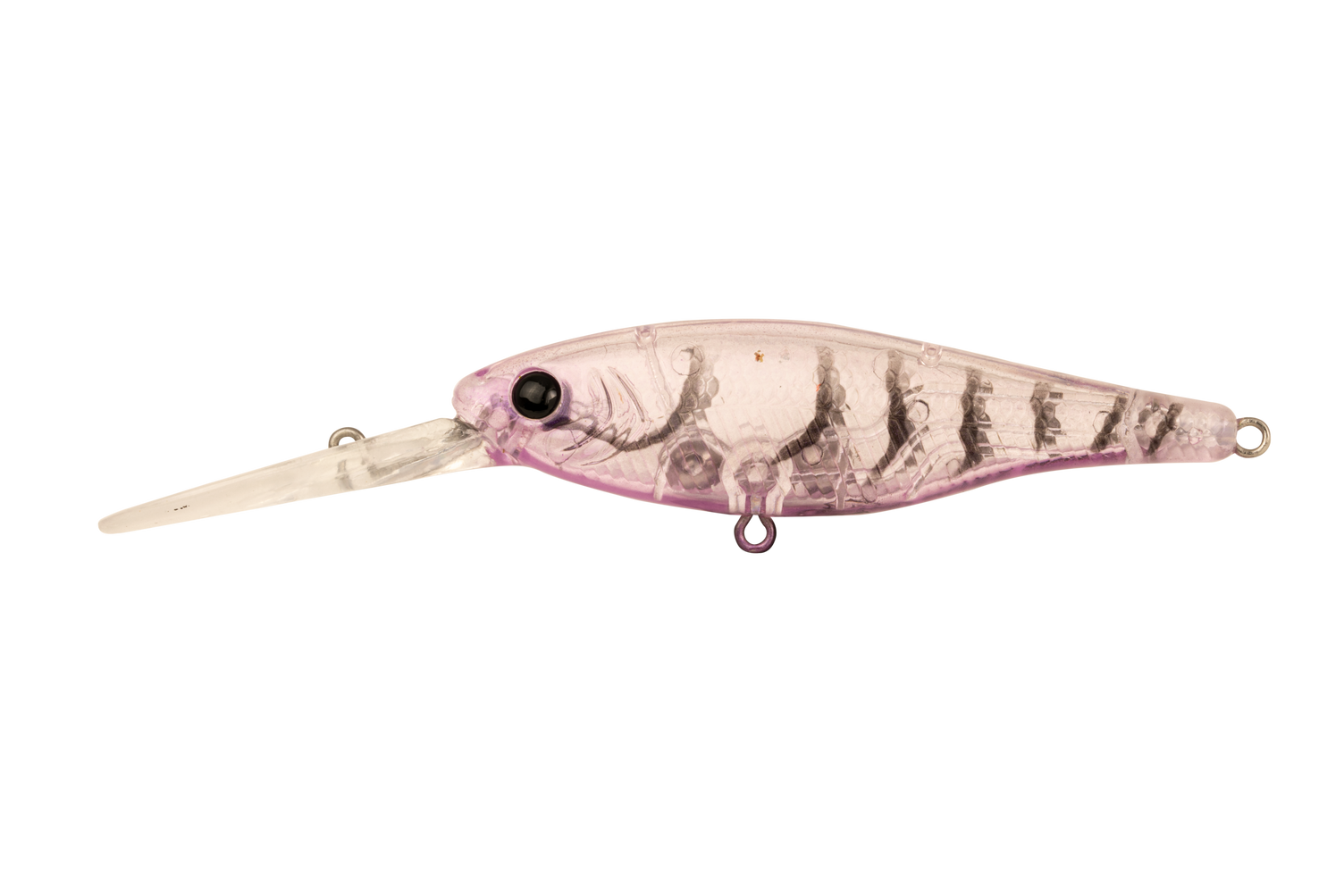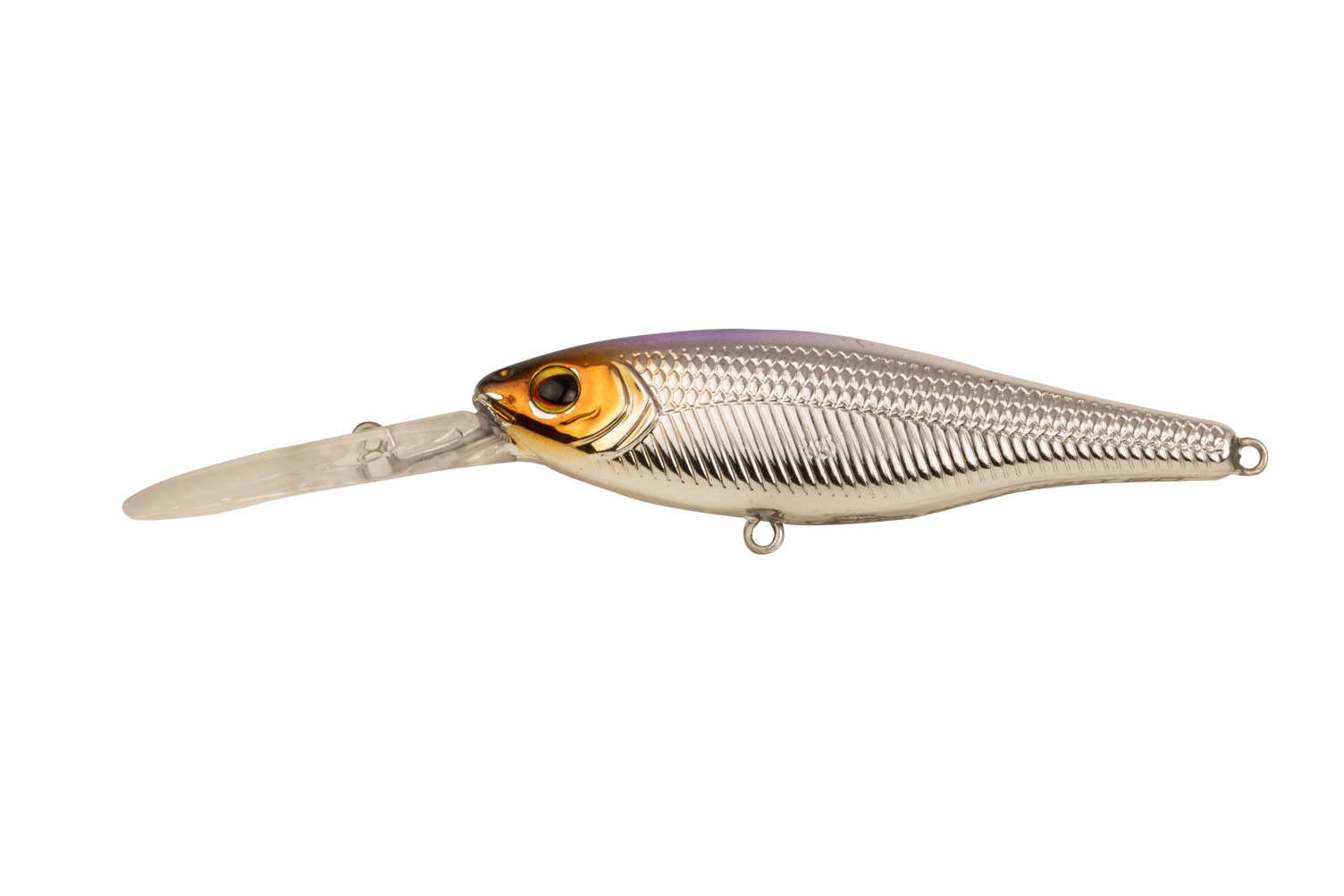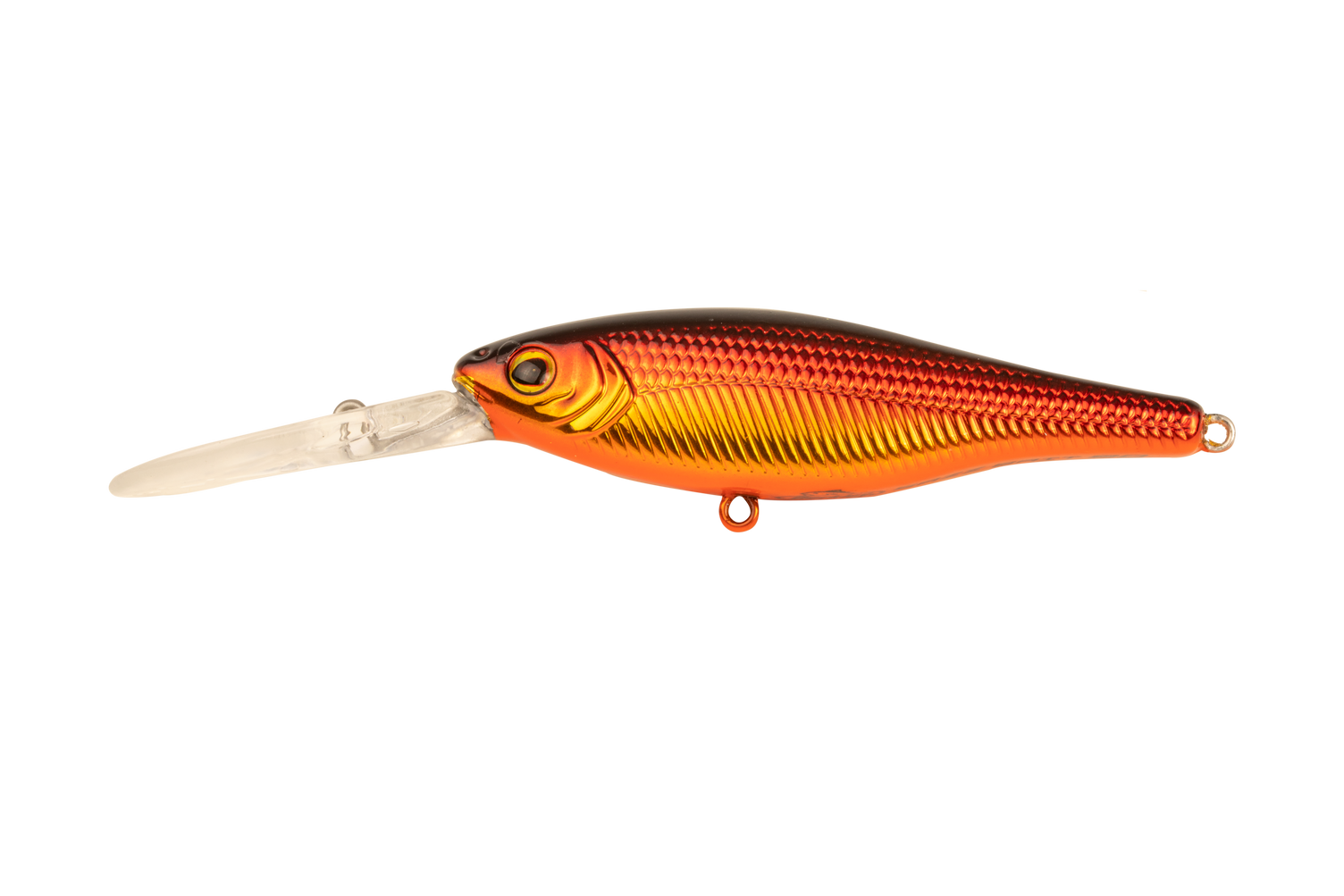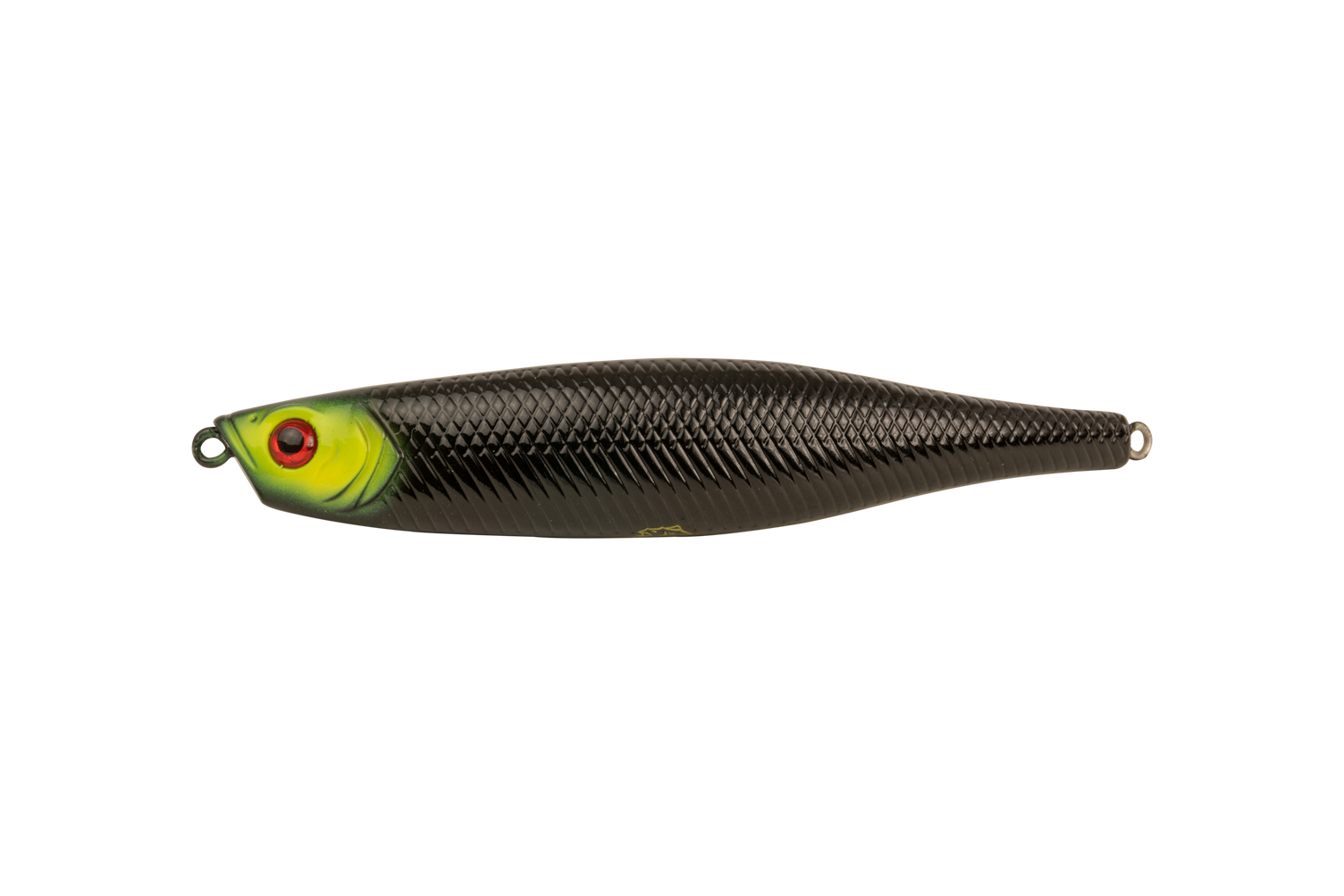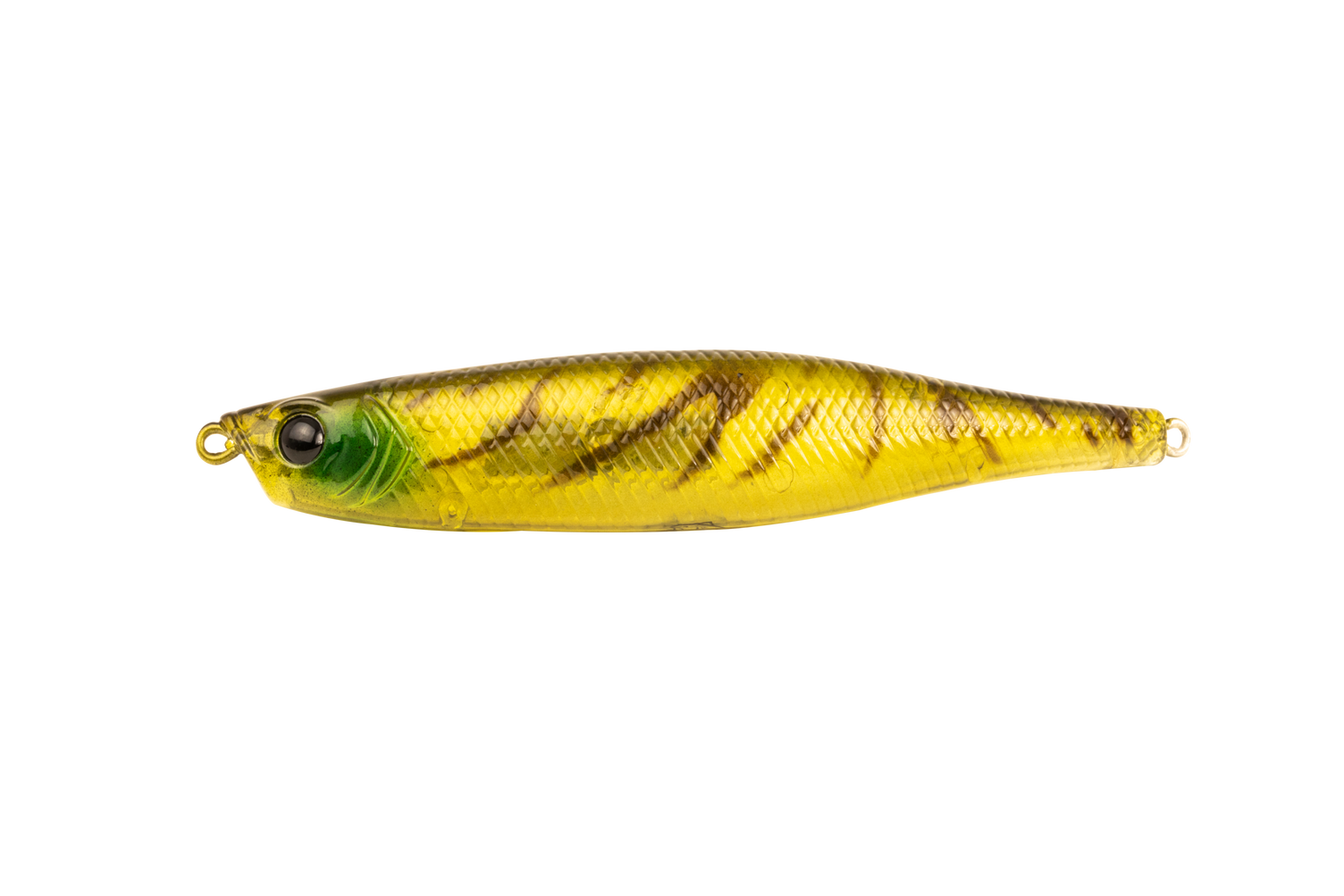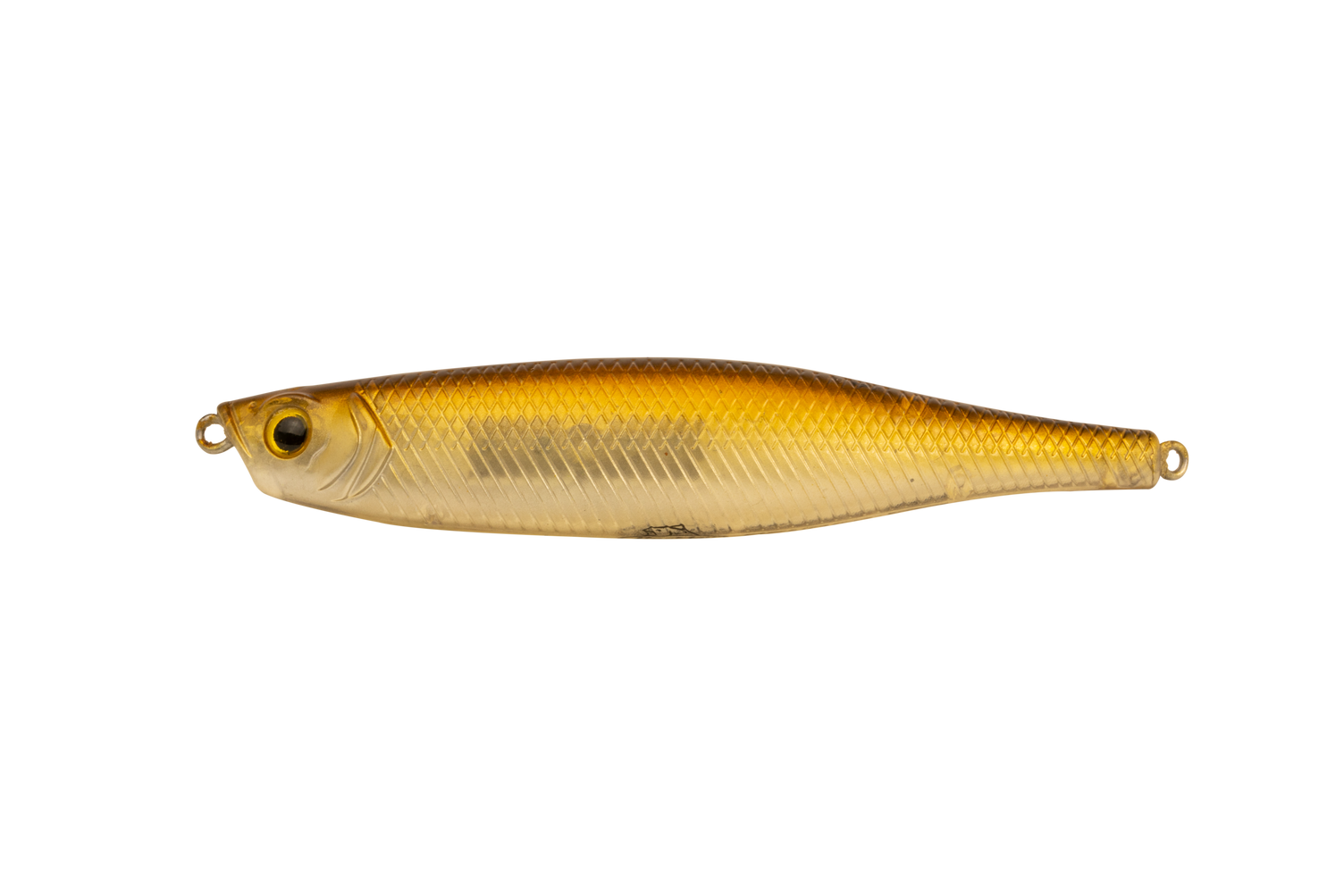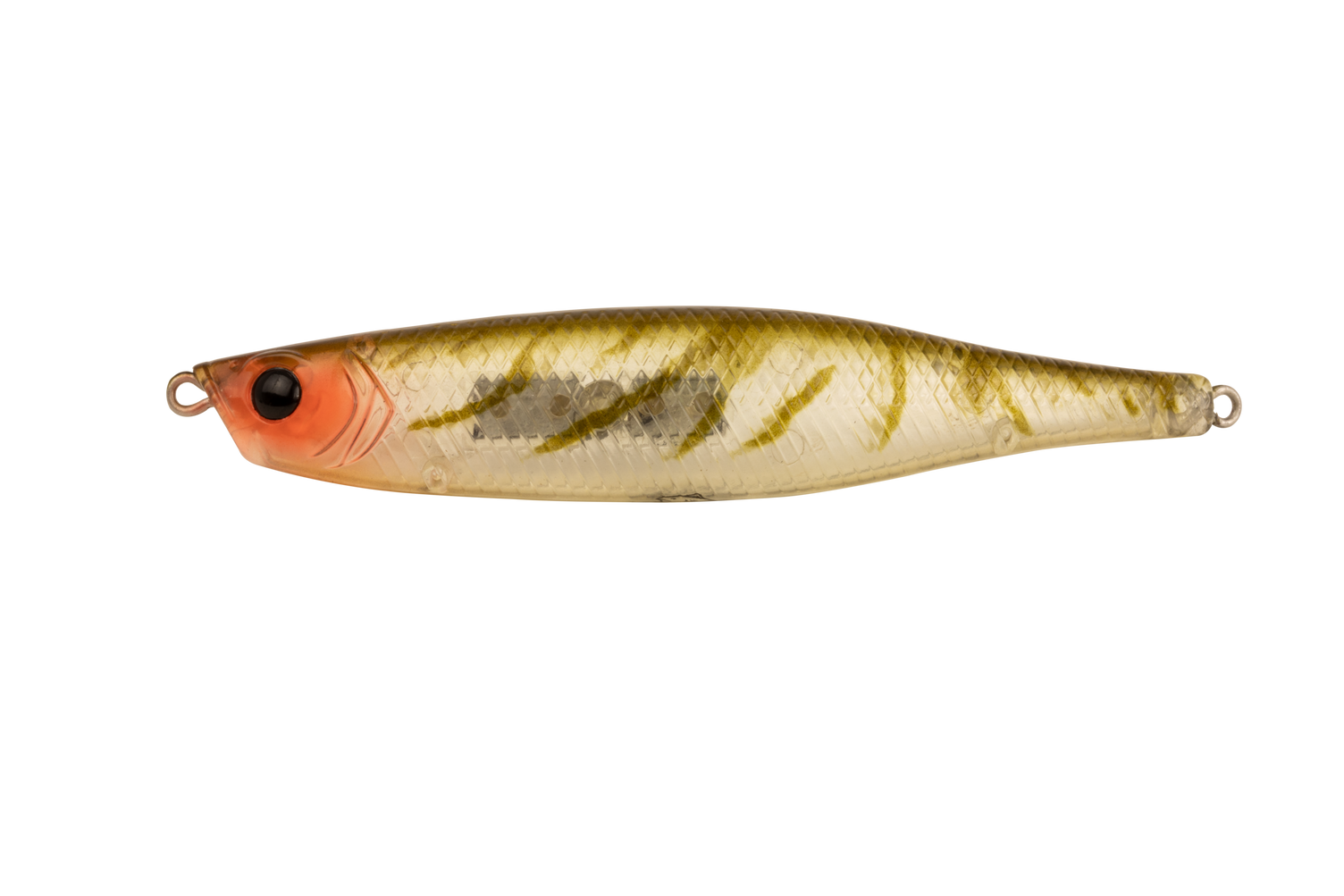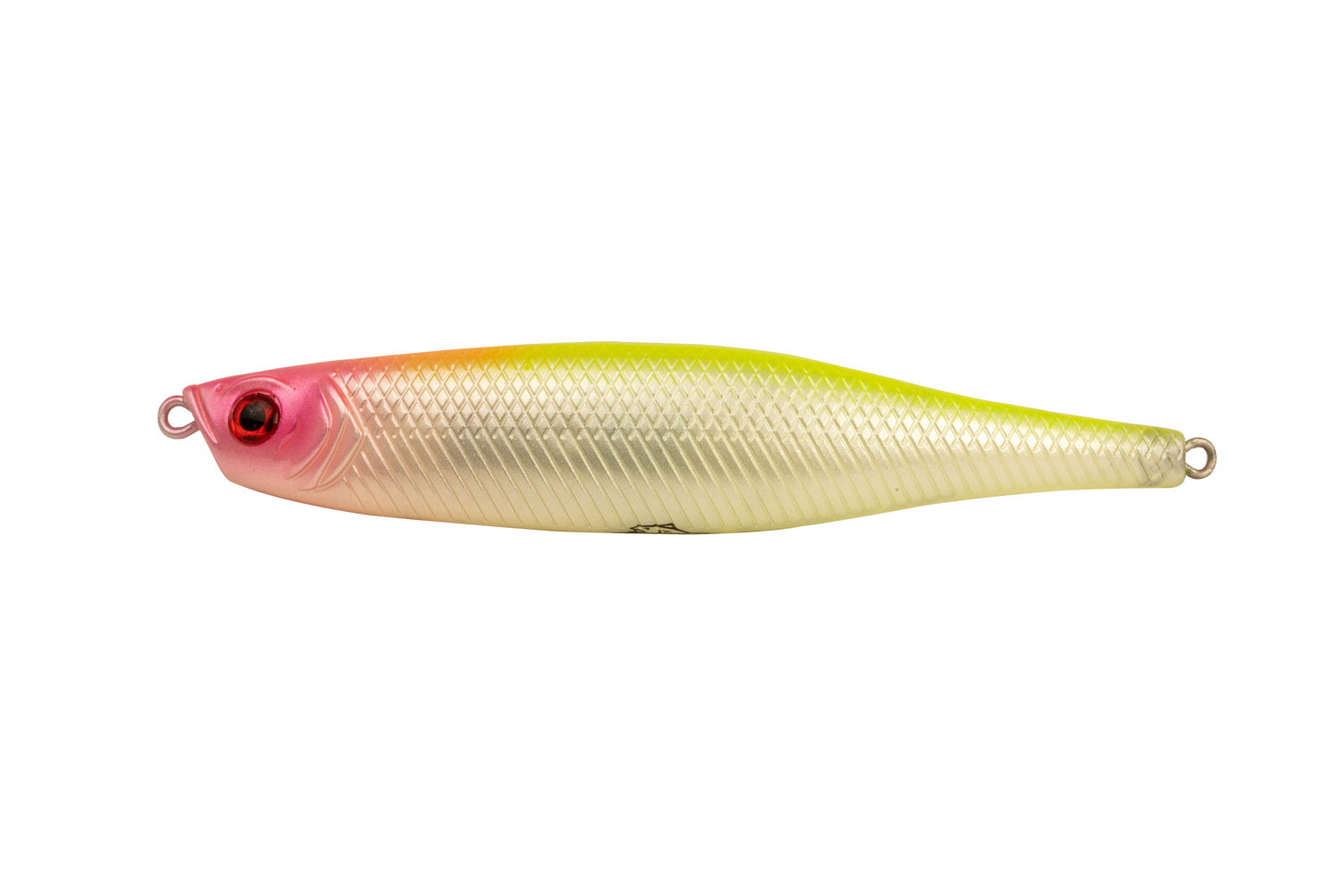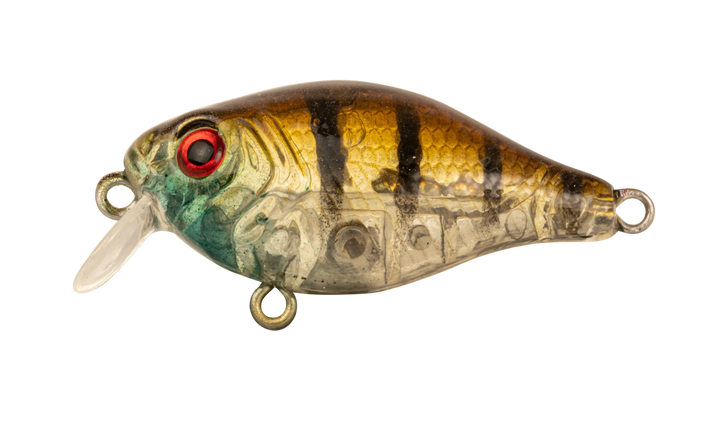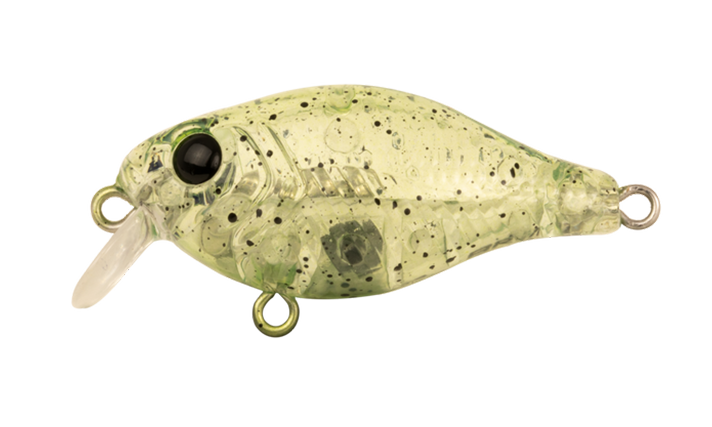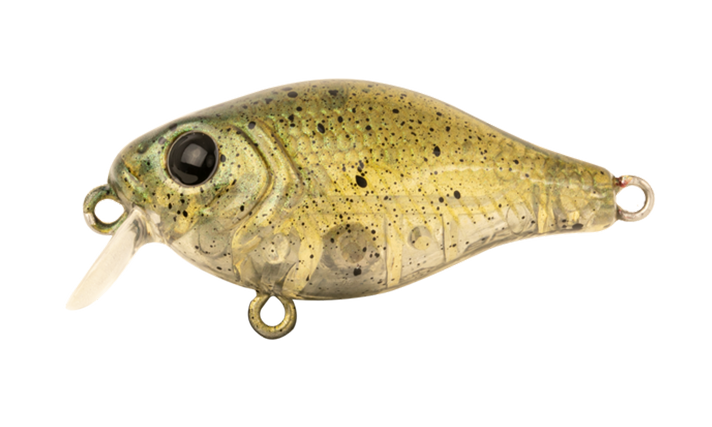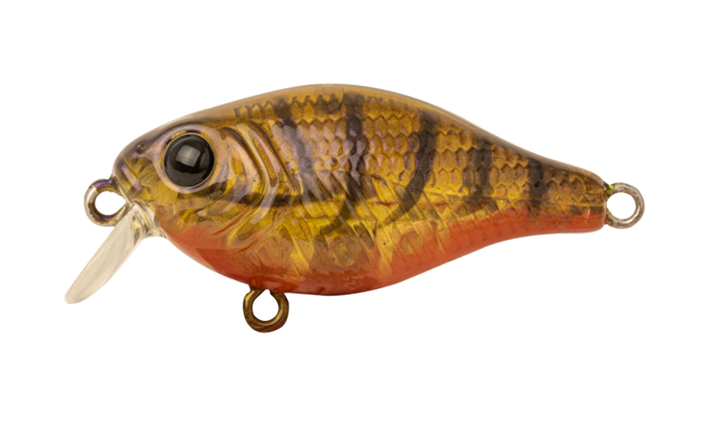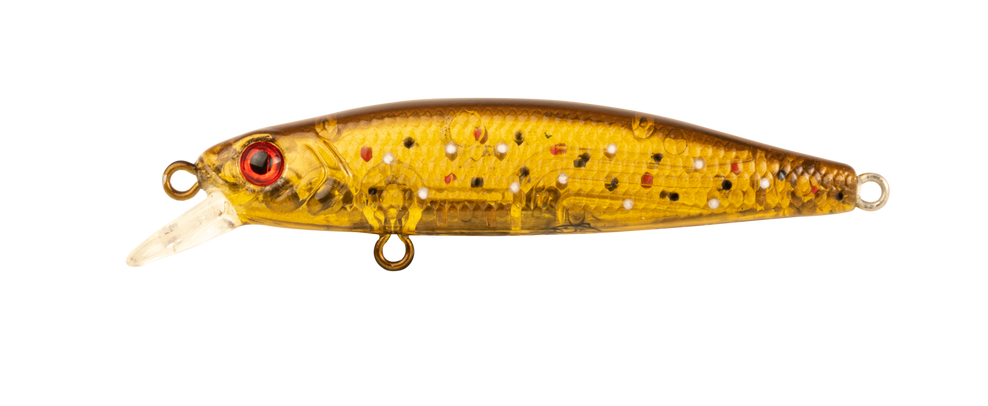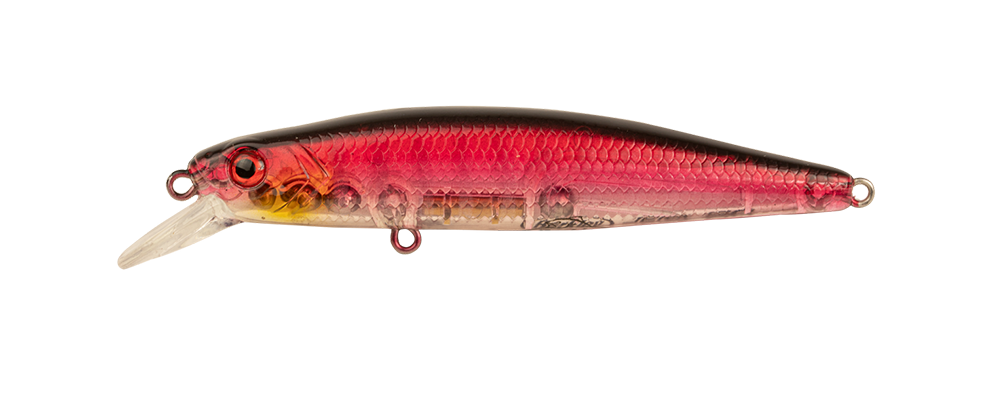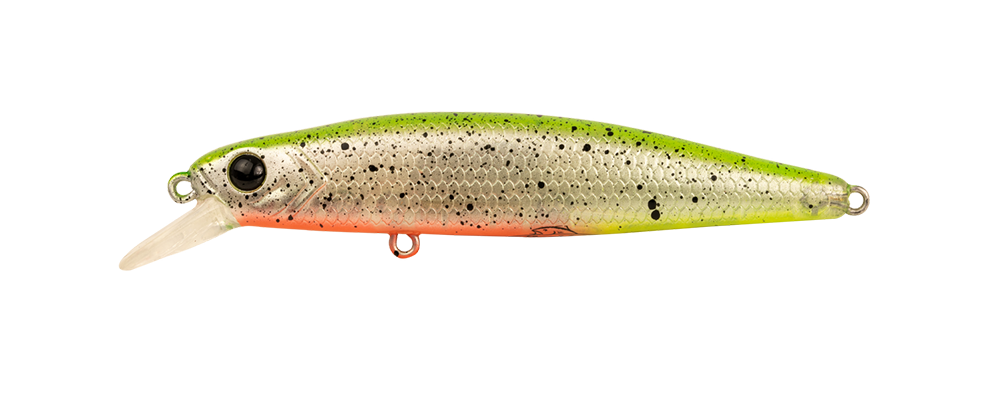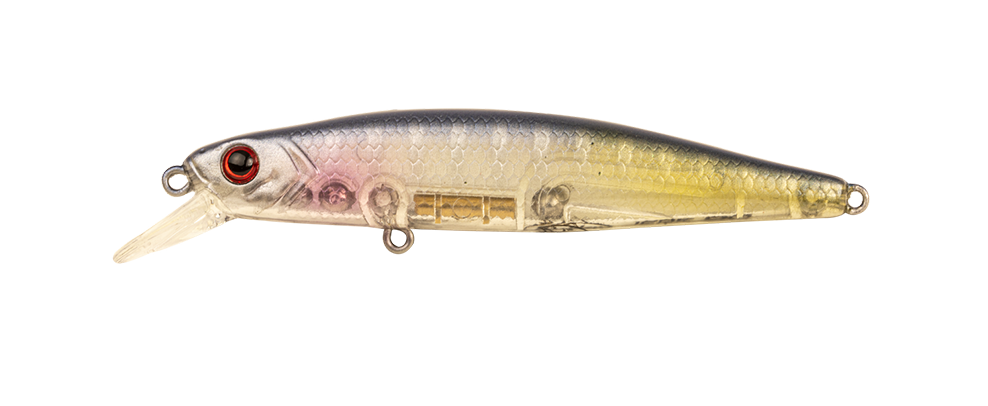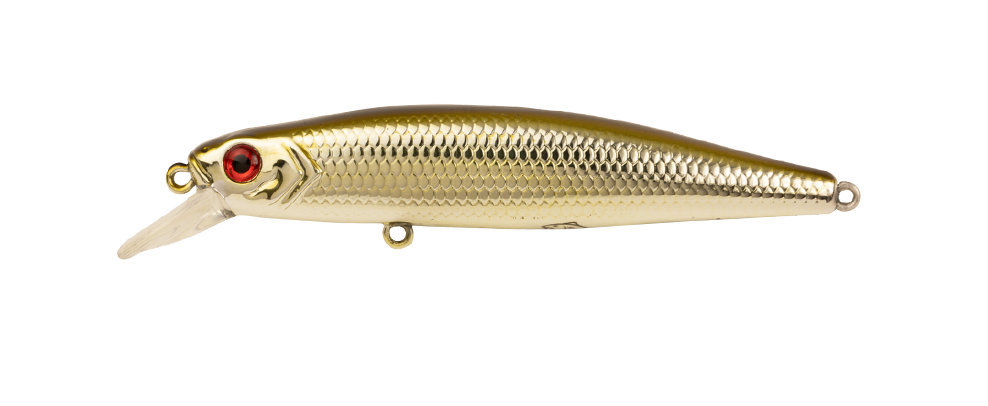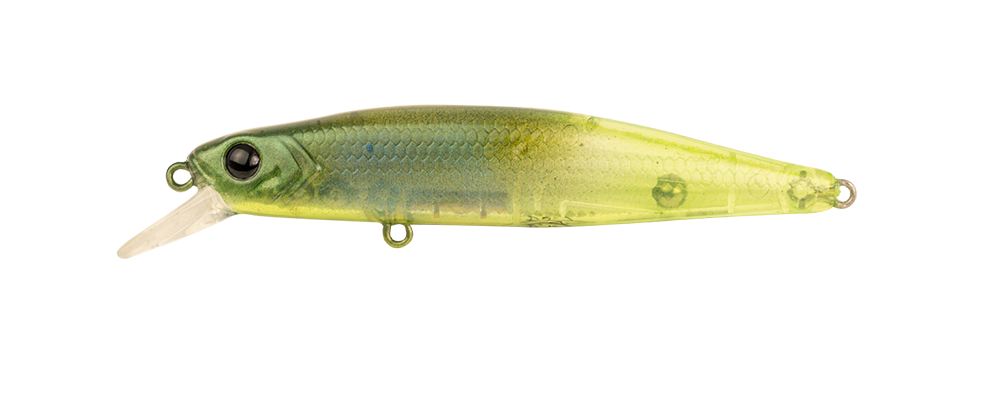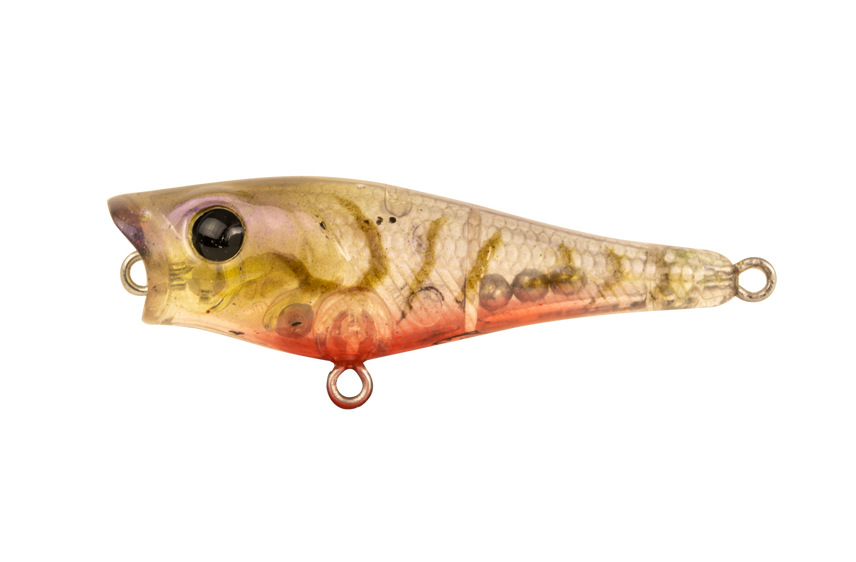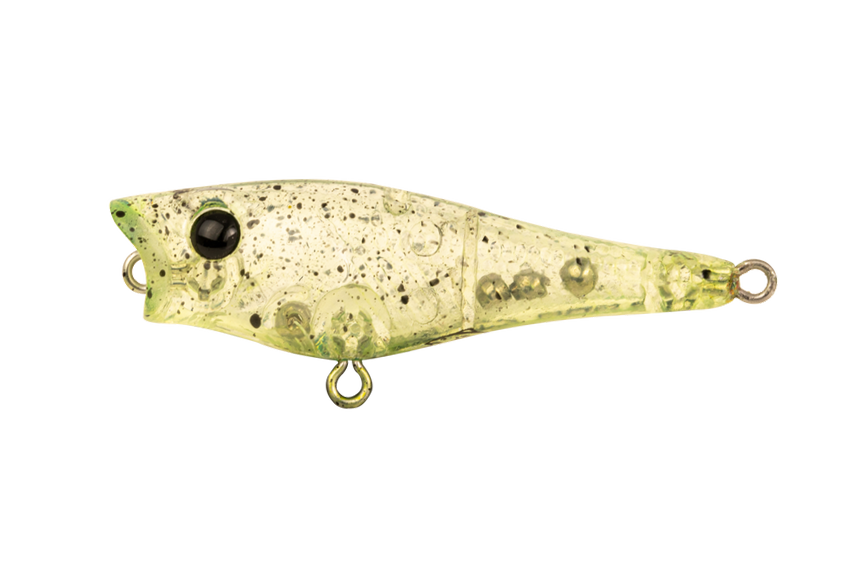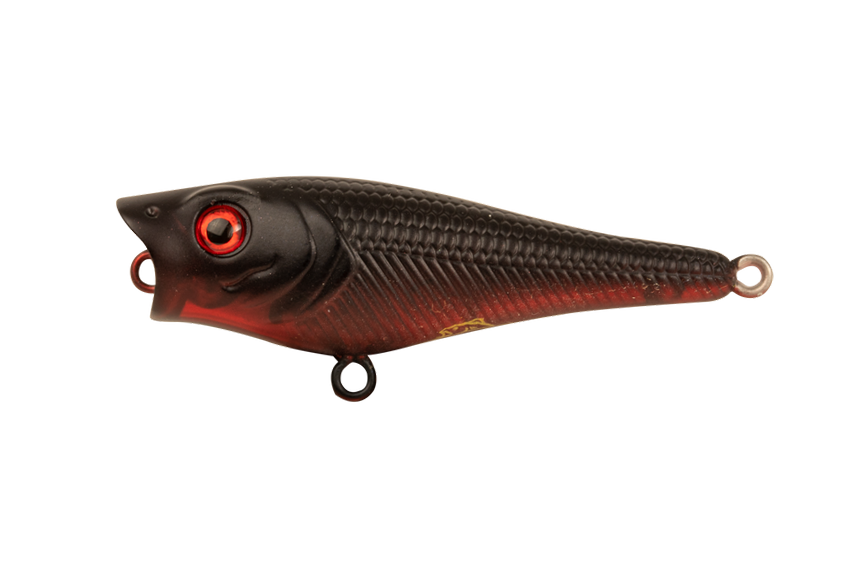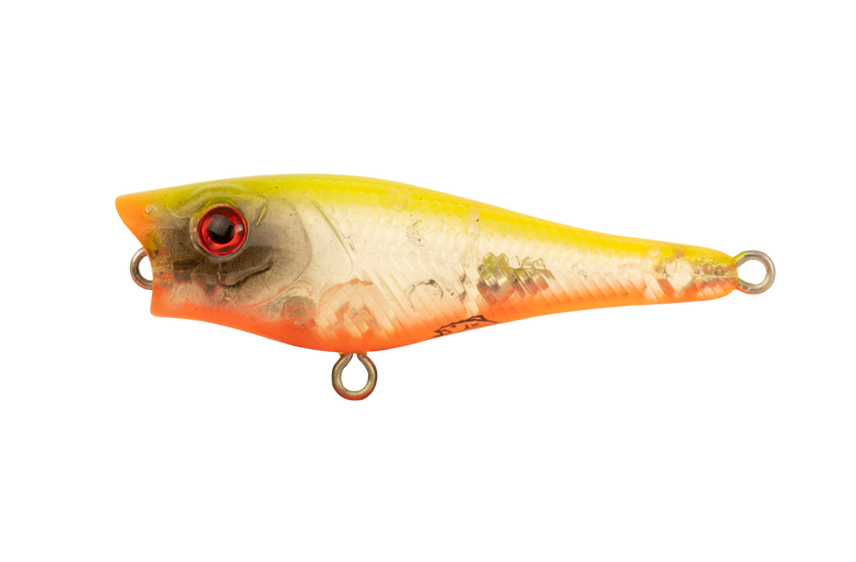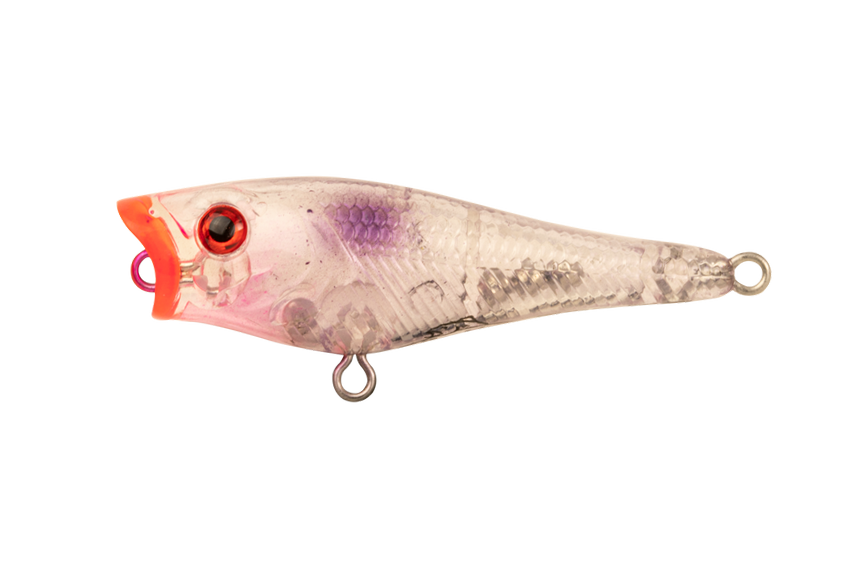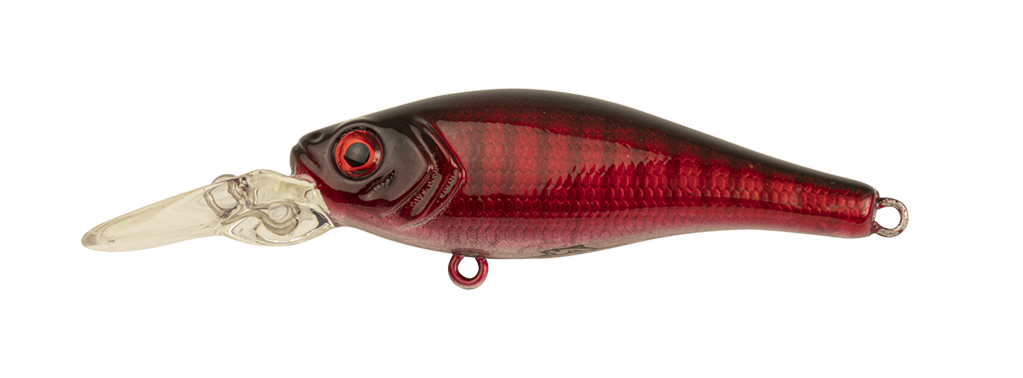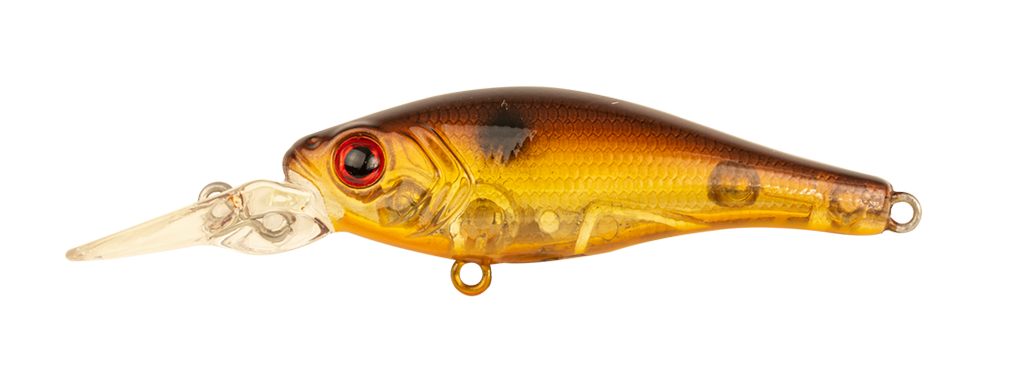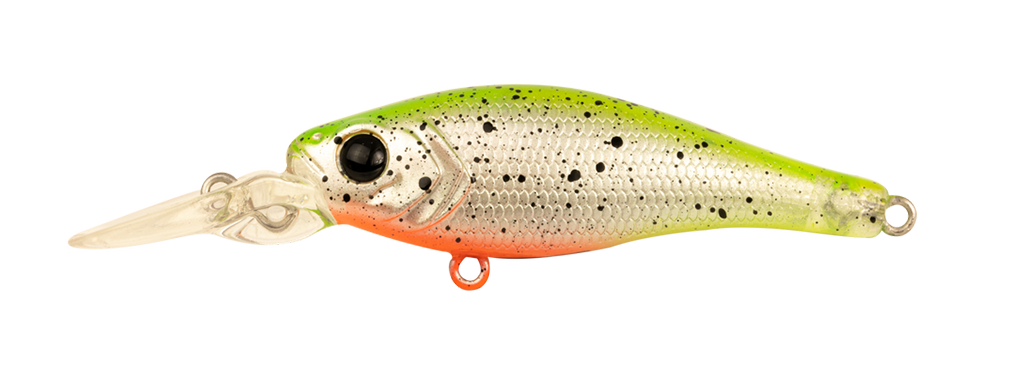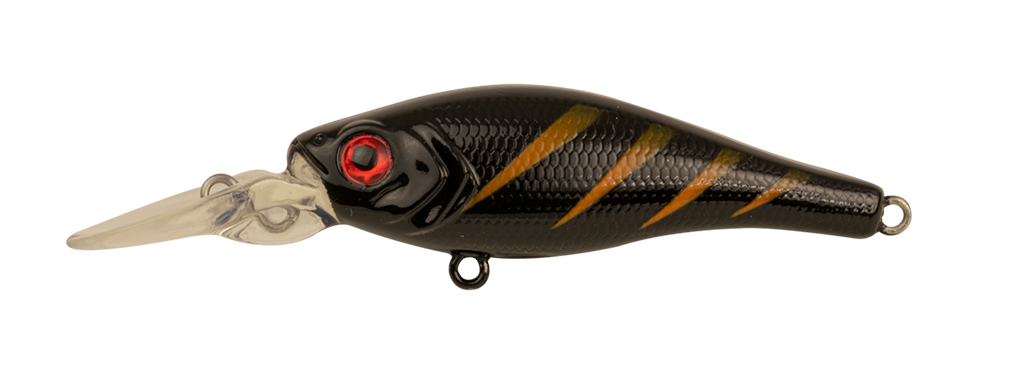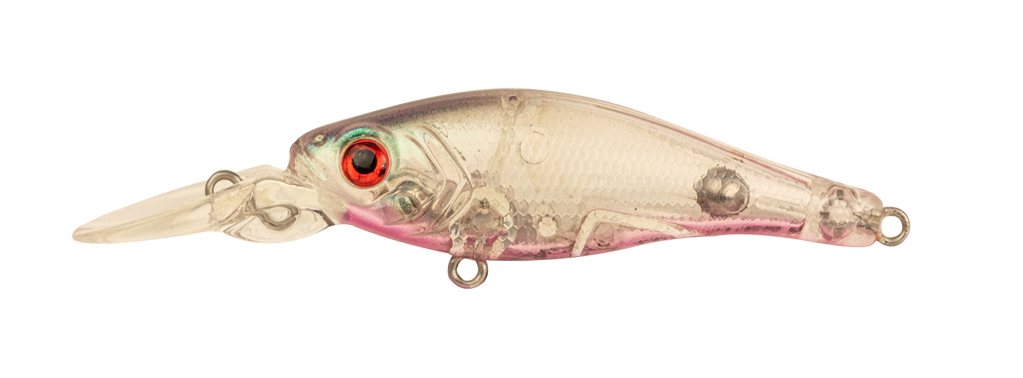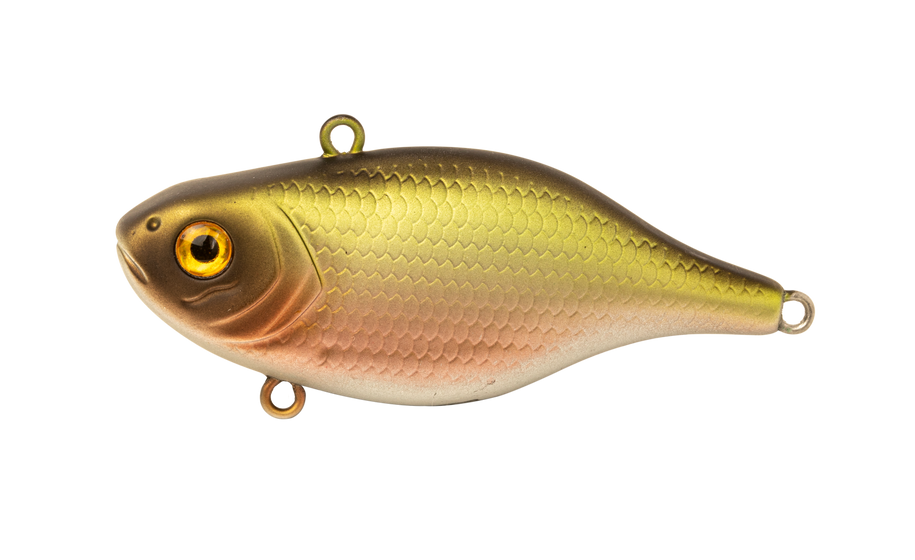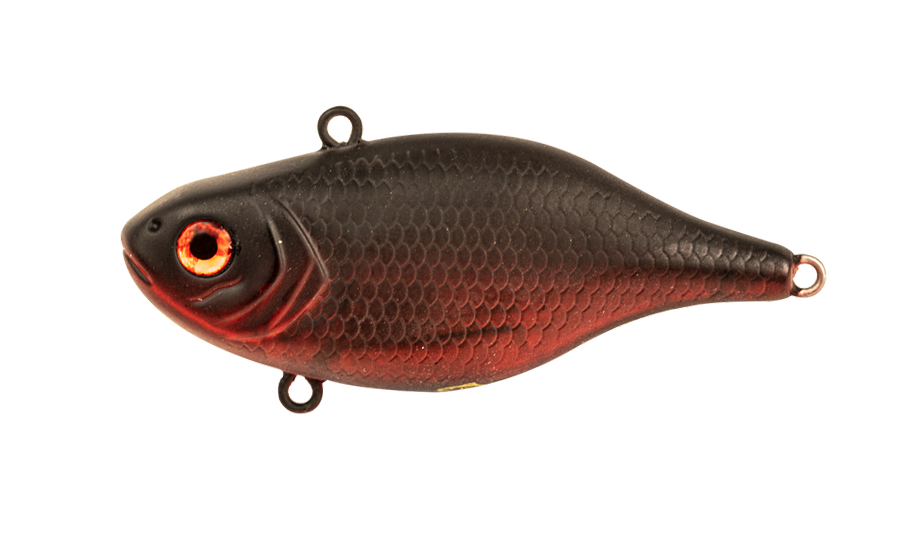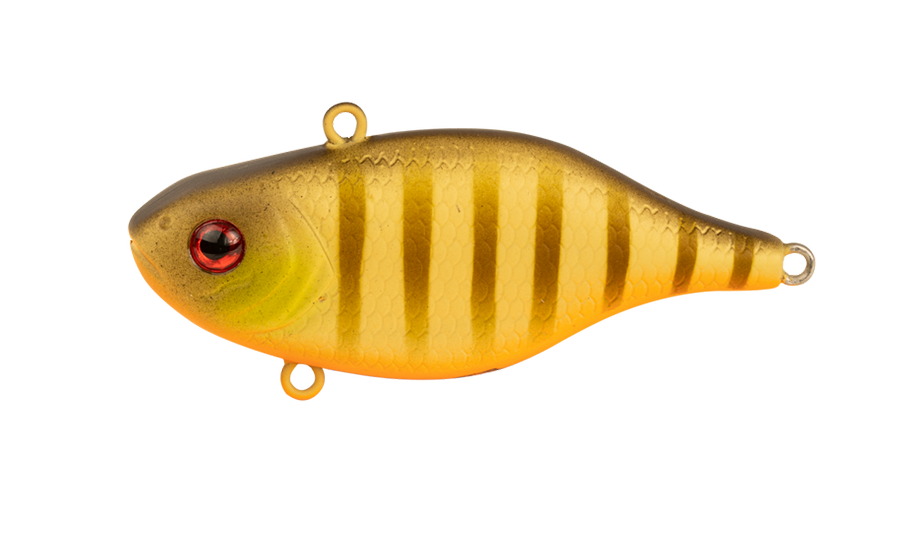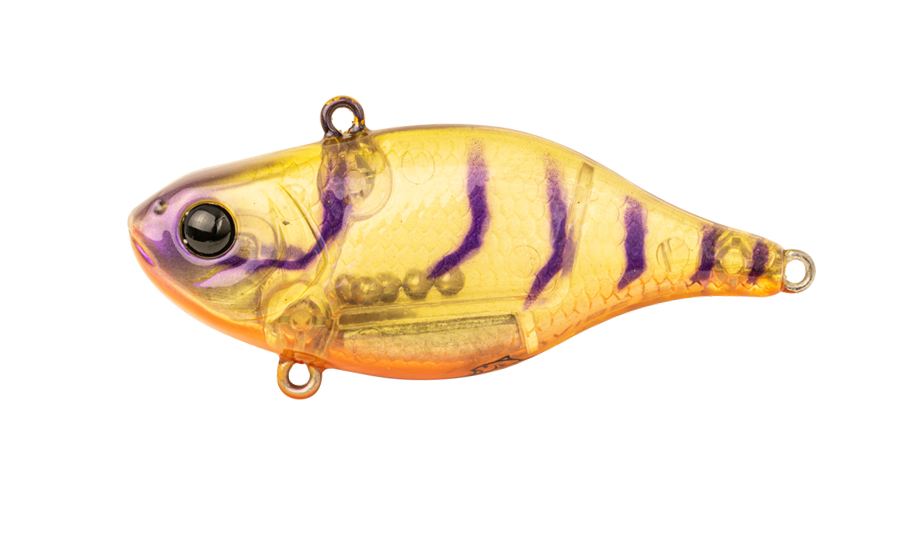NICE RIG!
What makes a classic soft bait shape? And why is a jighead the goto rigging style for so many people? Adam Royter explains.
Hydro-baby
Lure designers minds can feel like two parts of the same Mellon – the first half is thinking about how cool this lure needs to look to get noticed, and the second half is thinking about how it will swim. In the end, the lure needs to swim first and look cool second, or it quite simply won’t get off the starting line.
The study of motion in fluids is necessary for the creation of any lure – regardless of its shape. Whether it’s a ‘seemingly’ lifeless stick bait or a full-tilt, arms and legs mega bait, how it’s shaped will affect every part of it as it moves through the water.
The numbers show that people like it both ways when it comes to soft baits shapes. They like something with a hydro-activated tail, and they want something like a stick bait that has minimal to no action. The reasons for this boils down to how cunning fish are to fool and the tackle we have to deliver these lures.

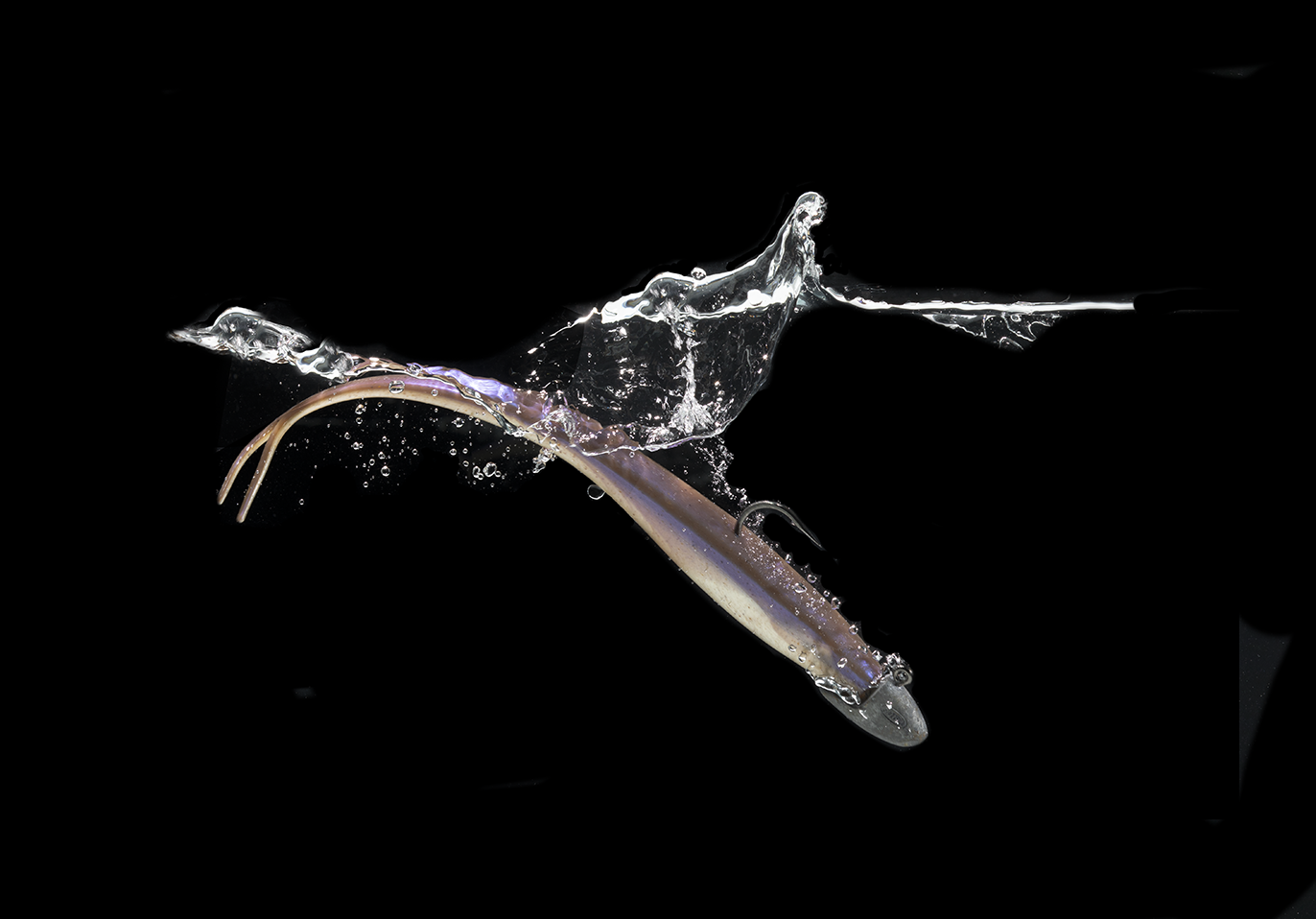
The single curl tail grub is possibly the world’s most popular soft bait shape. Designed by Mr Twister in the early ’70s, this bait shape still holds a lion’s share of the market – for a good reason! The tail shape is one of the most active shapes imaginable. Tuning the tail 180 degrees against the water flow created a fold that rotated it back onto itself, producing an unfurling or corkscrewing tail movement. Being able to deliver this much action with minimal water movement was what the fans wanted!
At the polar opposite side of the field is the jerk bait (stick bait). But also held in regards as one of the world’s most popular soft baits. This shape has near-zero hydrodynamic input and relies on action transmission from you to get it to swim.
These two baits are very different indeed and also go head to head in the popularity stakes. So why?!
Movers & Shakers
It should come as no surprise to you that some fish species are more aggressive than others. Some like to take their time and approach with caution while others are first to kick down the door.

This can be partly levelled at the fact that some fish grow up in large schools and continue this lifestyle while others depart for a more solitary existence.
Living with a few dozen of your brothers and sisters and fighting for food will always make you both aggressive and hungry. These fish very rarely shy away from a soft bait tail that has a lot of action. The fact that it makes so much activity is the calling card that gets the attention of these fish.
On the flip side is the fish that goes it alone. Quitely ambushing its prey and taking its time and looking at everything in its environment in great detail. This fish is far more susceptible to a more subtle approach of a stick bait.
That’s not to say that this is the only way to go! The variation on this is massive. But you get my point!
Alerting a fish, any fish, to the presence of your lure is a good thing. After all, you’re not going to catch anything if they never know you’re there! So using soft baits with some action is often an excellent way to start your day. The pace at which you can change your lure from one to the other when using soft baits is outstanding, and for this reason, you can afford the time to chop and change in the one spot till you get the right reaction.
The most critical element of this entire cast and retrieve method of fishing is the speed in which you bring the lure back to you. I learnt very early on from one of the most incredible lure anglers of all time – Rod Harrison. He said, “what’s your rush, the fish has got all-day, slow down by half and when you get to that point slow down some more”! Good chat!!

Hand-eye coordination is critical, and you most always keep an eye on your retrieve speed. Soft baits are soft, chewy, tasty, and fish will hold on to them for much longer than you think. So take your time with everything you do. Look at the target species and the foods that it naturally eats and trying to put your lure in the same boat.
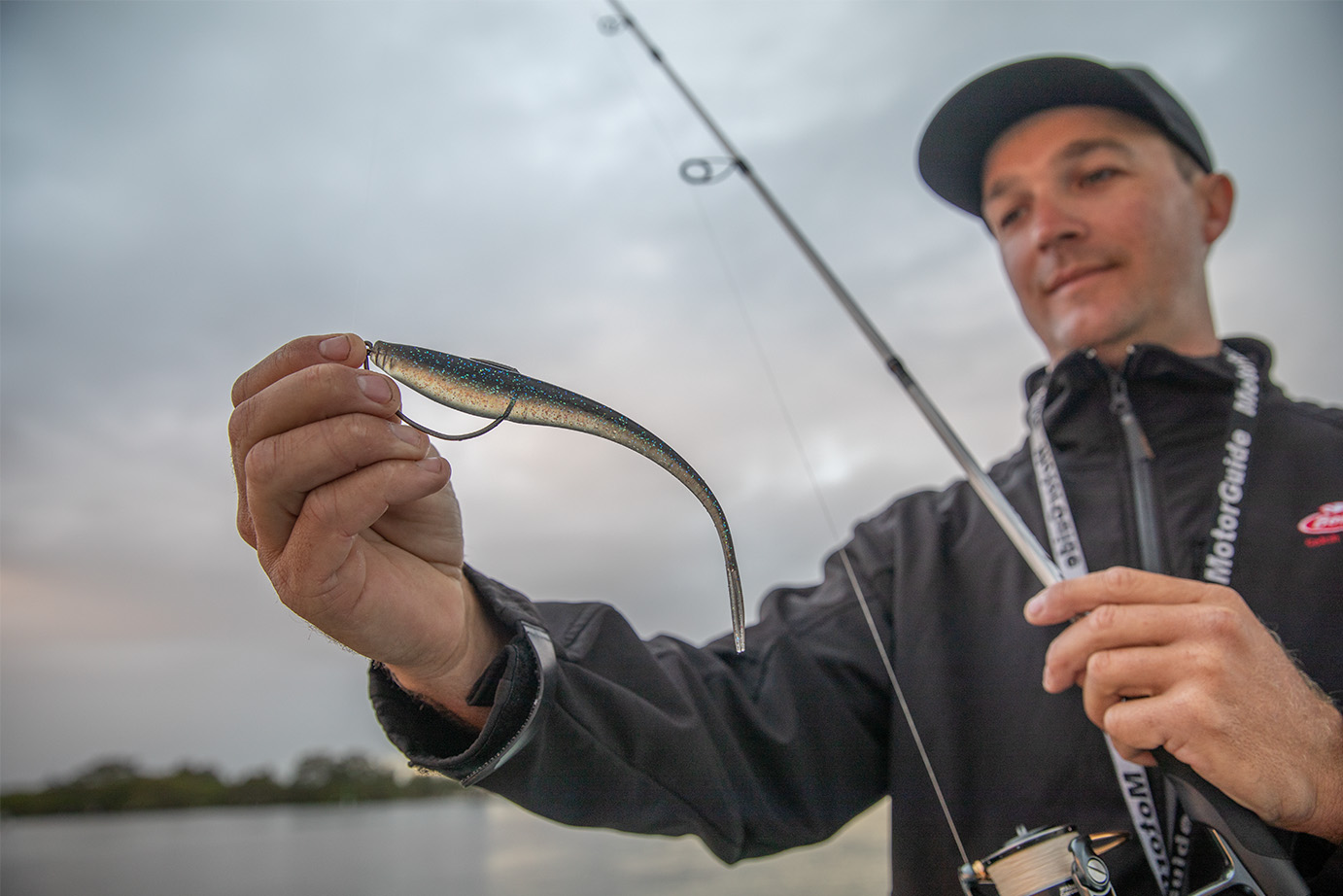
Rig Me Up
The humble jighead is by far the most popular way to rig your SB’s. The casting and sinking weight and the hook all in one is just such a good option for so many fishing styles and types – from trout to tuna.
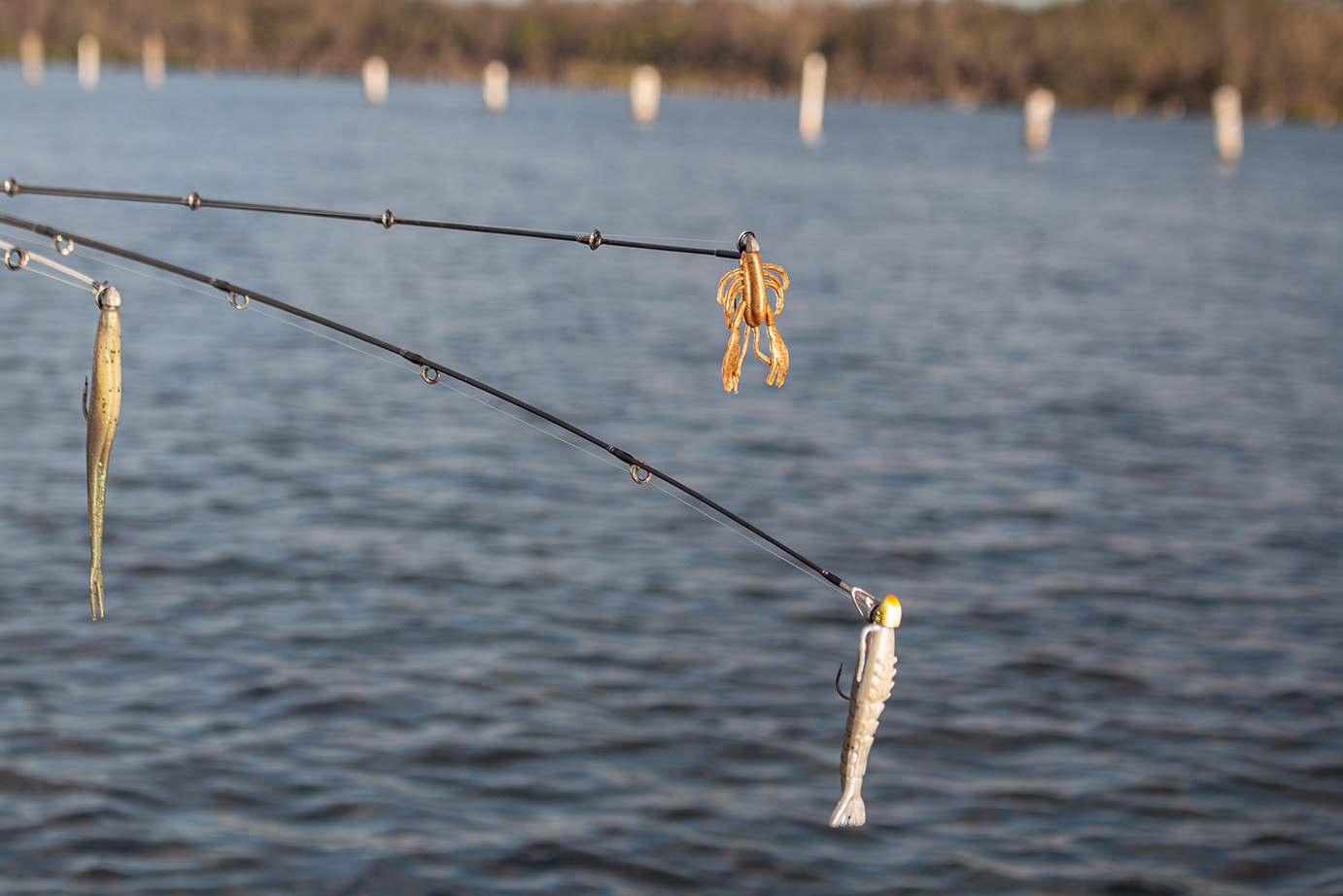
Here are a few general ‘rules of thumb’ to choosing your jigheads:
1/ Use the lightest weight as you can get away with. The distance and conditions your casting determine the weight you chose, and by the depth, you need to sink. By using the lightest weight, you can then expect to get a more natural and lifelike swimming action from your soft bait.
2/ Hook size is the next most obvious place to land. People tend to put too much emphasis on the hook ‘size’ when they should be looking at the ‘steel gage’ first! The bottom line of this is, you cannot set a heavy gauge, steel hook past the barb with the light drag setting that comes with finesse fishing gear. Also, you can quickly straighten a light gauge steel hook with a beefy drag setting that heavy equipment is setup with. Getting a good hook set and staying connected to the fish is the most critical part of angling. If not, it’s call casting, not fishing!
Hook size comes in second to the above, but while we’re here, you need enough hook gape so as the soft bait doesn’t block the bite radius of the hook and making sure that your hook is sitting somewhere in the middle third of the soft bait.
3/ Head shape. Possibly the only thing you ‘don’t’ need to worry about is the head shape. Making slight adjustments to the head shape will deliver virtually zero changes in the way it performs. At the end of the day, its’ a lump of lead on a hook! Next question.
4/ Good quality hooks are the most critical part about a jighead. If the hooks are any good, it’ll say what brand they are on the pack. Check for this before you handover your Apple Pay. All Berkley Nitro jigheads come fitted with Owner hooks which are second to none in quality.
RIGGING STEP-BY-STEP
1. Select your jighead and soft bait. Align the hook alongside the lure, noting how far along the body the hook point will exit.

2. Insert the hook point centrally in the head of the soft bait.
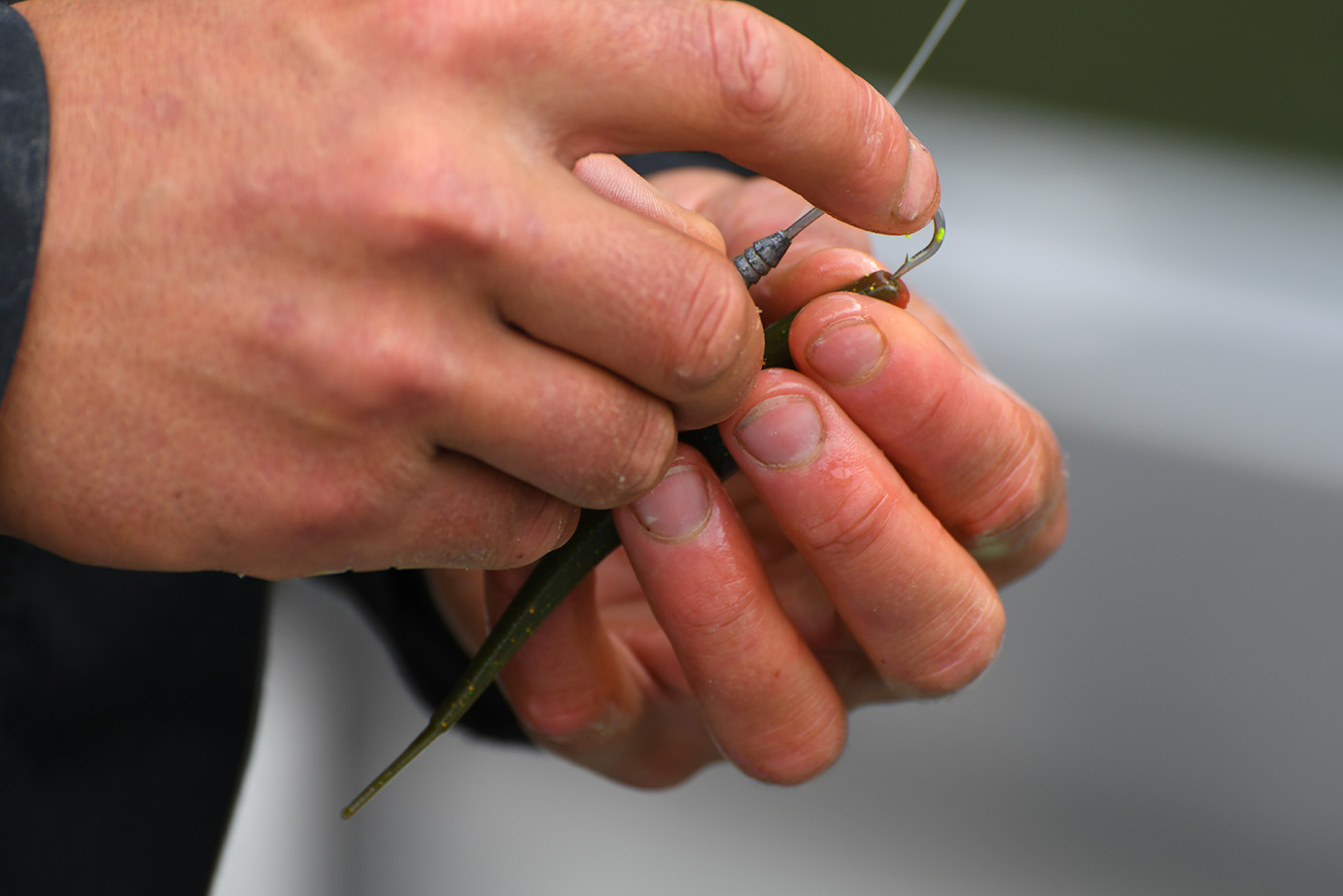
3. Push the soft bait onto the hook, doing your best to keep straight and centered whilst working around the bend and all the way over the lead keepers.

4. Check the side and top profile of the bait, to ensure it has rigged straight. Any significant bends will have a negative impact on the swimming action.
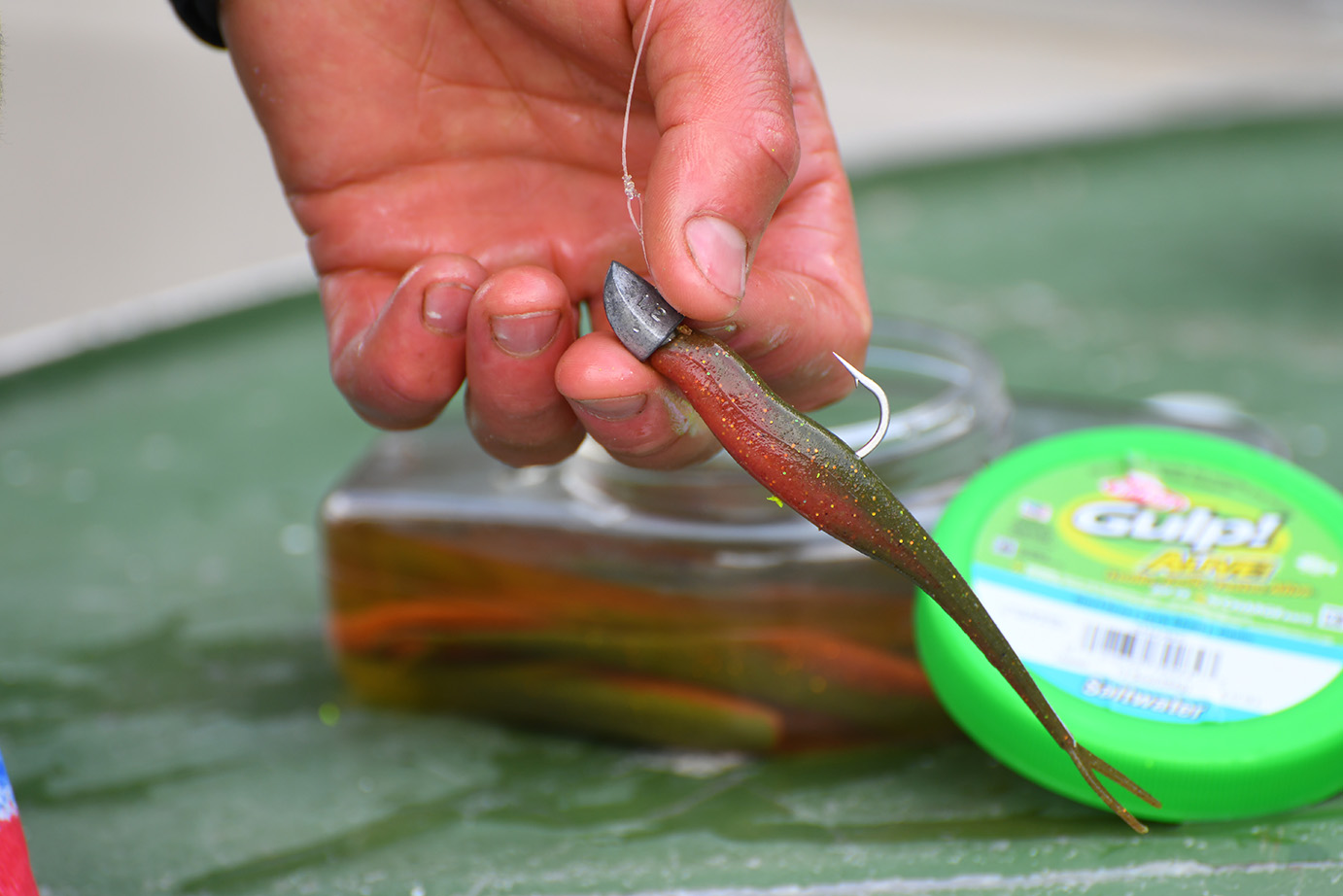
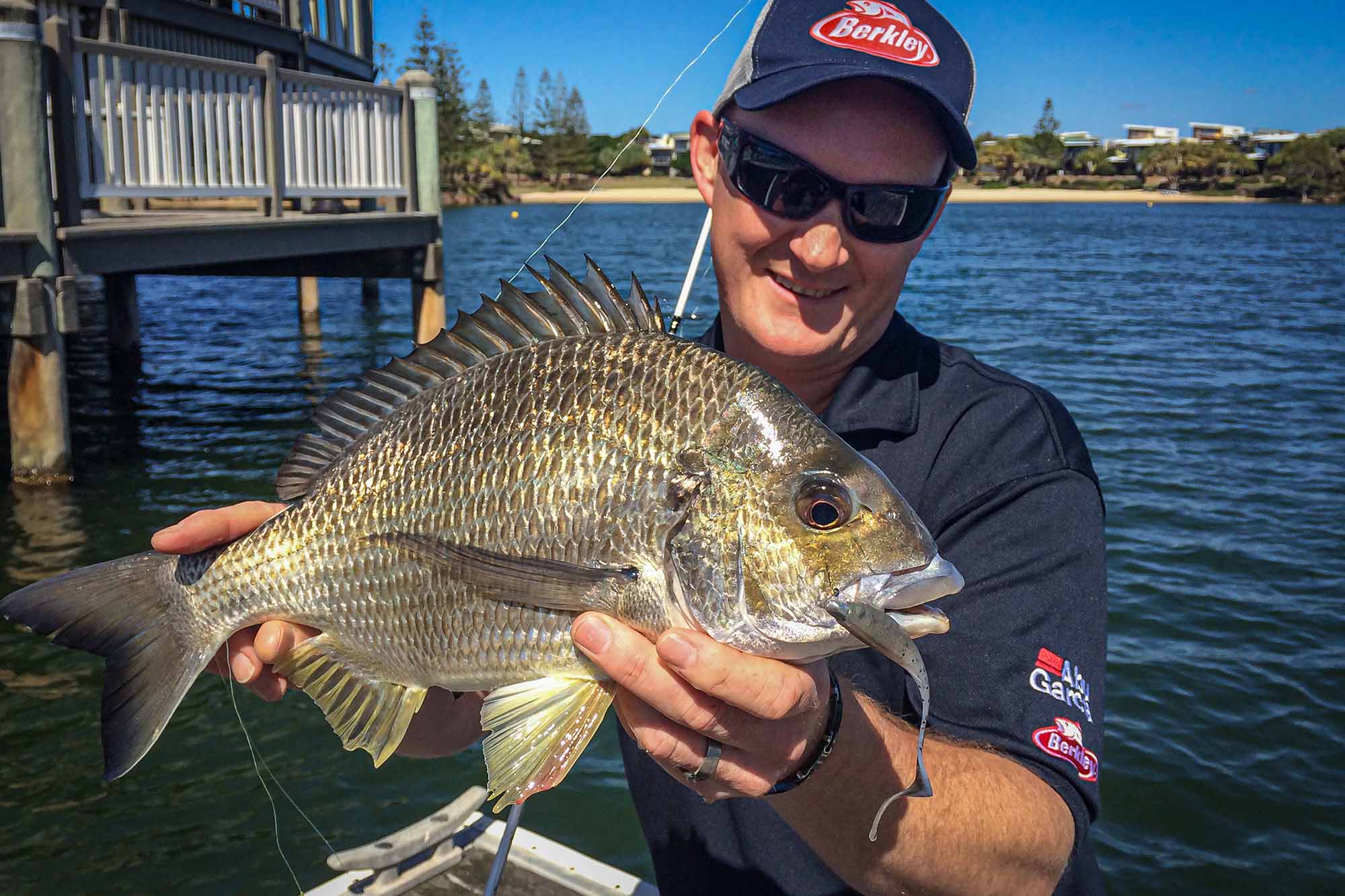
By Adam Royter
Adam has done a lot of fishing in his 40 odd years and has been a long-standing member of the Berkley Pro Team since Gulp!’s first introduction to Australia. A passionate ambassador for recreational angling, Adam is also one of the most recognizable characters in the Australian fishing industry.



